

Can You Drive to Alaska Without Going through Canada?
Alaska is the biggest US state by landmass, bigger than the three next largest states combined. But it’s one of two non-contiguous US states. It’s very remote and not directly connected to the other US states. If you’re planning a road trip to Alaska, you might be wondering how you’ll get there from the US. So, can you drive to Alaska without passing through Canada?
No, you can’t drive to Alaska without passing through Canada. This is because only one road connects Alaska to the rest of the world, and that road passes through Canada. There are four routes through which you can go to Alaska from the US. You also need to know a few things about driving to Alaska.
You can still go to Alaska by air or by sea directly without passing through Canada. But if you’re interested in experiencing this road trip, you need to know more about what the journey is like. In this article, we look at all you need to know about driving to Alaska.
Quick navigation
Can You Drive to Alaska?
It’s possible to drive to Alaska from anywhere in the United States apart from Hawaii. The Alaska Highway is the only highway that connects Alaska to other land areas, which means you’ll have to use this highway if you’re driving to the state. No matter where you start your journey, whether, in the United States or Canada, you’ll have to connect with this road eventually.
The Alaska Highway was opened far back in 1948 to connect the other 48 states to Alaska. Even though it’s generally called the Alaska highway, it’s a combination of Alaska Route 2, Yukon Highway 1, and British Columbia Highway 97. At first, the road was very difficult to travel and longer than it is presently. For example, it’s now 2,323 km instead of 2,700 km. Also, the road is now fully paved, which means it’s easier to travel.
Driving to Alaska from the US
The only way to drive to Alaska is through Canada. So, you’ll have to be driving from the US since that’s the only country that shares a land border with Canada. There are four different routes to get to Alaska, and the one you take will depend greatly on where in the US you’re driving from.
1. Fortuna or Portal border crossing at North Dakota
This is the route that most people travelling from the US will use. Through this route, you’ll have to drive through the Regina – Saskatoon – Edmonton road. It eventually joins with the Alaska Highway at Dawson Creek.
2. Piegan-Carway or Sweetgrass crossings in Montana
This route is for those travelling from Nevada, Idaho, Colorado, and Arizona. After entering Canada through Montana, they’ll have to drive through Calgary before joining up with the Regina – Saskatoon – Edmonton route from which they’ll join the Alaska highway.
3. Sumas Crossing after Seattle
Suppose you’re coming from the West Coast states of California, Oregon, and Washington State. In that case, you can use the Sumas crossing, which provides an alternative road instead of joining the Alaska highway around Dawson creek. This scenic route is about 2 hours faster than the regular route with mountains and forest. But it’s a tricky road and quite narrow. However, if you choose to use it, you’ll have to follow the Trans-Canada highway, pass through Cariboo Highway before joining Yellowhead highway. From there, all you have to do is drive the Stewart-Cassiar highway to get to Yukon, where you’ll join the Alaska highway.
4. Trans-Canada Highway
For those who live in faraway Maine, the Trans-Canada highway will be the ideal choice. But it’s unlikely that anyone would commit to driving 7,242 km to get to Canada.
How Long Will It Take to Get to Alaska?
The amount of time it’ll take to get to Alaska depends greatly on where you’re starting your journey. For example, those staying in British Columbia will take a shorter time to get to Alaska than those in Chicago. Generally, if you’re driving from the United States, you’ll need over 30 hours to drive into Canada. This will usually take up to 4 days unless you’re driving for most of the day and night. The drive from the Canada border with Alaska to Anchorage will take 8 hours which means an extra day trip.
What to Know About Driving to Alaska?
While a good road trip might sound fun, driving to Alaska is a tasking one which means you have to take extra precautions. Here are things you should know before driving to Alaska.
1. Winter Driving Isn’t Advisable
Apart from the length of the journey, driving to Alaska is more or less like driving to any other place. The road is well maintained and fairly straightforward. But driving in the winter can be treacherous and will take more time. It’s also very risky due to the remote nature of the place.
2. Driving Involves International Border Crossing
Driving to Alaska isn’t a road trip to Yellowstone Park; it involves crossing international borders twice, first when leaving the US to enter Canada and when leaving Canada to enter Alaska. Thus, you’ll need a passport to travel even though a visa might not be necessary. Crossing borders also usually require you to have a clean record, and if you have any criminal record, you’ll have to declare them. A recent criminal conviction might prevent you from entering. Also, it’s always better to leave firearms behind as this could also prevent you from entering. If it’s necessary, then file paperwork in advance.
3. Prepare Your Vehicle
Driving to Canada takes approximately one week for a one-way trip which means your car will be doing a lot of work. Thus, make sure you prepare your car for the trip. Tyres should be in new or near new condition, and every light on the car should be working appropriately. Pack spares of everything from tyres to bulbs, and make sure you have your toolbox with you.
4. Be Prepared
Apart from making sure your vehicle is in good condition, you should also be prepared. This means packing the right clothing, medicine, food, water, Maps, compass, etc. In addition, this trip will involve crossing many remote areas, so you should be prepared to spend the night in the wilderness in case of an unforeseen event.
In Conclusion
A road trip to Alaska can be a very fun experience. But it’s more than just a regular trip. It’s a very long one and involves going through Canada. So, you need to be prepared for anything on such a long trip.
Bell R Webster
Recent Posts
Can Ontario rpn work in Alberta?
Registered Practical Nurses (RPN) are an essential part of the healthcare system in Canada. They work in various roles such as hospitals, clinics, and long-term care facilities to provide care to...
What to do if you win the lottery in Ontario?
Winning the lottery is a dream that many Canadians harbor. A sudden surge of wealth can bring a lot of happiness and freedom. However, handling such a significant amount of money can be overwhelming,...
Driving to Alaska: Everything You Need to Know Before
By: Author Adam
Posted on Last updated: 17 July, 2024
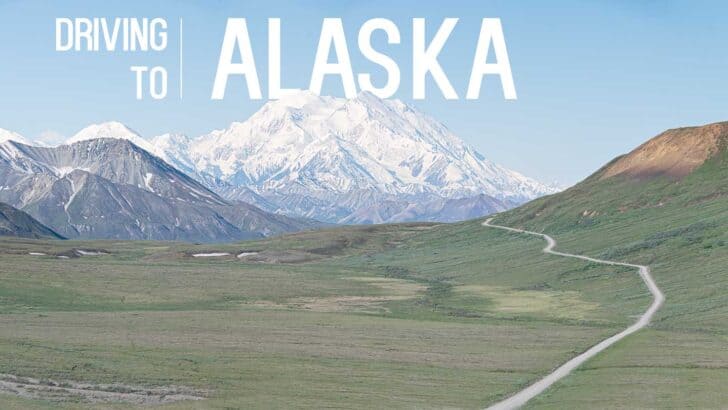
We put this Alaska road trip guide from what we learned by driving to Alaska the entire way, both north and south. Below is what worked well for us (and what didn’t) – to make your drive to Alaska even better than ours.
Are you looking for the ultimate road trip? The journey to Alaska from the lower 48 States is most travelers’ top road trips. It is one of our favorite road trips to date!
Before hitting the road, make sure to pick up the most up-to-date Alaska Milepost book here .
First of all, the drive to Alaska is much easier than most travelers expect. When most people envision the drive to Alaska and driving in Alaska, they start to turn into doomsday preppers.
Often people think driving the Alaska Highway will be all winter driving with crazy icy road conditions the entire journey. WRONG!
Most travelers think they’ll need three spare tires and gas cans strapped to every flat surface of their vehicle. Driving in Alaska isn’t nearly what you think, and the entire Alaska Highway is better than you think.
You do need to prepare when you drive north to Alaska, but not like this. We’ll explain – while giving you all of the Alaska by car tips, the best routes to Alaska, the best scenic stops along the Alaska Highway, and itinerary advice for the Alaska drive for this epic adventure!
We get several comments & emails every week asking what to pack when driving to Alaska. Here is our list of must-have items on Amazon.
You should really start with a copy of the Milepost Alaska travel planner. It will help you get detailed information to plan your trip, and it’s even better to have it in the car when driving—because there is not going to be cell service, let alone internet, for most of the drive to Alaska and along the Alaska Highway.
Click Here To Buy The Milepost 2024 Edition
2024 Milepost – Best Alaska Map for an Alaska Road Trip
Can you drive to alaska in 2024.
Yes, you can drive from the US to Alaska in 2024. There are NO COVID-19 requirements for entry into Canada. You can now cross the Canadian border from the States like before COVID-19 ever happened.
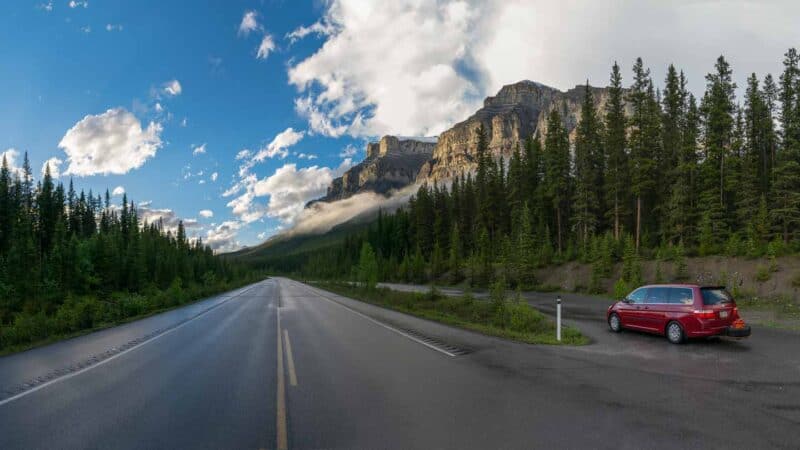
Best Guidebook for Driving to Alaska
The best or only real guidebook is the Milepost book . If you are making the journey, you should probably have one of these. We recommend picking one of these up well in advance of your trip to help plan.
The #1 thing to buy for a trip to Alaska, it helps plan & you’ll need it in the car when driving!
It takes some time to get used to the layout, but once you do, it will have more info than you’ll ever need on all the Alaskan roads & Alaska Highway and the route to Alaska through Canada. You can order the Milepost book online here .
Cell Phone service and Best Carriers for a road trip to Alaska?
Cell coverage on the ride up to Alaska was better than expected for the most part but still a lot worse than the roads. Once you are north of Calgary, expect very little service along the Alaska Highway except in the small towns. While traveling through small towns, you will almost always have cell service, and most will also have data too.
Best Satellite Communicator To Have
If you’re driving by yourself or have a loved one driving to Alaska alone and you want some extra piece of mind, you should consider packing a satellite communicator . A satellite communicator can send messages, emails, and emergency SOS messages. For less than $200, it wouldn’t be a bad idea to have it.
- Buy Now 2024 Best Satellite Communicator
In Canada – Many U.S. carriers extend their plans into Canada at no extra cost. We found T-Mobile shared towers with many Canadian carriers and worked better than our Verizon line for both calls and data. It’s best to contact your carrier to see how your plan will work in Canada before switching it on across the border.
In Alaska – Cell and data coverage are overall better than in Canada, but it is the U.S., so many carriers will switch to roaming, which is limited on most plans. There is better coverage between towns in Alaska than in northern Canada, but mostly for calls, the internet is still limited to the towns and cities. AT&T and Verizon, according to locals, are the best for coverage in Alaska. We had a Verizon line, and it worked all right, but it was still pretty limited.
Our T-Mobile line picked up GCI a majority of the time. We were told by T-Mobile we only got 200MB of roaming data included in our plan, but it never shut us down. We called to inquire how much data we had used in Alaska, and they said 0 MB. So, we were able to use our T-Mobile with no problems the entire time. GCI has prepaid options from $20+, depending on how much data you need. GCI is Alaska’s largest wireless network and fastest 4G network.
Related Article: Things To Do In Homer Alaska
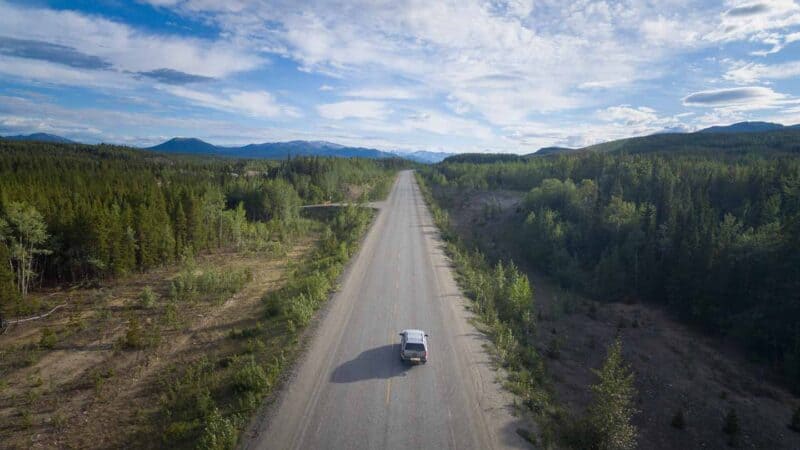
Best Vehicle to Drive to Alaska?
ANY vehicle is capable of making the drive to Alaska in the summer months. You don’t need a 4×4 or anything crazy. We’ve seen motorcycles, full-size RVs, trucks with a 5th-wheel camper, and even our basic grocery-getting minivan was fine on the Alaska Highway.
If those giant RVs pulling cars can make it on the roads, so can your car. Our 11-year-old DIY campervan made the drive to Alaska without issue. Click here to watch our YouTube video and see what our van looks like.
It’s a good idea to make sure your vehicle is in good mechanical order because from anywhere in the lower 48 of the U.S., a drive to Alaska is at least 48 hours of drive time.
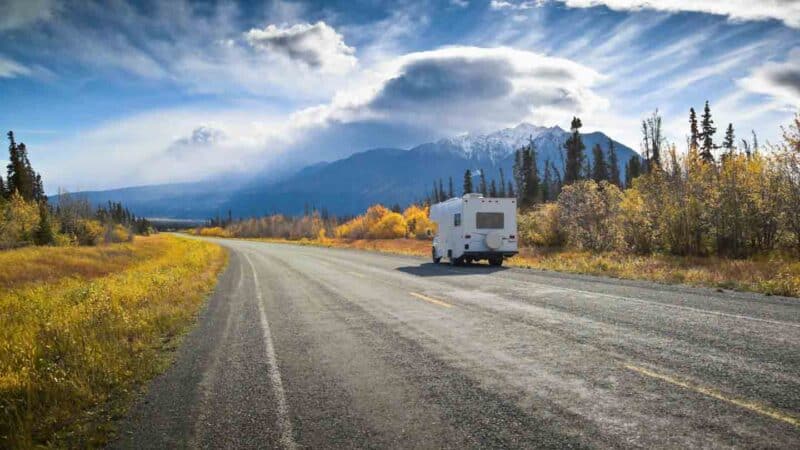
Driving to Alaska FAQ
Q.) Is driving to Alaska worth it?
A.) Yes, driving to Alaska is absolutely worth it! I am positive anyone who has made the drive will agree. There’s nothing quite like it, and you get to see so much along the way.
Q.) Is it safe to drive the Alaska Highway?
A.) Yes, driving to Alaska is generally safe, and so is the Alaska Highway. There are normal road hazards, but with normal, careful driving and some planning, you should have a safe trip. If you do run into trouble, people along the highway tend to help each other out.
Q.) Can you drive to Alaska without going through Canada?
A.) No, you can not drive all the way to Alaska without going through Canada. However, with the use of the Alaska Marine Highway system , you can take your vehicle to Alaska without going through Canada – just a short 97 hours on the ferry.
Q:) Can you drive to Alaska during the winter months?
A:) Yes, the Alaska Highway is open year-round. See more below about driving to Alaska during the winter.
Q.) Can I drive through Canada to Alaska without a passport?
A.) No, you need your passport. It’s required to cross the Canadian border into Canada and back into the United States when you read Alaska.
Q.) Can you drive to Juneau, Alaska?
A.) No, you can not drive to Juneau without the use of ferries. There are no routes to Alaska that enter Juneau by car without taking the ferry. If you want to bring your car, you will have to take the car ferry to Alaska.
Q:) What month is best to see the Northern Lights in Alaska?
A:) Between August and April is your best chance of seeing the Northern Lights in Alaska. If you are driving the Alaska Highway driving back to the States, plan to spend a few days in Fairbanks. Fairbanks is one of the best places in Alaska to see the Northern Lights.
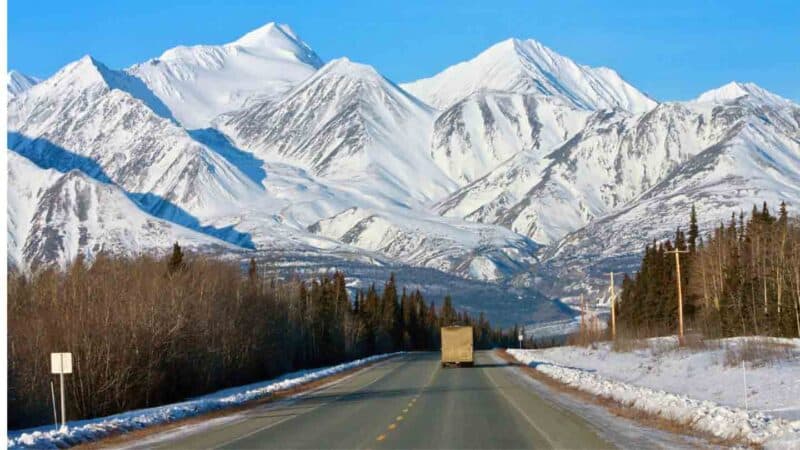
How are the Roads to Alaska on the Alcan Highway in 2024?
In the middle of the Summer of 2022, there was a section of the Alaska Highway / Alcan highway that was washed out just south of the British Columbia and Yukon Border—apparently caused by a beaver dam that gave way (yes, really) and flooding. There has since been a 3 km detour created to reopen the flow of traffic. It is unclear at this time when this portion of the Alaskan Highway will be fully repaired.
In most years, the condition of the roads will depend on how tough the winter is and how much it heaves the roads. Overall, on our last trip, the roads were far better than we expected while planning an Alaska road trip.
For the vast majority of the drive to Alaska, the road is a two-lane asphalt paved highway with a gravel shoulder large enough for a standard vehicle. There are passing lanes periodically, but the traffic is very thin, and passing is generally not an issue.
When is the Best Time to Drive to Alaska?
The best time to drive the Alaska Highway is from May to September. During the summer months, the road conditions on the Alaska Highway will be at their best.
During the summer, there are more hours of daylight, the best driving conditions, and more services are open along the Alaska Highway. Several places close during the winter months, as very few travelers make the journey during the winter.
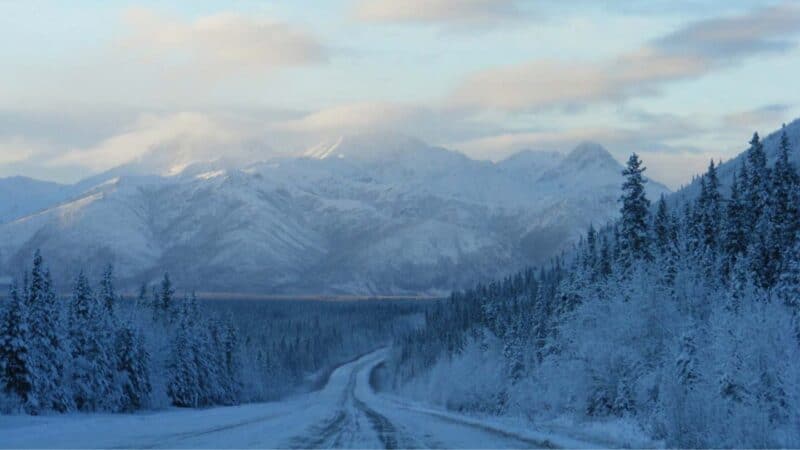
Driving The Alaska Highway in Winter
The road is less traveled due to shorter hours of daylight and winter driving conditions. Be prepared for icy road conditions and snow-covered roads. Don’t rush. Give yourself plenty of time when driving to Alaska during the winter.
If you are up for this adventure, make sure you are prepared and have a backup plan! Always have extra gas with you. Gas stations along the Alaska Highway in the winter have very limited hours. Expect extreme cold temperatures. Make sure you have the appropriate cold-weather clothing and gear in your car.
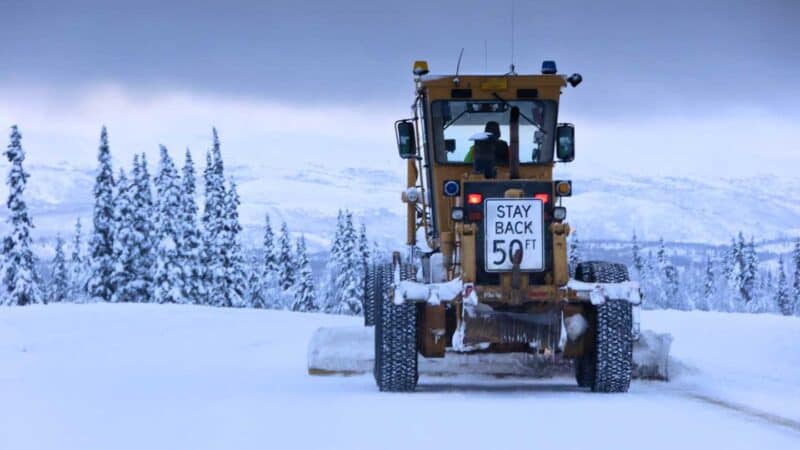
The road conditions and driving will be worse in the Yukon and the interior parts of Alaska in the winter. The chances of seeing wildlife along the Alaskan Highway are much less.
*Note that winter tires are required when driving in British Columbia from October 1 to March 31.
Can you Drive from Seattle to Alaska?
Yes, you can drive from Seattle to Alaska. There are two route options. Both of the routes below have you driving from Seattle to Prince George, British Columbia, along the Trans-Canada Highway. Once you are in Prince George, you will have two routes to choose from.
Most travelers cross the Canadian border at the Sumas-Huntingdon border crossing, which is just north of Seattle and is open 24 hours a day.
You can either take Highway 97, which will connect with the Alaska Highway in Dawson Creek, or we suggest driving the Cassiar Highway.
The Cassiar Highway is technically shorter in distance than the Highway 97 route, but it is the longer route from Seattle. It is 100 miles shorter, but the Cassiar Highway is more remote and the more scenic route, in our opinion. It is less traveled, only a two-lane road, has a lower speed limit, and offers a better chance of seeing wildlife. The Cassiar Highway joins the Alaska Highway by Watson Lake in the Yukon Territory.
If you decide driving Highway 97 from Seattle is your preferred route, you will drive the entire Alaska Highway starting at Mile 0, which starts in Dawson Creek. Highway 97 is the fastest route in regard to time and has more restaurants, hotels, gas stations, etc., along the route, but it is 100 miles longer.
Both Highway 97 and Cassiar Highway are scenic drives through British Columbia with high chances of seeing some wildlife along the way. You could drive to Alaska from Seattle via Highway 97 and then drive Alaska to Seattle on the Cassiar Highway. That way, you can experience each route.
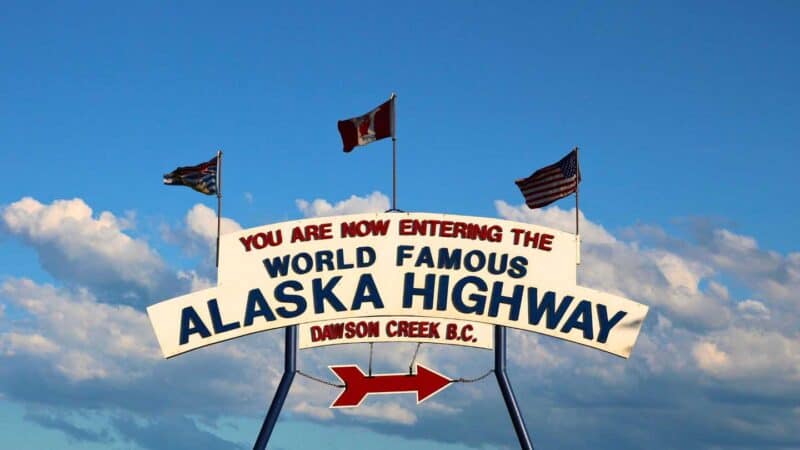
Quick Alaska Highway Facts
The Alaska Highway is 1,382 miles/2,224 km long and starts in Dawson Creek, British Columbia, and ends in Delta Junction, Alaska.
The highway is open year-round. The road, for the most part, is paved the entire length of the highway. You will run into patches of construction along the route.
It once was 1,422 miles long, but after some rerouting and construction, the highway in Alaska is now 40 miles shorter. You may notice this if you pay attention to the mile markers. Alaska has yet to change its mile markers to the new length. You may notice this when you cross the Alaska-Yukon border.
The Alaska Highway is also known as the Alcan Highway. It got the name Alcan by shortening Alaska and Canada.
The Alaska Highway ends in Delta Junction, Alaska. Many travelers think it ends in Fairbanks, but that is incorrect. The Delta Junction to the Richardson Highway, which goes to Fairbanks.
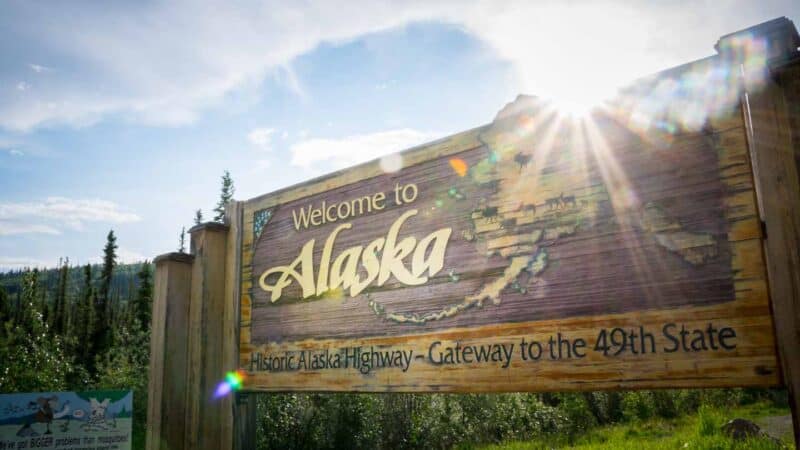
How Much Time Do I Need in Alaska?
Alaska is a massive state, and how much you will see will depend on how much time you have. We would suggest you spend about two weeks in Alaska at minimum (more is better) to see most of the drivable highlights of the state. A longer trip is better than a short trip.
If you don’t have a month to drive to Alaska, you should probably fly to Alaska and make an Alaska road trip instead. Most Alaska road trips start from Fairbanks or Anchorage, as they have the best flight options. Whether you are flying to Alaska from California, New York, or Wisconsin, like us, there are daily flights to Alaska. We would suggest flying into Anchorage and renting a car to start your journey.
While there are many amazing things to see on the way to Alaska, you don’t want to have to get all the way there to turn around. There are several amazing National Parks in Alaska and Canada, tons of wildlife, including moose & bears, often right along the Alaska Highway, and you can’t forget the gorgeous Canadian Rockies.
Renting a Car in Alaska
If you want to explore Alaska by land but don’t have time to drive the whole way, you can rent a car in Alaska or rent an RV.
Car rental prices in Alaska are NOT CHEAP. I am talking $150+ a day.
There is such a short season, and rental cars in Anchorage and Fairbanks airports are in high demand. Once you know your travel dates and are planning your adventure, book your rental car now. We book online here .
Most rental cars come with unlimited miles (but double-check your terms). If you have time, see if you can explore Canada and Alaska. That way, you could make a mini adventure to the Yukon as well.
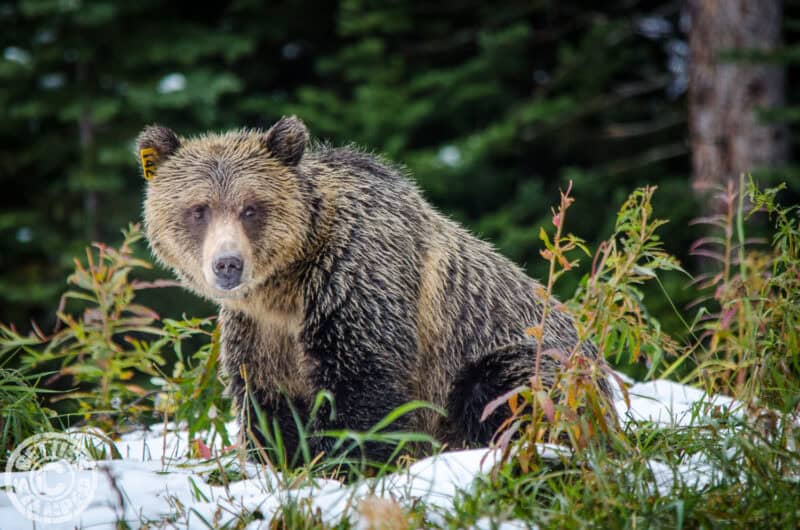
Wildlife along the Alaska Highway
We saw sooo many moose and bears just off the road. There become a point where we stopped pulling over to take photos or just watch the wildlife.
The best time to see moose in Alaska is September and October during their breeding season.
The best time to see bears in Alaska is from July through September. We saw more bears along the highway in the Yukon. You most likely will not see a bear in Alaska if you are on an Alaska road trips.
We shouldn’t have to say this, but keep your distance. Do not get out of your car and approach wildlife!
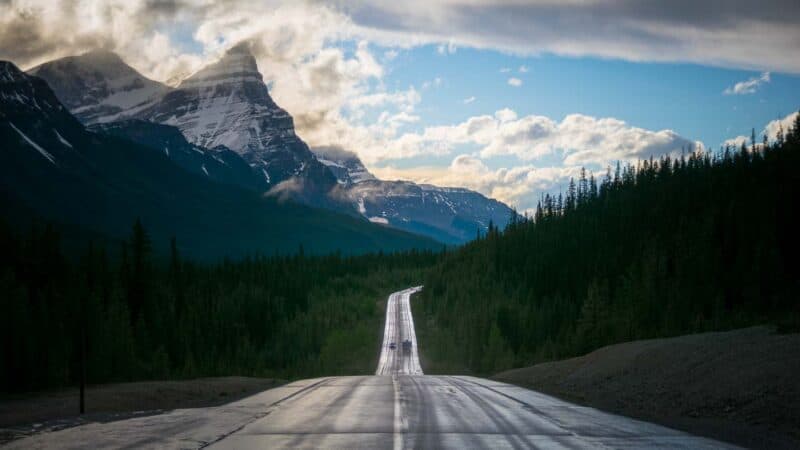
How Much Time Do I Need to Drive to Alaska?
Keep in mind while planning you are going to need at least a week to drive up and another week to drive home from Alaska. It can be done quicker, but then you are going to miss some of the greatest sights in North America and the Rockies.
Two weeks of drive time will allow you to make some stops and actually enjoy the journey – again, if you don’t, you might as well fly to Alaska. See our Alaskan road trip guide and itinerary for everything to see while in Alaska.
Actual drive times will depend on where your trip starts. The time is really dictated by what you want to see along the way. Do you want to drive right through the Yukon, or do you want to see some sights? We suggest one week to drive safely to Alaska without too many stops.
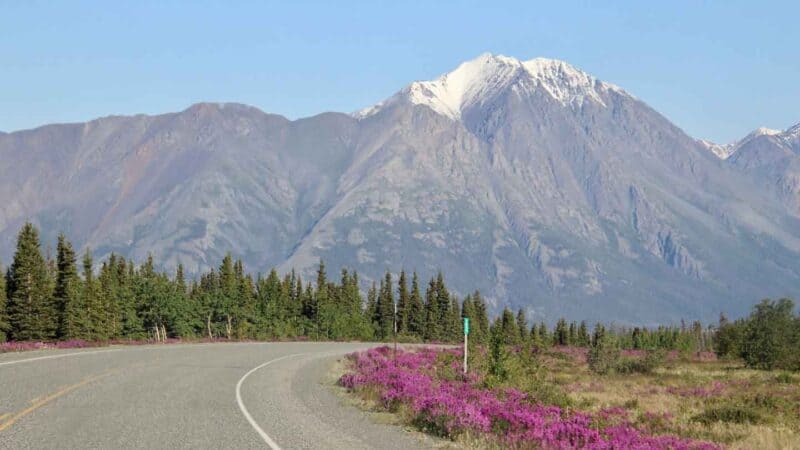
The Best Route to Drive to Alaska and Road Trip Itinerary
If your goal is to get to Alaska the fastest way possible, you’re better off flying to Anchorage and renting a car in Alaska. As they say, it’s not the destination; it’s the journey.
There are lots of AMAZING things to see on the way to Alaska, and you should make time to see them along the way. You might want to take one route there and another back, possibly going back through Seattle one way. We wish we had had time to drive the Cassiar Highway and make the drive from Alaska to Seattle.
From the eastern half of the United States, most map programs will have you travel through North Dakota into Canada to Edmonton and then finally join the Alcan Highway in Dawson Creek. Take this route if you like loooooooong stretches of flat, boring land. However, if you add just 9 hours of driving to your route, you can see some of the most fascinating landscapes in North America.
Here are our perfect routes to Alaska. No matter which part of the country you are coming from, it would be a road trip sin not to stop in the Canadian Rockies. Make time in your itinerary on either the way to Alaska or on the journey home. No matter which route you take, you’ll be going through the Yukon Territory and British Columbia and jumping on the Alaska Highway near Dawson Creek.
Since everyone is coming from somewhere different, this addresses the Canadian and Northern US portions of the route only. You should allow a minimum of four weeks for this route, and 5-6 weeks would be more comfortable. For the Alaska portion of the suggested itinerary, see our Alaska Road Trip itinerary and guide.
Related Article: One of Alaska’s Best Kept Secrets – Hatcher Pass
Essential Stops on the Drive to Alaska:
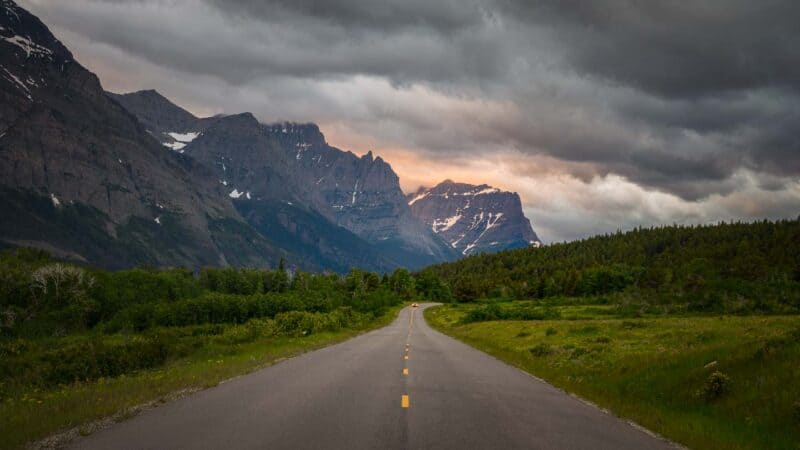
Glacier National Park – Montana, USA
If you are in a hurry, you can cover most of the driving highlights of this park in a single day. However, if you have time, we suggest about three days to properly see Glacier National Park . It is one of our favorite National Parks in the United States.
The high mountains can cause weather issues (even in early summer). Extra time would allow a better chance to see this stunning park under blue skies.
If you’re short on time, at least drive the Going to the Sun Road that crosses the park. If you have more time, take in a sunset at our favorite spot, Two Medicines Park Road, or hike the Avalanche Trail.
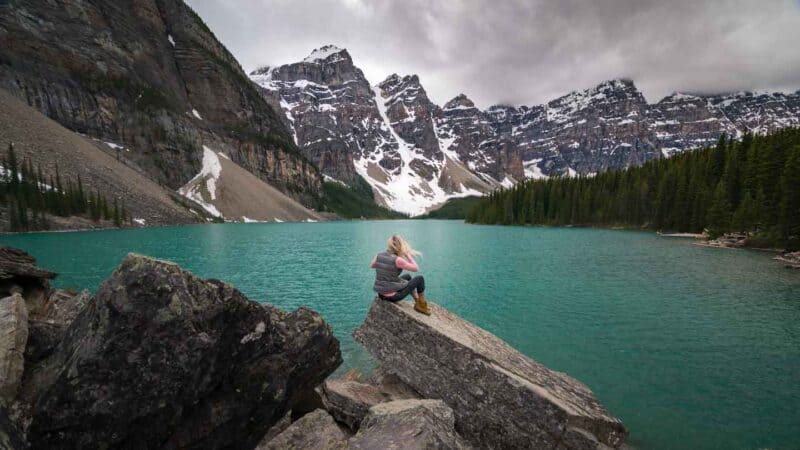
Banff National Park – Alberta, Canada
One of the most picturesque places on the continent, Banff, should really be part of your trip. A trip to British Colombia requires a few days in Banff National Park. Even those in a hurry should plan three days to take in the sights between Banff, Jasper, and the Icefields Parkway.
Places not to miss while in Banff are Moraine Lake, Lake Louise, Peyto Lake, and Bow Lake.
If you have more time, three days in Banff will cover the major highlights. If you’re really short on time, you can jump on a Banff helicopter tour and see the park from a whole other level. Banff is a well-known ski area, but year-round, there’s so much to see and do in Banff.
Related Article: Things to do in Banff
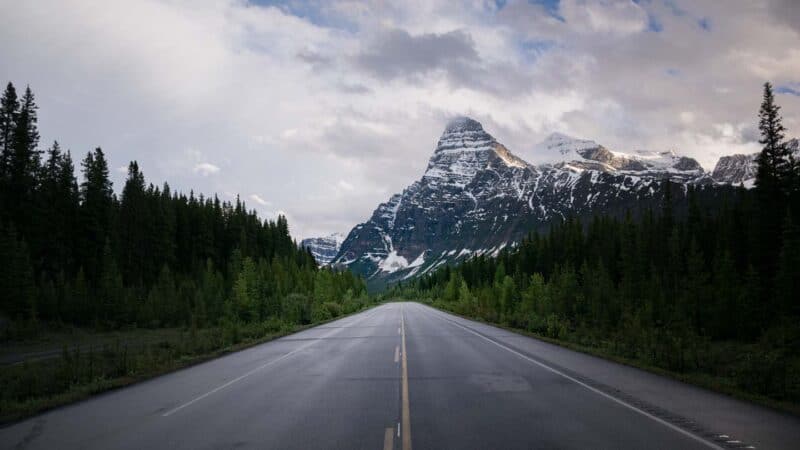
Icefields Parkway – Alberta, Canada
Another must visit in British Columbia is driving the Icefields Parkway. It is one of the most scenic drives you’ll ever take. While only 144 miles (232km), you could drive it in just over 2 hours.
There are literally hundreds of stops along the way. This drive deserves at least a day of your road trip to Alaska. Two days would allow you to walk on the Columbia Icefield and really see this amazing place properly.
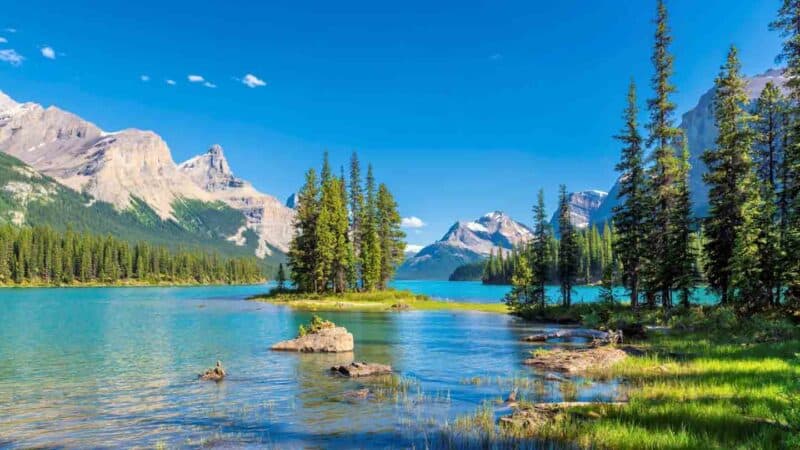
Jasper National Park – Alberta, Canada
At the top of the Icefields Parkway is another impressive Canadian Park. Jasper National Park is full of more impressive mountains and glacial feed lakes and rivers. Some of the national park highlights not to miss are the Valley of 5 Lakes hike and the massive Pyramid Mountain. Plan at least a day inside Jasper, and three days would allow you to cover most of the highlights.
From Jasper, make your way up HWY 40 in Alberta to connect with the Alcan Highway in Dawson Creek, where the Alaskan Highway starts. From the Alcan Highway, there are fewer possible deviations since this is the main route.
Good Stops: Muncho Lake Provincial Park, Stone Mountain Provincial Park, Destruction Bay, Tetlin Junction, Skagway. From Jake’s Corner in the Yukon, you can make your way down to Skagway & Haines, Alaska.
For the Alaska portion of the suggested itinerary, see our Alaska Road Trip itinerary and guide.
What to pack to drive to Alaska
While it’s good to be prepared for the very long drive to Alaska, but after doing it – there’s a more reasonable approach. Here, we will go over some of the things we packed that worked well and some that didn’t.
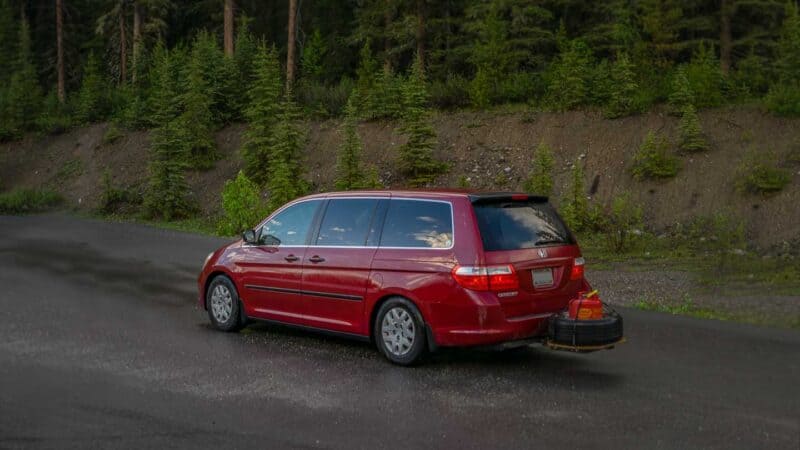
Do I Need a Full-Size Spare Tire when Driving to Alaska?
Having a full-size spare would help you to make you more independent and better prepared for any issues. However, the roads to Alaska are, in general, in pretty good shape.
If a flat tire occurs, a small donut tire would likely get you to the next town that could repair it. This would slow down your trip, but you’re not going to be eaten by bears if you don’t have a full-size spare.
To answer the question better, we spent a few hundred dollars and two days adding a spare tire to a vehicle that was not made to carry one. In hindsight, it was not worth it. However, if you can easily add a full-size spare tire to your vehicle, do it. Call a junkyard and get a rim and a used tire, and you’ll be ready if something does happen.
Do I need extra jerry cans of gas to drive to Alaska?
The simple answer is no. There is no stretch of road anywhere on the route to Alaska that is longer than 200 miles without a gas station. However, you’ll see all kinds of vehicles with multiple gas cans strapped to the back (we did too).
Overall, we found it unnecessary to carry extra gas. However, it was a peace of mind while in what felt like the middle of nowhere. The main exception is if you plan on driving longer, more remote stretches of the road to Alaska at night or early in the morning.
Many of the gas stations along the route to Alaska (especially in Canada) are old-school, without card readers, meaning the stations have to be open to get gas. Our minivan campervan gets around 400 miles to the tank, and we just never let it get too far under 1/2 a tank and never had an issue.
If you plan on going to more remote areas off of the main highways in Alaska and northern Canada, you still will want an extra gas can. We really liked the nice sturdy metal gas can we brought for this trip, which actually fit inside of our full-sized spare that was on a carry-in our hitch receiver.
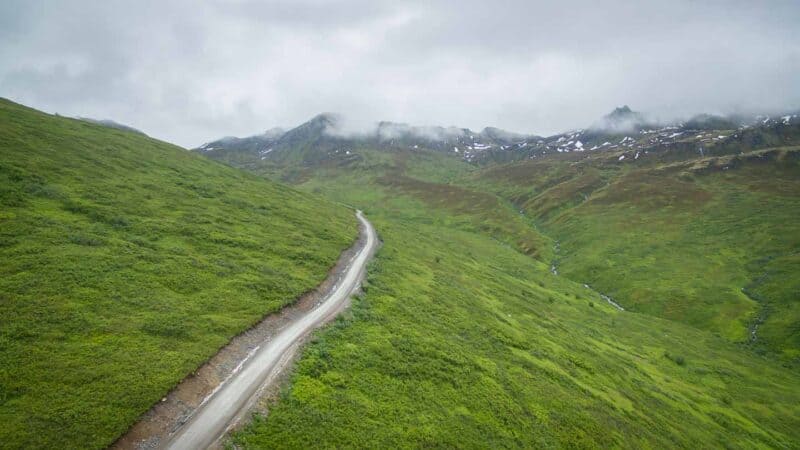
Random things you should know before driving the Alcan or Alaska Highway:
- In British Columbia, if you are caught going more than 40 kph over the speed limit, they will impound your car for seven days . Watch your speed when driving! We found this out when we got stopped going around 30 kph over. The trooper let us off with a warning because he was on his way to a missing person. Lucky for us, not so much them. However, he made it seem like his hands would be tied if caught over 40 kph.
- Canada restricts certain types of weapons from being brought into the country, including pepper spray. This makes carrying bear spray into Canada a little bit of a gray area. According to most sources, it is now legal if it’s bigger than 9oz, and the label states USDA repellent registration. Also on the restricted list are handguns and military-like assault weapons. If declared, you can bring in rifles and shotguns for hunting. You must register at the border and pay a fee. See a more comprehensive list and regulations on the RCMP official website .
How Much Does it Cost to Drive to Alaska?
Calculating the cost of a road trip to Alaska will depend on your route, gas mileage/price, driving habits, road conditions, lodging, and food along the way. Everyone’s trip will be different, but here are a few tips on how to budget your Alaska drive trip.
- Use a map tool to calculate how many miles your trip will be. Take that number and add in some miles for sightseeing and then double it for driving home.
- If you know your vehicle’s gas mileage, you can easily figure out the gas cost.
- Plan out your route, where you would like to stop along the way, and the type of accommodations you want. Will you be camping or staying in hotels along the way to Alaska? This will be one of your biggest budget factors.
- Make sure to factor in a budget for food. It could be as little as $10 per day per person if you’re cooking your own meals or much higher if eating primarily in restaurants. There are not a ton of restaurants in the Yukon or along the Alaska Highway except in the larger cities.
- Lastly, make sure to leave some money for seeing the sights – entrance fees, park passes, etc.
Are you planning to drive to Alaska? Or have you already done the drive? Share your questions and tips in the comments!
Don’t forget to pin me for later.
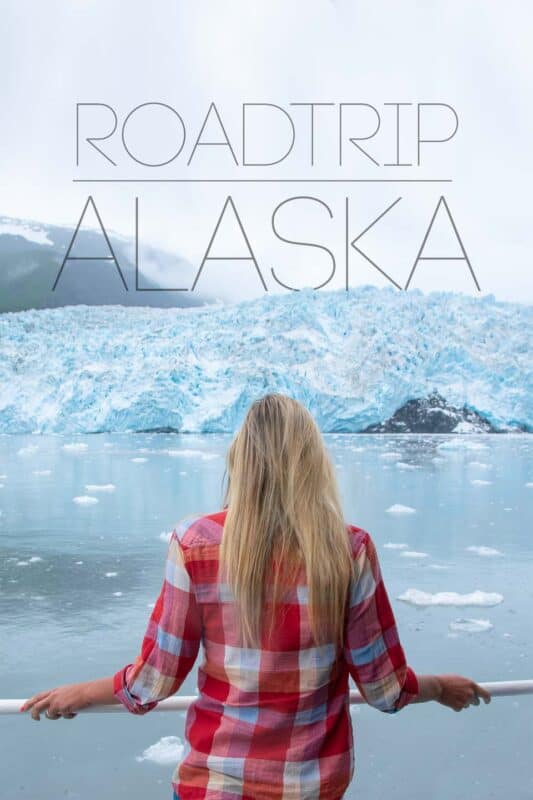
Sherrie seward
Saturday 1st of July 2023
Thank you for so much informative information.
Sunday 13th of March 2022
Thanks for posting this! My wife and I are getting ready to drive to AK from Central Wisconsin this summer in our Sienna mini van. Planning for about 10 weeks, lots of things to see and do.
Monday 28th of June 2021
The Alaska Hwy is all paved now. So, the drive is much easier than it used to be. The Canadian border officials can be a real pain. But, you just have to put up with it. DO NOT have a temper flare up! If you do they'll just deny you entry and turn you around. DO NOT try to sneek a hand gun into Canada. If they search your vehicle and they find it you're in big trouble. They really don't like any kind of gun.
Make sure you've got good tires. If you need to buy tires they will charge an arm and a leg. Same for batteries. There are plenty of places to stay, buy gas/diesel and food. No need to carry gas cans.
Summer time is a good time to drive. Winter can be bad because of the cold. There are places where it can get down to -50F or -60F. It can get colder than that.
If your vehicle takes premium gas when you get into Alaska the highest octane you can buy is 90. And it's lousy. You'll get less power and worst mileage. Buy octane booster before you leave home or in the states.
Also, make sure you've to all the paperwork for your vehicle. Insurance, and registration. They might ask you for it at the border. You'll also need a passport to get into Canada.
The border is still closed as of today, Monday June 28th 2021. No telling when they'll reopen it.
The people here (Alaska) are very friendly. Alaska is more than 2.5 times bigger than Texas.
Diane Huffman
Tuesday 13th of April 2021
Awesome and informative post! I worked in Denali YEARS ago ('99,00, and '01) and did that drive back and forth each summer from Utah and Colorado. It's interesting to hear that there are still gas stations that don't have pay-at-the-pump. I remember sleeping at the gas station waiting for it to open because I needed more gas to continue. It is an incredible drive, I'd love to do it again some time when COVID restrictions end.
John LeMaster
Thursday 8th of October 2020
My wife and I drove from Washington to Alaska and back with our travel trailer about 10 years ago. We really enjoyed our trip and would like to do it again. However, we are concerned that it may not be the same because of over crowding and heavy traffic during the summer months. If that's the case we may want to remember it the way it was. That's true of so many places we used to enjoy visiting, but now avoid because they are totally jammed with cars and people making everything a real hassle. What have conditions been like the past couple of summers?
Thursday 11th of February 2021
I don't think 'heavy traffic' applies with a drive to Alaska yet. On our last drive, I think there were days when we saw less than a dozen cars all day.

Wide-open roads, jaw-droppingly beautiful views, incredible wildlife, and escape from the chaos of modern life is what an Alaska road trip is all about. Whether you’re a seasoned road tripper or never driven out of your city, an Alaskan road trip is within your reach. You can drive to Alaska from anywhere in the continental U.S., but for this post, we’ll explore routes originating in Montana and Washington. We’ve compiled a list of all the information you’ll need to start planning your Alaska road trip.
Distance and Time

Of course, the time and distance vary widely depending on where you begin, how many stops and side trips you make, and your final Alaska destination. In general, plan on at least a week each way from Washington or Montana to Alaska. If you’re originating from anywhere east of Colorado, most routes will send you through North Dakota into Canada. A far more scenic way that doesn’t add much more time is to travel through Montana’s Glacier National Park and then north into Canada. The distance between Seattle or Glacier N.P. to Fairbanks, Alaska is about 2,160 miles.
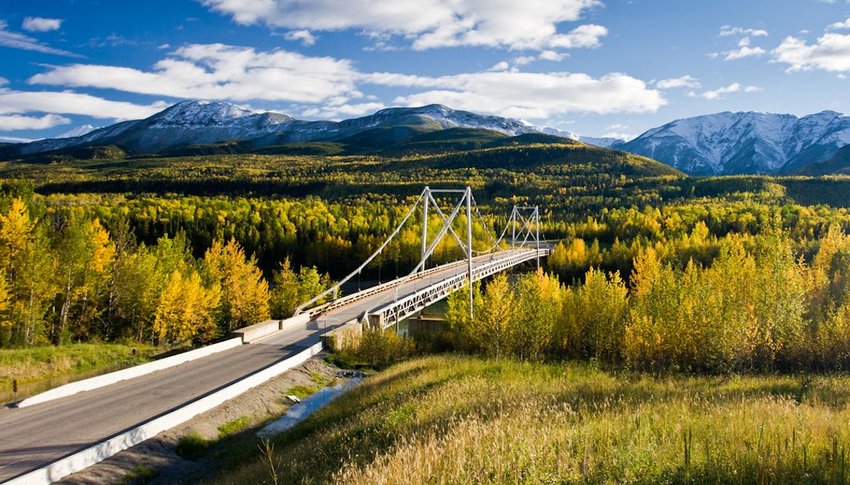
You have multiple options for driving through Canada to Alaska. You may have heard of the Alaska Highway (aka Alcan Highway), the most common route, but it doesn’t start at the U.S.–Canadian border. It originates in Dawson Creek, British Columbia, about 700-800 miles north of the border. To reach Dawson Creek, many take a scenic route through the Canadian province, Alberta. Along this route, you can visit breathtaking Banff National Park and Jasper National Park.
In Banff, you can hike, bike or take a local shuttle to view sites such as Moraine Lake. The town and park get very busy, so check the park’s website for real-time data on traffic and parking. The equally beautiful and larger Jasper National Park has a more rugged, remote feel compared to Banff. To reach Jasper from Banff, you’ll travel along the stunning Icefields Parkway , which winds along the Continental Divide through icefields, soaring mountain peaks and endless valleys.
Compared to Banff, the town of Jasper is much smaller, less crowded and more laid back. If this sounds more appealing and you’re short on time, consider skipping Banff and focusing on Japser. Once you leave Jasper, it’s about a six-hour drive to Dawson Creek and the Alaska Highway. From there, the highway crosses into British Columbia. When you pass through Fort Morgan, you can stretch your legs and learn a little about the history of the area at the Fort Nelson Heritage Museum . Farther north, you can hike or take a boat trip and explore the gorgeous Muncho Lake Provincial Park. You’ll also want to stop at Liard River Hot Springs Provincial Park , Canada’s second-largest hot springs, where you can soak away your road trip stiffness.
Stewart-Cassiar Highway
Another route some travelers prefer is the Stewart-Cassiar Highway , which joins the Alaska Highway at the border of the Yukon Territory (northwest of Dawson Creek). It starts about 700 miles north of Seattle, so to reach it, you’ll need to travel on other roads. If you start out on the Montana–Banff–Jasper route, you can drive into British Columbia, through Prince George to Kitwanga, where you can pick up the highway. The Stewart-Cassiar route travels through an incredibly scenic part of British Columbia, with less traffic and more isolation compared to the Alberta route.
A must-stop if you take the Stewart- Cassiar route between July and mid-September is a short detour to Hyder, home to the Fish Creek Bear Viewing Area . Hyder is just across the border from British Columbia, on the far southern tip of Alaska that runs along British Columbia’s western edge. The viewing platform here provides spectacular views of grizzly bears and wolves who come here to catch salmon running upriver.
Both the Alberta and British Columbia routes put you on the Alaska Highway, just at different points. For the best of both, take one route to the Alaska Highway and return via the other!
The Alaska Highway, Yukon Territory
Once you’ve reached the Yukon Territory of the Alaska Highway, the first thing you’ll see in Watson Lake is the “Signpost Forest.” Travelers from all around the globe have posted signs of their hometowns here since 1942, totaling more than 77,000 signs! Make time to stop at Kluane National Park and Reserve , home to 19,551-foot Mount Logan, Canada’s highest peak. You’ll also find North America’s most genetically diverse grizzly population and Canada’s largest ice field in Kluane. You’ll cross into Alaska at Milepost 1221, where you’ll have to stop and clear customs. The Alaska Highway officially ends in Delta Junction, AK, but most travelers consider Fairbanks, AK, the end.
Inside Passage Route
A third option for driving to Alaska is the Inside Passage Route , which utilizes the Alaska Marine Highway System, a network of ferries and waterfront communities stretching from Seattle to Alaska. This route involves less driving and offers unparalleled views of British Columbia and Alaska’s dramatic coastline. Ferries sell-out during prime travel seasons, so this route requires more advance planning and reservations than the other routes.
Practical Information for Driving to Alaska
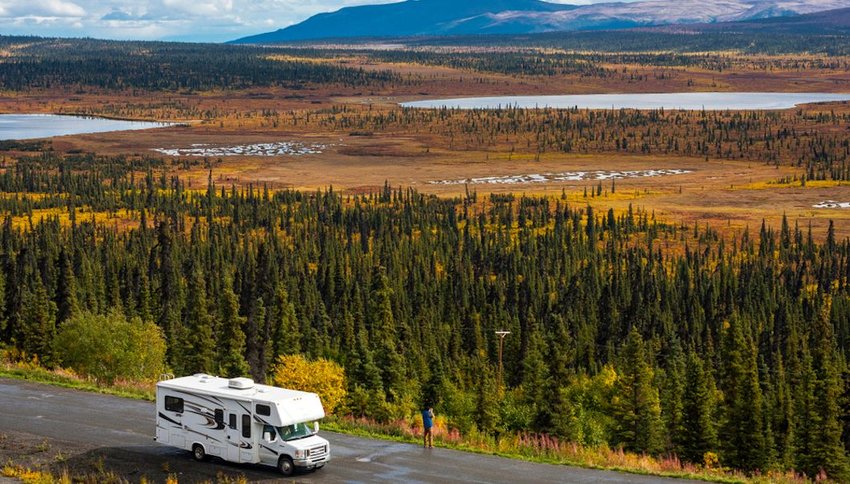
You might be wondering if you need an AWD vehicle, when to go, where to stay and potential risks along the way. Here’s a list of practical information that answers many questions.
How Do I Pick a Route?
Choose your driving route based on how much time you have, and which sites appeal to you most. It’s well worth your time and money to invest in the “Bible” of all guidebooks, “ The Milepost: Alaska Travel Planner .” This 700+-page guidebook offers current, detailed mile-by-mile descriptions, places to stay (including campgrounds and RV parks), services and things to see.
Where Should I Stay?
Most travelers (unless they’re camping/RVing) stay in motels and small lodges, which are scattered along the entire way, regardless of the route. You might not want to restrict yourself to a tight itinerary. However, during peak travel times, it’s a good idea to make reservations, even if it’s just a day or two in advance. If you don’t have a reservation, plan your arrival to a town in late afternoon — don’t wait until it’s dark. And keep in mind many of these small motels don’t offer amenities we’re accustomed to in chain motels in the U.S. (think no fitness center, pool or Wi-Fi). The same goes for campgrounds — book ahead or arrive early in the afternoon.
When Should I Go?
You can drive to Alaska any time of the year, but winters are far more challenging and riskier. Many gas stations, motels and other services shut down or have very limited hours during the winter months. Roads are plowed, but you risk getting stuck in a storm or having car trouble. For obvious reasons, summer months are the most popular, but late spring and fall can be excellent times to go if you want a more serene experience. You’ll also want the longer summer days since driving across Canada and Alaska in the dark can be dangerous. It’s not uncommon to round a bend and see a large moose, bear or bison standing in the road, especially at night.
Will I Have Cell Service?
In larger towns, you most likely will, but be prepared for long stretches with no coverage — and no payphones. Many travelers have reported that T-Mobile offers better service since some Canadian telecom companies share towers with T-Mobile. AT&T and Verizon don’t seem to work well in many areas. Best to consult your carrier about their Canadian plans and coverage before you hit the road. If you’re uncomfortable not having consistent cell service, consider getting a satellite phone (which are more affordable than they used to be).
What Are the Roads Like / Do I Need an AWD Vehicle?
If you’ve heard stories of unpaved, gravel roads along this trek, rest assured — the entire Alaska Highway is now paved. However, you may come across road work and cone zones that are unpaved. In general, roads are in decent condition, especially later in the summer after winter’s damage has been repaired. You do not need an AWD — as long as your vehicle, including motorcycles, RVs and trailers, is in good mechanical condition and you have a good spare tire, you’re good to go.
Do I Need Spare Gas Tanks?
No. Gas, diesel, food and even lodging are widely available, especially during summer. That being said, you should plan to fill your tank midday whenever possible and carry extra water and snacks since you will encounter stretches of 100 to 150 miles with no services.
What Do I Need to Cross the Border?
You’ll need a valid passport or a trusted traveler program card. If you’re traveling with minors, they will also need a passport, birth certificate or some form of official identification. If you’re unsure, check the U.S. Customs and Border Protection website .
For additional questions about traveling with pets, firearms or other concerns, the Milepost website is a wealth of information with links to official agencies. Use common sense, pay attention to weather forecasts, don’t exceed the speed limit, bring copies of any medical prescriptions you take and be prepared to “fall off the grid” a bit. Most of all, be flexible and try to savor every moment of an incredible, bucket-list road trip!
Enjoy this article? Share it with a friend
5 Dark Sky Parks to Visit This Year

10 Things That Will Make You Want to Visit Alaska This Year

12 Hotels That Are Worth the Splurge

Incredible Destinations Featured in This Year's Oscar-Nominated Films
How to Drive to Alaska: Everything you need to Know
Last Updated on May 4, 2024
If you’re ready for the epic road trip adventure of a lifetime, then a drive to Alaska on the Alaska Highway just might be for you! I’ve driven the Alaska Highway many times along with the access roads in British Columbia and the Yukon and nearly every highway in Alaska. I’m also a road logger for the Milepost and my colleagues and I drive the Alaska Highway and the other highways in Alaska to keep the Milepost updated, so you know you’re getting only the best advice and information here. This article will tell you everything you need to know to decide if this road trip is right for you and everything you need to know to plan your trip. I’ve also included a few of my favorite stops and side trips along the way.
There’s lots of information in this article. If you’re looking for something specific, use these links to find what you’re looking for quickly. Grab a copy of my Alaska Highway Planner and Workbook to keep everything organized and make sure you don’t miss a thing.
- Is driving to Alaska worth it?
- Interview with Alaska highway travelers Pete and Kathleen
- When is the best time to drive to Alaska?
- What parts of Alaska can you drive to?
- How much does it cost to drive to Alaska?
- Can you drive to Alaska without going to Canada?
- How long does it take to drive to Alaska?
- What’s the best route to take?
- What are road conditions like?
- Is there cell phone service on the drive to Alaska?
- Where can you sleep along the way (including camping)?
- Wildlife you might see
- The best stops and things to do on your road trip to Alaska
- Preparing your vehicle
- What to pack for your road trip to Alaska
Is Driving to Alaska Worth it?
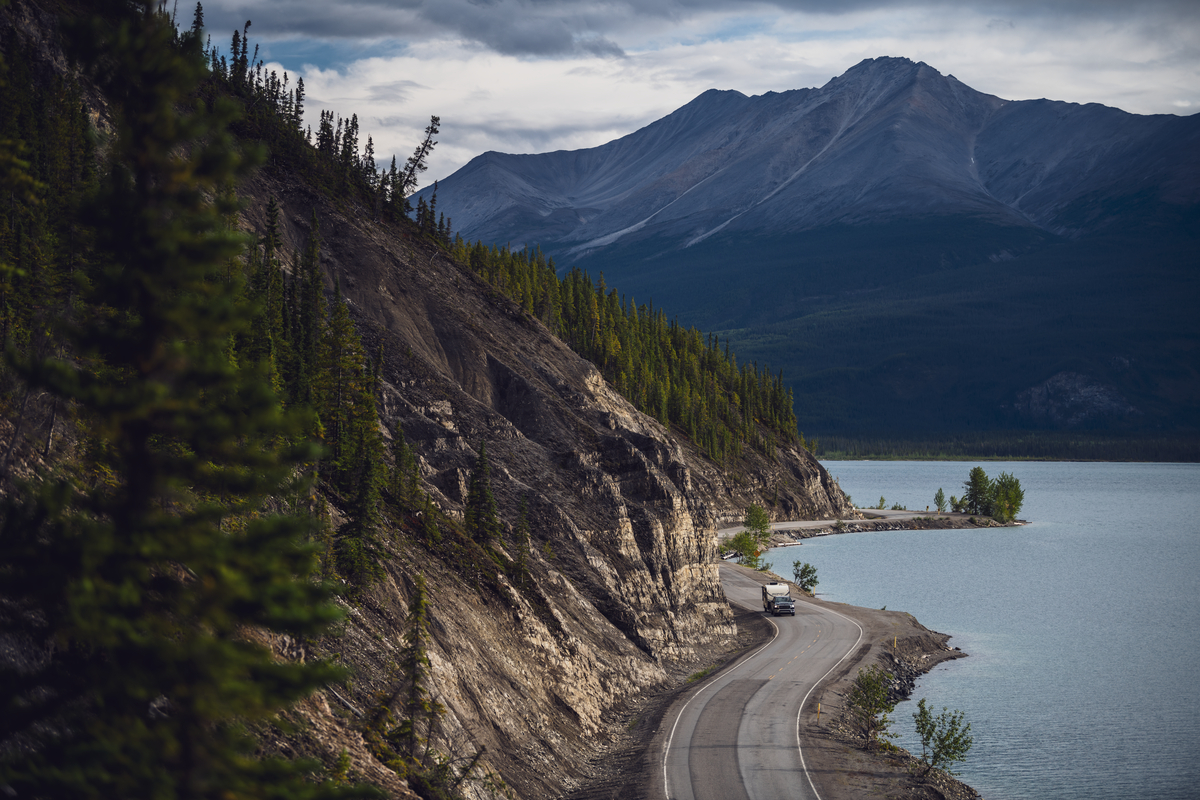
Driving to Alaska MIGHT be worth it, or it might not. It is certainly a beautiful scenic drive and epic road trip adventure ! It is also a long drive that takes a lot of time.
A few questions to ask yourself to help you decide if driving to Alaska is worth it or not for you:
- Do I love road trips? Like REALLY love them. If so, then you’ll probably love this Canada and Alaska road trip adventure!
- Do I love Canada? Or do I want to find out if I love Canada? Most of the drive will be through Canada!
- Do I need my car while I’m in Alaska? This might be the situation if you are moving to Alaska, moving there for seasonal work, or if time is not an issue on your trip but money is. Driving your car to Alaska may be cheaper than renting a car when you arrive, especially for a longer trip. Car rental is expensive in Alaska. If you have the time, you may be able to save money if you travel in your own car.
- Am I adaptable and do I have a sense of adventure? This is a road trip where things won’t always go as expected. You might need to change your plan about where you’re staying or how many days you are on the road.
- Do I have at least a month for my trip? I only recommend driving to Alaska if you have at least a month for your trip. Possibly 2-3 weeks if you can share the trip with someone else and have each of you drive one way. For a shorter trip, fly and rent a car!
- Am I considering the drive to Alaska part of the trip? If you think of the drive as part of your trip, it’s wonderful! If you are just going fast to try to get there, it’s a long, difficult slog.
Listen to Pete and Kathleen’s story of driving to Alaska from Pennsylvania and back on the Alaska Uncovered Podcast
When is the best time to drive to alaska.

The short answer is, whenever you have time! The highway is open all year, though there can be significant delays in winter and not everything is open. You also need to be very self sufficient and prepared for extreme cold in winter. I’ll assume for this article you’re planning to drive during the summer (June-August) or the shoulder season (mid April through May or September).
You can encounter snow and ice as late as mid May and as early as early September, so keep this in mind if you’re driving during those months.
Almost everything along the highway is open from mid May through early September .
Construction happens all summer and shoulder season, so you can’t really avoid that unless you’re driving in the winter. Bugs will be most intense in June and July, though you may encounter them earlier in the summer as well, and possibly later depending on how dry and cold the late summer is.
If you want to see the Northern Lights on your trip, then plan your drive to Alaska for late August or September , when it’s dark enough to see them!
In most of Alaska, the Yukon and Northern BC, it doesn’t get dark at night in May, June, July or early August. The further south you go, the more darkness there is.
What parts of Alaska can you Drive to?
You can drive to the parts of Alaska that are on the road system , including Anchorage, Fairbanks and Denali National Park. In Alaska, there are many communities that are not on the road system at all and can only be reached by plane or boat.
Alaska’s state capitol of Juneau is the only state capitol in the United States that you cannot drive to . You can bring a car to Juneau, but you would need to drive to Skagway or Haines and take the ferry to Juneau. The Alaska Marine Highway System (the Alaska state ferry) serves many towns in the Inside Passage of southeast Alaska as well as Southwest and Southcentral Alaska.
You can bring a vehicle on the ferry with a reservation. You can also take the ferry from Bellingham in Washington State as far as Haines or Skagway to meet up with the road system.
How much does it cost to Drive to Alaska?
The cost of driving to Alaska can vary quite a bit based on:
- The type of vehicle you are driving and it’s gas mileage
- Whether you camp or stay in roadhouses or hotels along the way (or a mixture of the two)
- The exchange rate between the Canadian and US Dollar
Expect to pay more for gas in Canada than in the US and even more for gas in remote areas . You”ll be paying at least 20% more for gas. If you’re in a remote part of British Columbia as much as 50% more. In Canada, gas is sold by the liter (instead of gallons) and you’ll be paying in Canadian dollars. Between these two, it can be difficult for an American to figure out how much they’re actually spending. The most important thing is to budget enough for gas that you don’t get tempted to drive on to find cheaper gas. This might result in you running out of gas, which is no fun!
When you budget for your trip, the most important part will be how much time you’re spending in Alaska and where you are staying. This post has all my recommendations for saving money on a trip to Alaska , including how to budget.
You can save money by camping along the way if you’re a camper. I like to camp but I have usually split my nights between camping and hotels. Setting up camp in a new location each day takes a lot of time. If you’re taking your time camping each night will be no problem. The sleeping section below has more information on camping, roadhouses and hotels.
Can you Drive to Alaska without going through Canada?
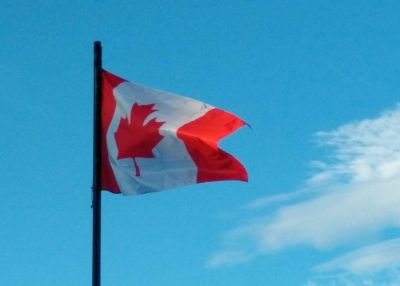
You will definitely be driving through Canada if you drive to Alaska. In fact, most of your drive will be in Canada . Your drive includes British Columbia and the Yukon as well as Alberta if you are coming from further east. It is your responsibility to research the most up to date rules regarding entry to Canada and Canadian road rules. A few of the important things to know include:
- You will need a passport . If you are a US Citizen and resident of Washington, Michigan, Minnesota, New York or Vermont you can get and use an enhanced driver’s license to cross the land border between the US and Canada in a car. You can also use a NEXUS pass if you have one.
- There are some items you cannot transport across the border , or are restricted. It is your responsibility to research this and declare any items that require it (such as alcohol and fresh produce, among others).
- Canada requires proof of vaccination against COVID and documentation of this at the border as well as in advance on the ArriveCAN app. Some travelers may also be tested at the border.
- If you are traveling with a pet , you will need a current health certificate including proof of an up to date rabies vaccine.
- If you are traveling with a child , but both parents are not present, have a letter from the other parent stating it is ok to cross the border with a child
- US Citizens with Driving Under the Influence convictions and some other convictions may be denied entry into Canada.
- Prices in Canada will be in Canadian Dollars . Many places will take American money, but you will get change in Canadian Dollars. The best way to handle this is to stop at a Canadian ATM and get some Canadian cash. You can also use your debit or credit card (check with your bank about foreign transaction fees that may be charged).
- Gas in Canada is sold by the liter , not the gallon
- Speed and speed limits are in kilometers per hour , not miles per hour
- Distances are listed in kilometers , not miles.
- There is a one hour time change between Alaska and Canada.
- Check with your insurance company to make sure you are covered while driving in Canada.
How Long Does it Take to Drive to Alaska?
I recommend spending a week to drive to Alaska from Seattle . Even longer if you want to spend some time at any places along the way or if you’re coming from further away in the United States. This trip is long, over 2200 miles from Seattle! If you’re not going to make the journey part of your trip, I highly recommend flying there instead and renting a car. For comparison, this is about the same distance as driving from Seattle to Indianapolis or Edmonton to Ottawa.
The drive to Alaska is not fun if you’re just trying to get there as fast as possible! There are a few things that make this road trip slower than most and more fun if you’re taking your time, including
- Construction – you will run into places with delays sometimes of an hour or more in construction zones
- Two lane road – The Alaska Highway is in good condition, however it’s a two lane road and there can be a lot of RVs on it in the summer which tend to be driving a bit slower. Passing lanes and safe passing areas are around, but some sections don’t have as many
- Wildlife – you’ll want to stop and spend a few minutes when you see wildlife, but you also need to watch your speed and follow the speed limit which will help you avoid a collision with wildlife which is extremely dangerous for both you and them (especially with moose).
- Frost heaves – one of the reasons there’s lots of construction along the Alaska Highway is because the harsh winters are hard on the roads. In Northern BC, the Yukon and Alaska you can hit sudden frost heaves, which are like speed bumps but less predictable. Hitting them too fast can damage your vehicle.
- Stopping at some of the interesting and beautiful places along the way (see more on this below)
I also recommend building in an extra day or two, in case you need any vehicle repairs, tires or just want to take a break or spend more time checking something out.
What is the Best route to take to Drive to Alaska?
There are three primary access routes when you drive to Alaska . They all converge in the southern part of Canada’s Yukon Territory, near the town of Watson Lake. Between Watson Lake and Tok, Alaska, there is really only one way to go . This section will talk about the different access routes and then the different places you can go once you hit the Alaska border. The things to do section later in this article discusses highlights and what not to miss on each section of the drive to Alaska.
Make sure that you get your copy of the current year’s Milepost to give you all the details about every single road in Alaska, the Yukon and most in British Columbia. Don’t count on having a phone signal!
If you are driving both ways, consider going one way on the Cassiar and the other through the Canadian Rockies for variety.
Cassiar Highway
This route is the shortest distance to drive to Alaska from Seattle and Portland (about 100 miles shorter than the west access route described below). It is likely to take longer however, since the Cassiar Highway is slow and very remote. There are very limited services along this highway.
This route is best for those who want to get away from it all. It’s also excellent for seeing wildlife. Make sure you are comfortable driving in very remote areas without services.
To take this route to drive to Alaska, start in Seattle and follow the Trans Canada Highway (Highway 1) east around Vancouver. Follow the Trans Canada Highway as far as Cache Creek. At Cache Creek, continue north on Highway 97 towards Prince George. In Prince George, take the Yellowhead Highway (Highway 16) west towards Prince Rupert. The Cassiar Highway takes off to the right (north) as Highway 37 between Smithers and Terrace. Take the Cassiar Highway through Northern BC’s beautiful wilderness until you meet up with the Alaska Highway just after crossing the border into the Yukon Territory, just west of Watson Lake.
Total driving distance from Seattle to the BC/Yukon border on the Cassiar Highway Route is just over 1300 miles .
West Access Route and Alaska Highway
This is the best route for anyone coming from the West Coast of the US who prefers to avoid the more remote Cassiar Highway in favor of the still-remote-but-less-so road.
This route is the same as above as far as the town of Prince George in Northern British Columbia. Continue beyond Prince George on Highway 97. If you don’t care about the sign that tells you you are at the start of the Alaska Highway, take the cut off and save 25 miles. Otherwise, continue into the town of Dawson Creek, the official start of the Alaska Highway . You’re still on BC Highway 97, but now you’re officially on the Alaska Highway!
Total driving distance from Seattle to where the Cassiar meets the Alaska Highway on this route is just under 1400 miles .
East Access Route and Alaska Highway through the Canadian Rockies or Calgary
If you’re coming from the Rocky Mountain West, the Midwest, the South or the East Coast, then the best route for you is to come through the Canadian Rockies or Calgary, Alberta.
You have a few options here. The fastest way is to take the shortest route to Calgary, then the Red Deer Expressway north of the Canadian Rockies National Parks to meet up with the start of the Alaska Highway in Dawson Creek, British Columbia.
Many people like to include a trip to Glacier National Park and the Canadian National Parks of Banff and Jasper on to their drive to Alaska. It’s a little more out of the way if you’re coming from the West Coast, but it’s almost on the way for those coming from the rest of the US. You can visit those parks (along with the less visited but my personal favorite, Canada’s Kootenay National Park ) and then head north from Jasper to Grand Prairie to meet up with the start of the Alaska Highway in Dawson Creek.
Total driving distance from Missoula, MT to where the Cassiar meets the Alaska Highway on this route is about 1500 miles . The distance going through the parks is about the same, but it takes longer.
Alaska Highway through the Canada’s Yukon Territory to Tok, Alaska
This part of the drive to Alaska is very straightforward because you’re on the Alaska Highway and there’s really only one way to go (unless you take some side trips like up to Dawson City , which is awesome but you might not have time for!).
You’ll drive through the southern part of the Yukon Territory, including Whitehorse. If you’re heading to Southeast Alaska, you’ll turn off sooner (see below) than if you’re headed to Anchorage or Fairbanks. For Anchorage or Fairbanks, keep heading up the Alaska Highway, passing by Kluane National Park and entering Alaska at Beaver Creek.

Total Driving distance from Watson Lake, Yukon to Tok, Alaska is about 650 miles.
Whitehorse to Southeast Alaska (Skagway and Haines)
If you’re heading to Skagway, you’ll head south on the Klondike Highway in Whitehorse. If you’re going to Haines, you’ll head south on the Haines Highway from Haines Junction. Both Skagway and Haines are wonderful places to visit and you can also catch the ferry to take your car to other parts of Southeast Alaska that are not accessible by road. Learn more about riding the Alaska ferry here .
Tok to Anchorage or Fairbanks
Once you arrive in Tok, you’ll go a different direction to go to Anchorage and the Kenai Peninsula than Fairbanks and Denali National Park . By the way, you can make a loop driving the Parks Highway between Anchorage and Fairbanks.
For Anchorage , you’ll head south and west from Tok towards Glennallen and the Glenn Highway, taking you to Anchorage in about 320 miles.
For Fairbanks , you’ll head north and west through Delta Junction for about 200 miles. If you’re heading to Denali National Park , head to Fairbanks and then south on the Parks Highway for another 120 miles.
Check out my Alaska itineraries for independent travelers for ideas on how to build your road trip once you are in Alaska!
What are Road Conditions Like on the Alaska Highway?
Overall the road conditions along the drive to Alaska are pretty good for such a remote location. The Alaska Highway is all paved and even some of the secondary roads are too. There are occasionally small sections of gravel where a washout repair has happened recently, which could be up to a couple hundred yards. Some roads are gravel and in general are very well maintained.
In construction zones there may be many miles of gravel where the road is being repaired or upgraded. Usually in these sections one direction of cars will go at a time behind a pilot car. There can be a long wait at times for the pilot car.
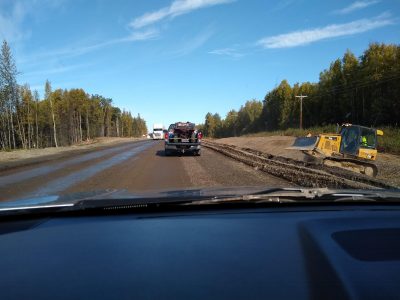
In addition to construction, watch out for wildlife (especially moose) and watch your speed to avoid a collision. Frost heaves and potholes pop up at times and are usually marked with temporary orange signs in Canada.
If you’re in the habit of going a little bit further for cheaper fuel, break that habit before you drive to Alaska! Fuel is more expensive and gas stations and not as frequent as they are in other areas. Fuel will be cheaper in bigger towns, so always fuel up in towns when you pass even if you don’t need to stop . Don’t count on being able to check your phone for the next fuel stop, use the Milepost for this instead.
Is there Cell Phone service along the Alaska Highway?
For the most part, you will be driving out of cell coverage when you are not in a town . Some small towns also do not have cell phone service. This is true in British Columbia (especially the further north you go), the Yukon and Alaska.
Another important note is that the majority of your drive will be in Canada, so contact your cell phone provider to find out how much it will cost to use your phone there, including data charges . This is important as it can be very expensive! I have T-Mobile, which does not charge for roaming in Canada or Mexico (fantastic perk!). You may also be able to get a temporary international plan through your provider, but make sure to make a plan for this in advance! Also check with your provider about specific locations where cell phone service is available.
If you’re Canadian, you’ll need to check the same for travel in Alaska and if your provider has cell coverage and how much it costs.
Where can I Sleep or Camp on the Drive to Alaska?
While it is VERY important to have reservations for lodging once you arrive in Alaska arranged well before your trip, it’s fine to call ahead for reservations along the highway a day or two in advance. Often you can find a place even without a reservation, but it’s nice to know you for sure have a place to land at the end of the day if you’re staying in a hotel, motel or roadhouse.
Do not count on having the internet to look up your options on yelp. You need The Milepost to be your guide and let you know what lodging or camping is available along the way.
If you prefer vacation rentals or chain hotels, these are available in the bigger towns along the Alaska Highway and access routes, such as Prince George and Whitehorse. If you’re looking to stay in vacation rentals or chain hotels in bigger towns then a reservation is important. This is a good way to go if you want to have wifi and cell phone service and be in towns at night (don’t assume your vacation rental has wifi or cell phone service if it’s outside a town).
My perferred way to drive to Alaska is to do a combination of camping and roadhouses . I love camping and it’s the least expensive lodging along the Alaska Highway but moving camp every night for several days in a row is a drag. Roadhouses are a really fun, affordable and unique way to spend your nights along the drive. More on this below.
Roadhouses along the Alaska Highway
Roadhouses are my favorite way to spend the night if I’m not camping along the drive to Alaska. Road houses in Alaska, the Yukon Territory and Northern British Columbia are generally small, family run establishments. Sometimes there are in or near a town, other times they are out on their own far from the nearest town. They often do not have wifi or cell phone service and are usually in stunning locations. They always have a unique and welcoming atmosphere and usually terrific food. Typically there will be a restaurant and some rooms. Occasionally there are also cabins or camping on site. Some are more like rustic lodges and others more like motels.
A couple of my all time favorites include the quirky Toad River Lodge and the perfectly located Liard Hot Springs Lodge. Although I haven’t stayed there personally, I know people rave about the Northern Rockies Lodge at Muncho Lake. The Northern Rockies Lodge is the most beloved lodge along the Alaska Highway.
Camping along the Alaska Highway
Camping is an affordable way to travel the Alaska Highway and gives you a lot of flexibility in where you stop for the night. If you’re planning on camping, read my guide to camping in Alaska which is good advice for the drive to Alaska too! Make sure that you secure all food and toiletries in your vehicle or in bear bins if the campground provides them when they are not in use. Bear safety is necessary when camping anywhere in Alaska, British Columbia, the Yukon and Alberta.
Plan on stopping early for the night to make sure you get a spot, especially further south in British Columbia and Alberta. There are a variety of camping options ranging from British Columbia Provincial Parks to Yukon Territory Parks to Alaska State Parks and recreation areas. In addition, there are many private campgrounds and RV parks that welcome tents as well. Some private campgrounds and RV parks offer showers and laundry.
A few of my favorite campgrounds include Muncho Lake Provincial Park, Liard River Provincial Park and Kathleen Lake Campground (note this is about half an hour off the highway in Kluane National Park near Haines Junction – but it’s worth it!). The Congdon Creek Campground along Kluane Lake is a favorite of several friends who drive the Alaska Highway every year.

What Wildlife will I see along the Alaska Highway?
The Alaska Highway is a wonderful place to see wildlife, particularly moose and bears. Keep your eyes out and watch your speed, especially around moose!
For moose viewing, keep your eyes out along the sides of the road, especially when there are marshy or brushy areas or lakes near the road. Northern British Columbia, the Yukon territory and Alaska are all places where you may see moose.
If you’re interested in bear viewing , I recommend taking the Cassiar Highway. The Cassiar Highway is the place where I have seen the most bears on the drive to Alaska. Even if you take a different route, you have a good chance of seeing a bear. Bears inhabit all of British Columbia, the Yukon Territory and Alaska. It is important that you follow all recommended bear safety procedures , especially when camping or hiking. Follow all post signs and warnings related to wildlife. The most important thing is to never, ever leave food out when you are not actively eating it. Keep it locked in your vehicle.
There are also different kinds of wild sheep that you may see, as well as many birds and other mammals such as foxes and maybe even a lynx.
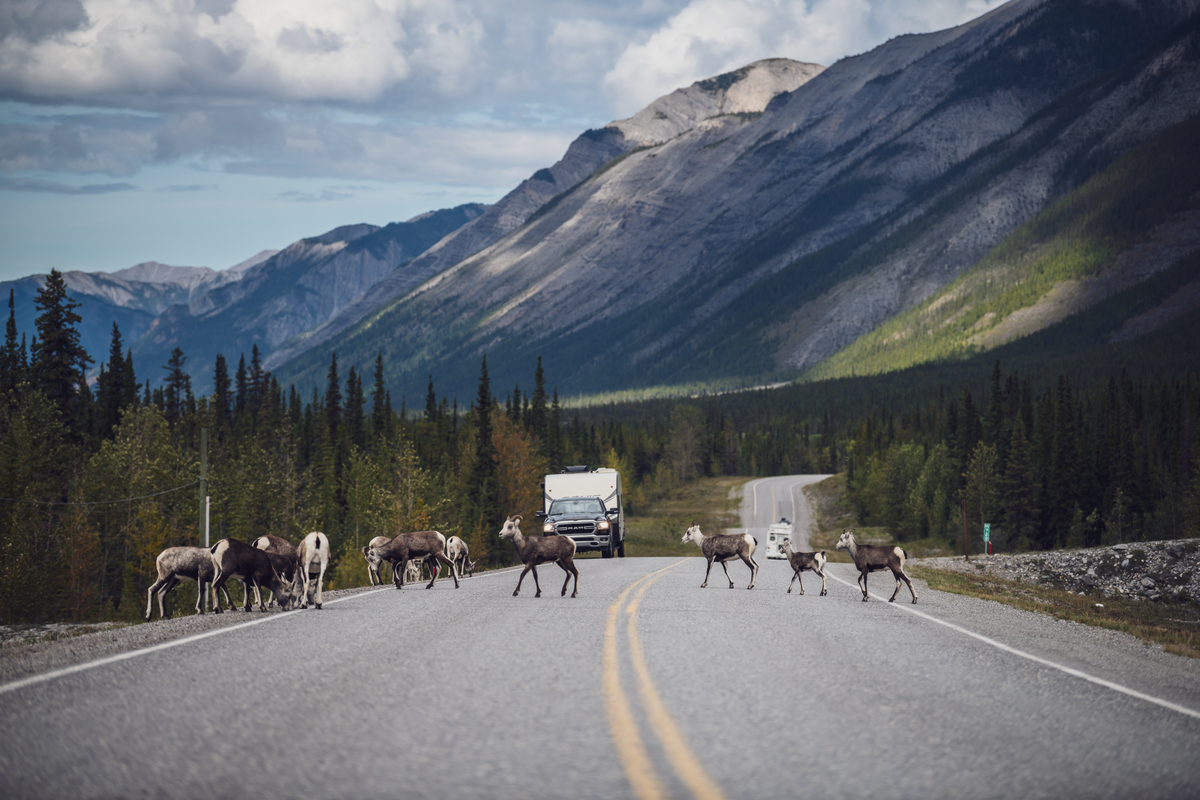
The Best Things to do on the Alaska Highway
There are so many fun and quirky things to do along the Alaska Highway ! Way too many to list in this article. This is one reason why taking your time makes it a lot more fun. Make sure to have the Milepost with you as it will have literally every single thing you might want to stop for. There are lots of opportunities while you’re driving to see wildlife and incredible scenery too. These are a few of my favorite stops and side trips on the drive to Alaska that are worth building into your trip from the beginning:
Sea to Sky Highway (West Access Route side trip)

- Where it is: The Sea to Sky Highway is the drive from Vancouver BC to Whistler BC (a side trip from the West Access Route to the Alaska Highway)
- Why it’s awesome: This is one of the most beautiful stretches of road I’ve ever driven on! Drive up narrow Howe Sound to the charming town of Squamish, stopping at waterfalls and the gondola along the way.
Hells Gate Tram/Fraser River Canyon (West Access Route)
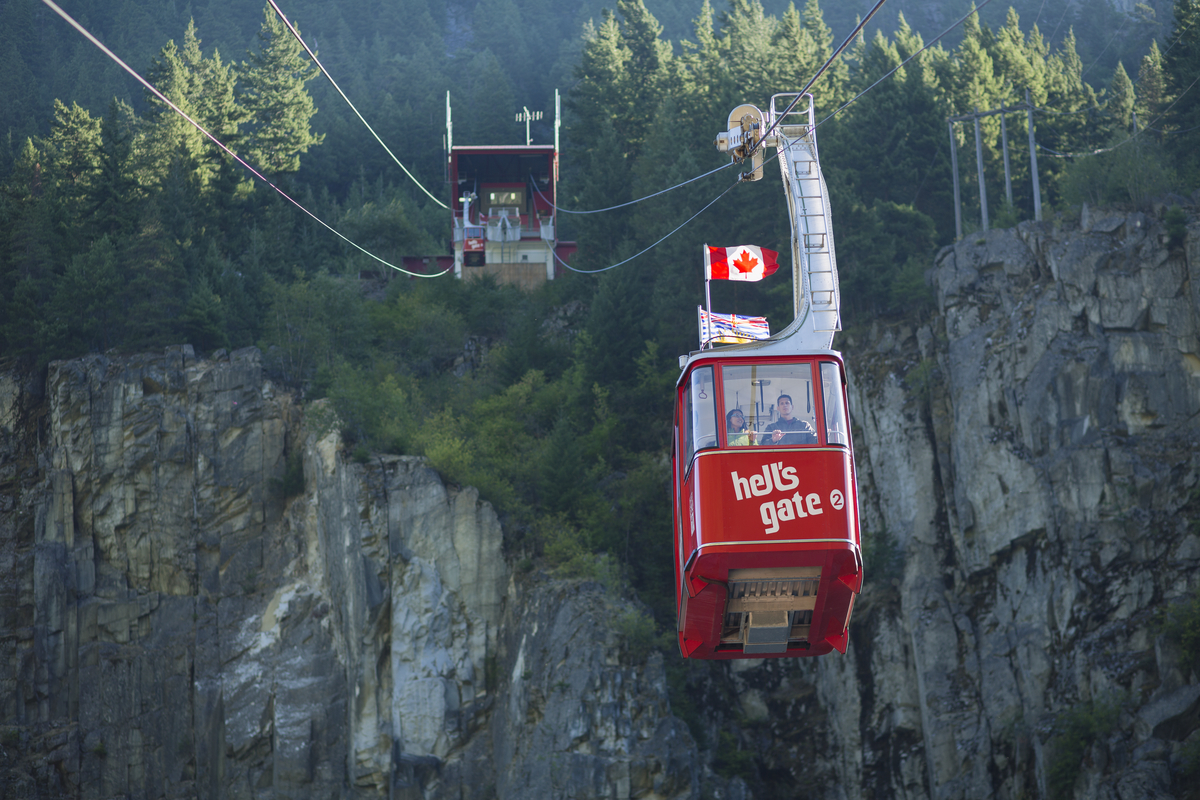
- Where it is: On the Trans Canada Highway north of Hope, British Columbia
- Why it’s awesome: Canada seems to be full of trams and gondolas and I’ve never met one I didn’t like! Even if you don’t stop, this section of the drive through the narrow Fraser Canyon is beautiful. The tram is a wonderful way to get out of the car and view the scenery from above
British Columbia Wineries (West Access Route)
- Where it is: There are lots of wineries throughout the central part of British Columbia, which has a similar climate to Washington’s wine country. Pull off the road whenever you see one!
- Why it’s awesome: British Columbia has some wonderful wines and I love to stop when I’m ready for a break and try some. Wineries in BC never fail to have a fun outdoor tasting area and sometimes food too. Most towns in British Columbia also have wonderful farmer’s markets. Try to drive through this area on a Saturday so you can catch some delicious local produce to enjoy for a picnic with your wine!
Icefields Parkway (East Access Route, Canadian Rockies)
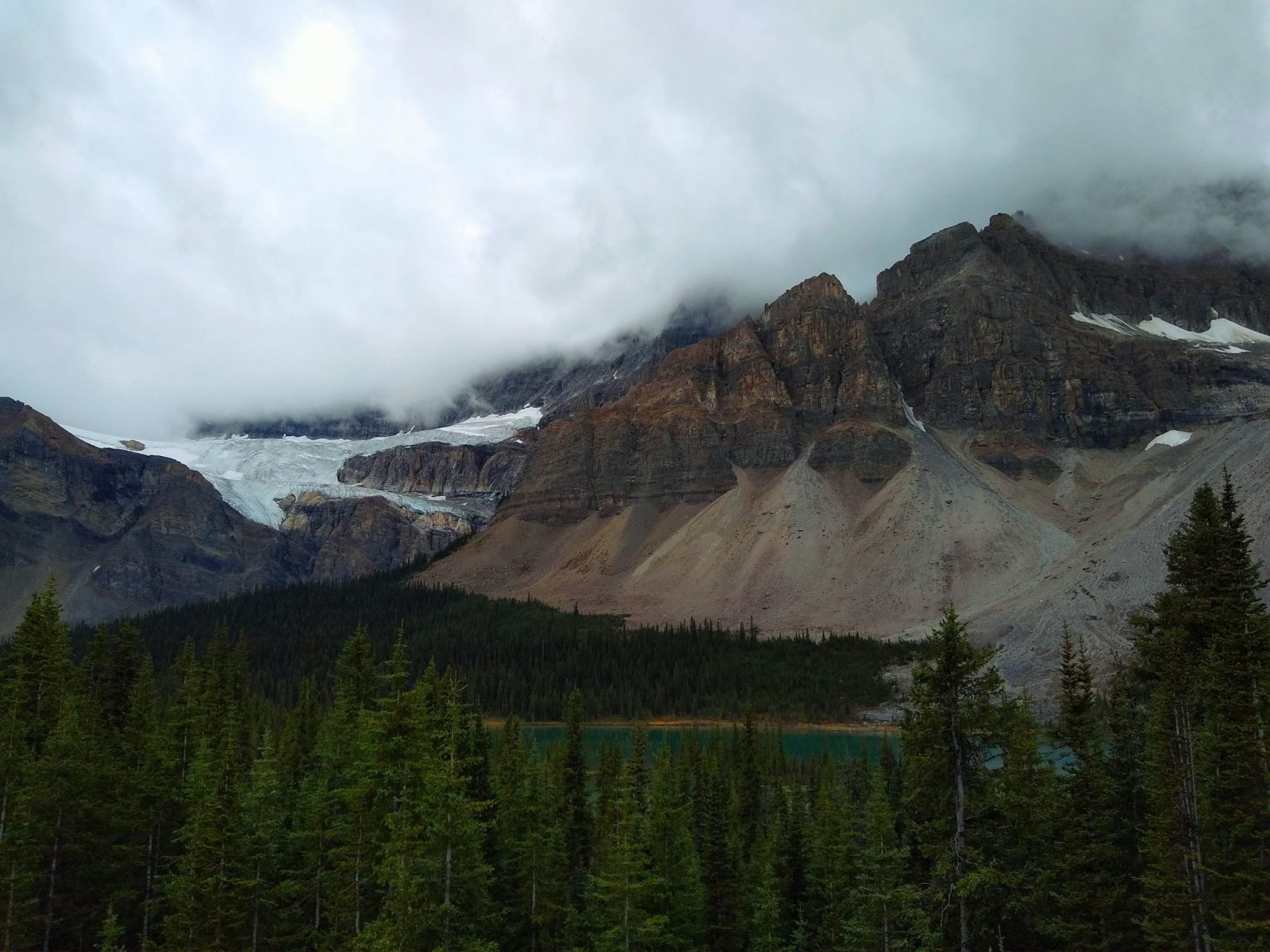
- Where it is: The Icefields Parkway is a spectacular scenic drive between Banff and Jasper National Parks in Canada
- Why it’s awesome: Incredible scenery including massive mountains and glaciers you can see from your car! There are also lots of hiking opportunities along this corridor.
Miette Hot Springs (East Access Route)
- Where it is: Miette Hot Springs is in Jasper National Park
- Why it’s awesome: A bit more mellow (though still super busy!) than Banff’s Hot springs, what’s not to love about a hot springs soak? If you’re a hot springs lover, consider adding a trip on BC’s hot springs route (west of Banff). Visit in the morning for less crowds.
Prince George (West Access Route)

- Where it is: Prince George is at the junction of the Yellowhead Highway and BC Highway 97. If you’re taking the West Access Route or the Cassiar Highway you will pass through Prince George.
- Why it’s awesome: This is a good town to resupply and try some of their wonderful restaurants like the Salted Cracker (house made soup and sandwiches), the Makerie (coffee and art) and Crossroads Brewing (good food too!). Cottonwood Island Park is a wonderful place to stretch your legs on some beautiful forested trails with charming wood carvings along the way.
Stewart, BC, Hyder, AK and Bear Glacier (side trip from the Cassiar Highway)
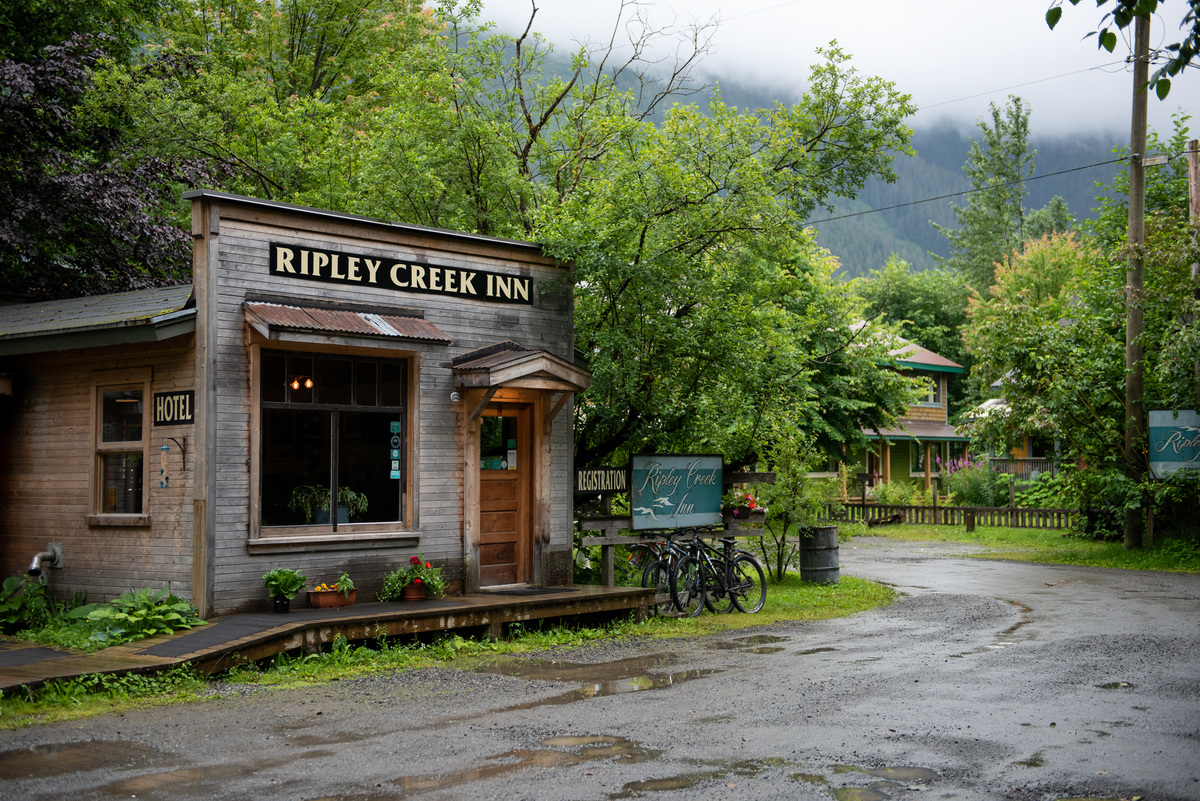
- Where it is: Stuart and Hyder are across a very narrow fjord from each other
- Why it’s awesome: This side trip will take half a day (an hour each way plus exploring) but it’s well worth it to see this super unique place! Stewart and Hyder are both tiny and right next to each other. These unique small towns straddling the border are situated in a deep and narrow fjord of the inside passage. The Bear Glacier is a mandatory stop along the way.
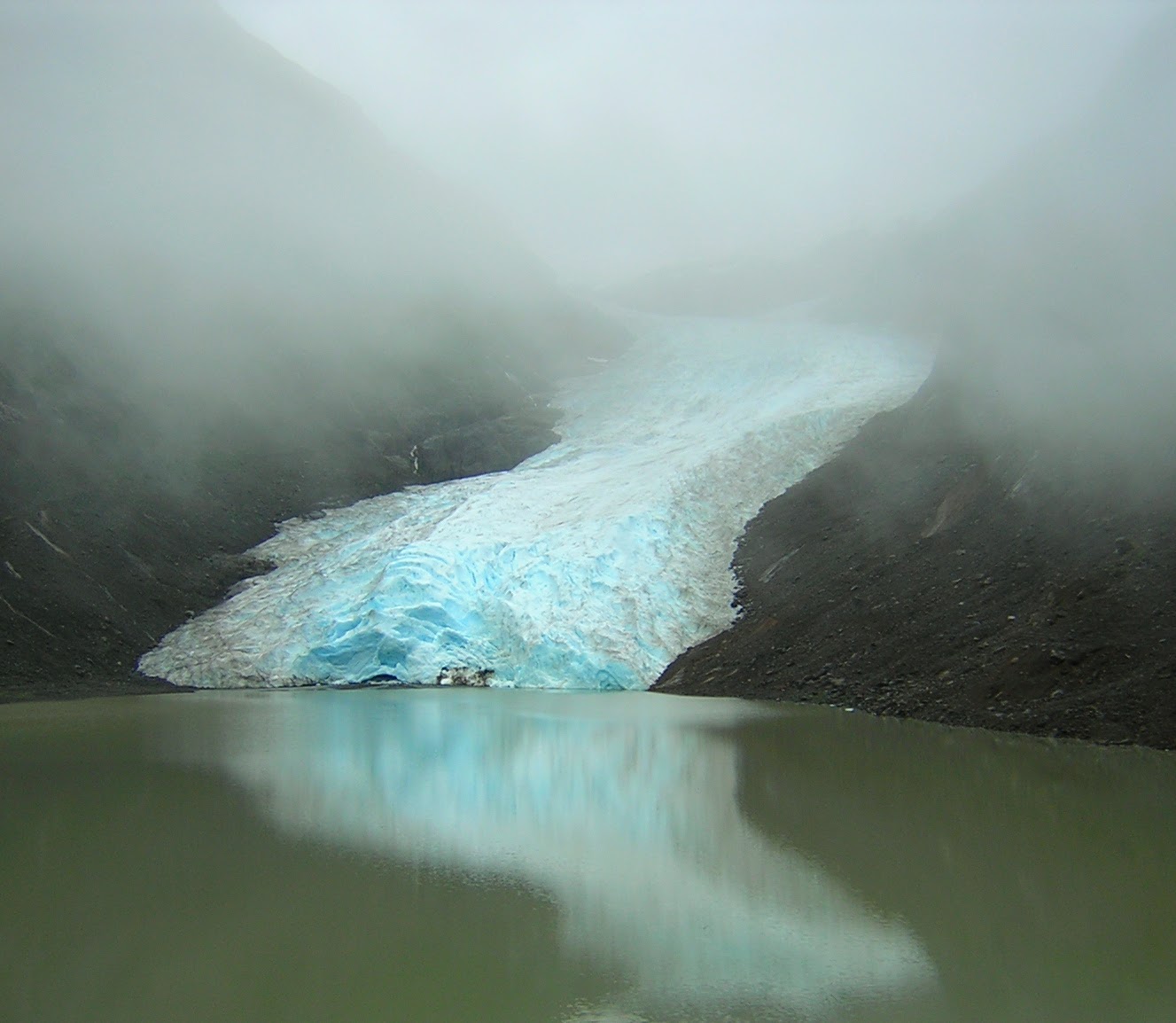
Tumbler Ridge
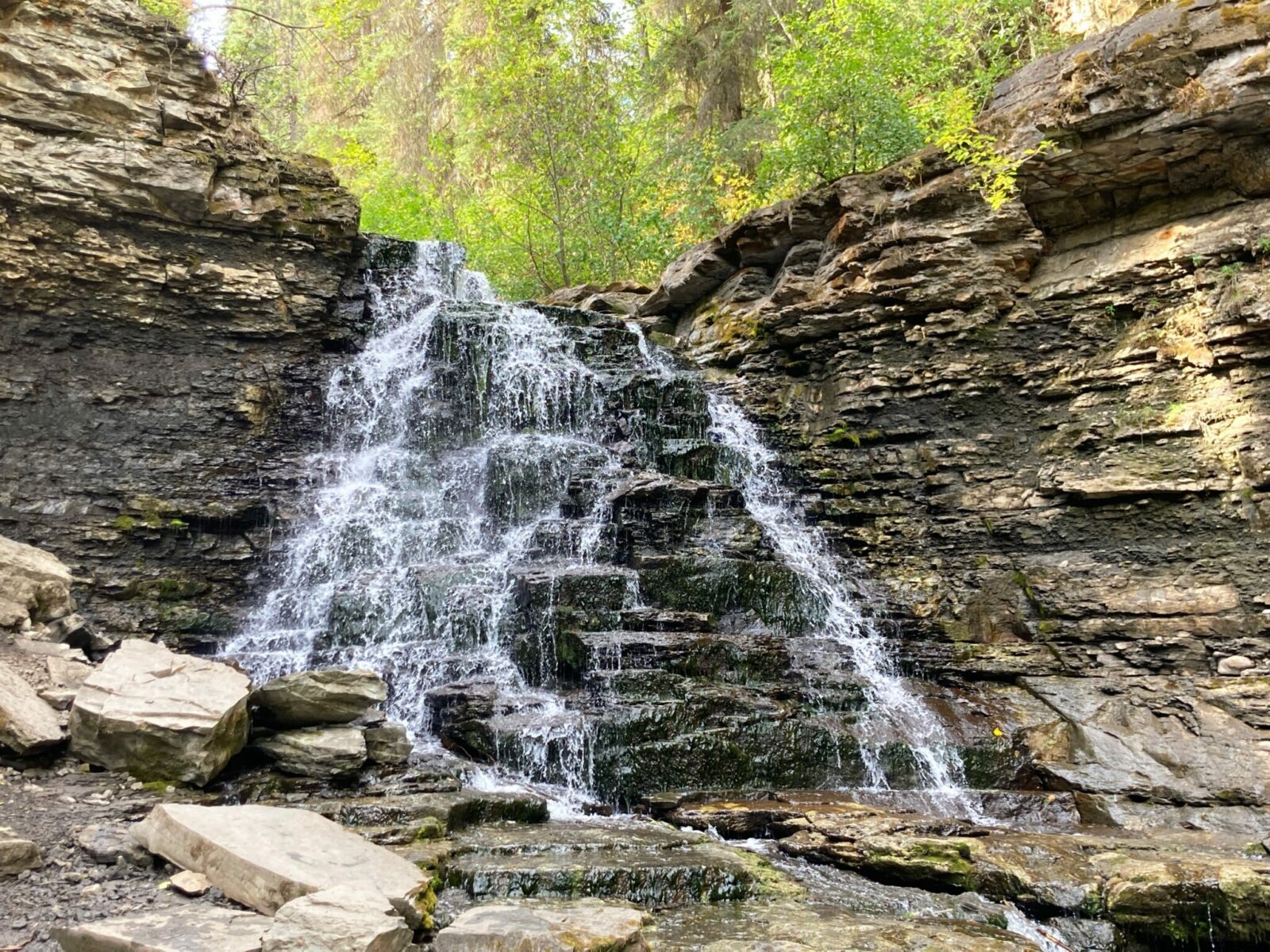
- Where it is: Tumbler Ridge is about an hour south of Dawson Creek at the beginning of the Alaska Highway.
- Why it’s awesome: This two hour round trip detour is well worth it, especially for geology fans! This UNESCO world heritage site has many hiking trails that lead you to 90+ million year old dinosaur tracks, fascinating boulders and stunning waterfalls. This is well worth a couple day detour.
Milepost 0, Dawson Creek
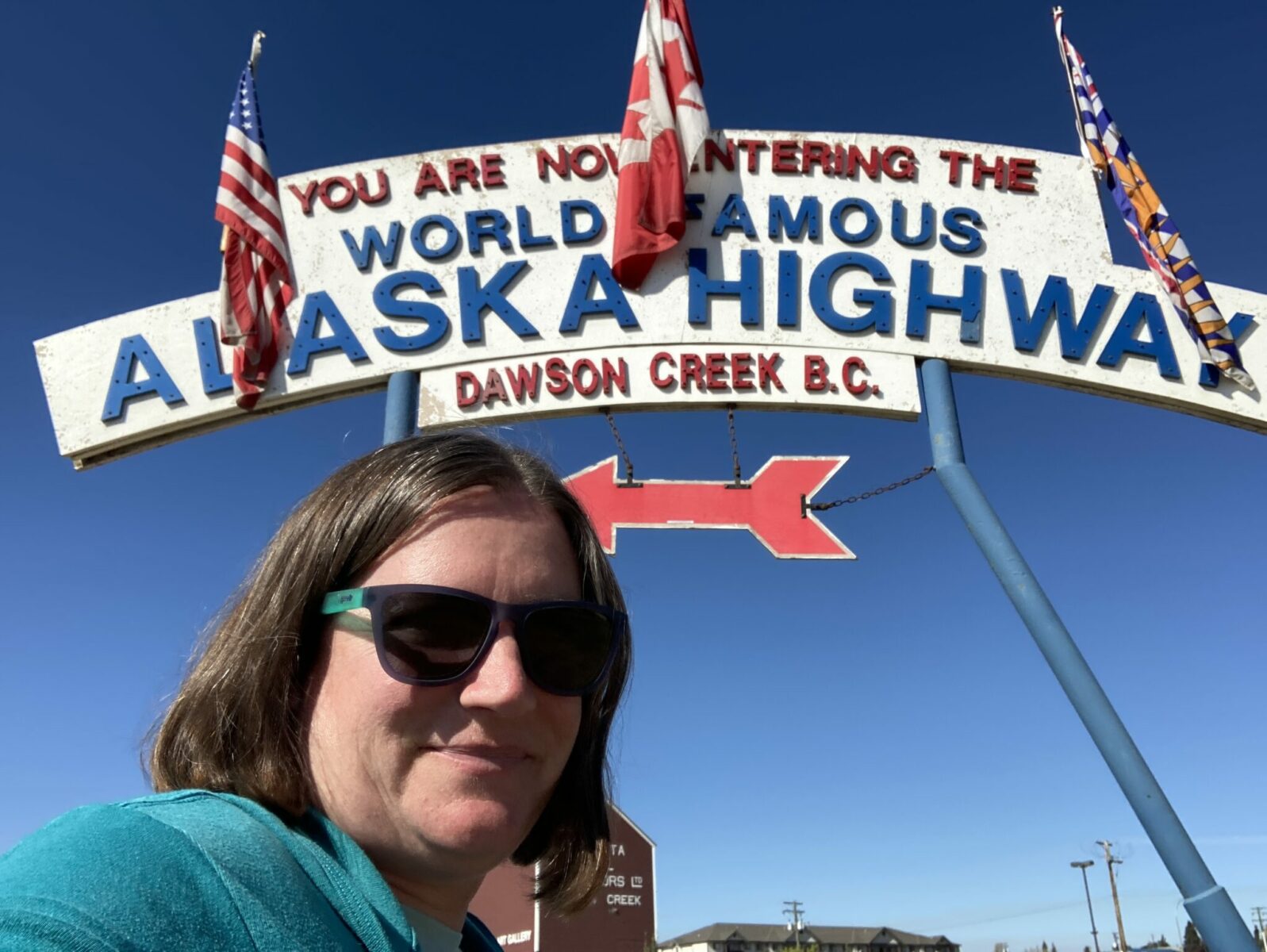
- Where it is: Right in the middle of the town of Dawson Creek, at the beginning of the Alaska Highway!
- Why it’s awesome: It’s a cheesy photo stop, but you gotta do it!
Tetsa River Lodge
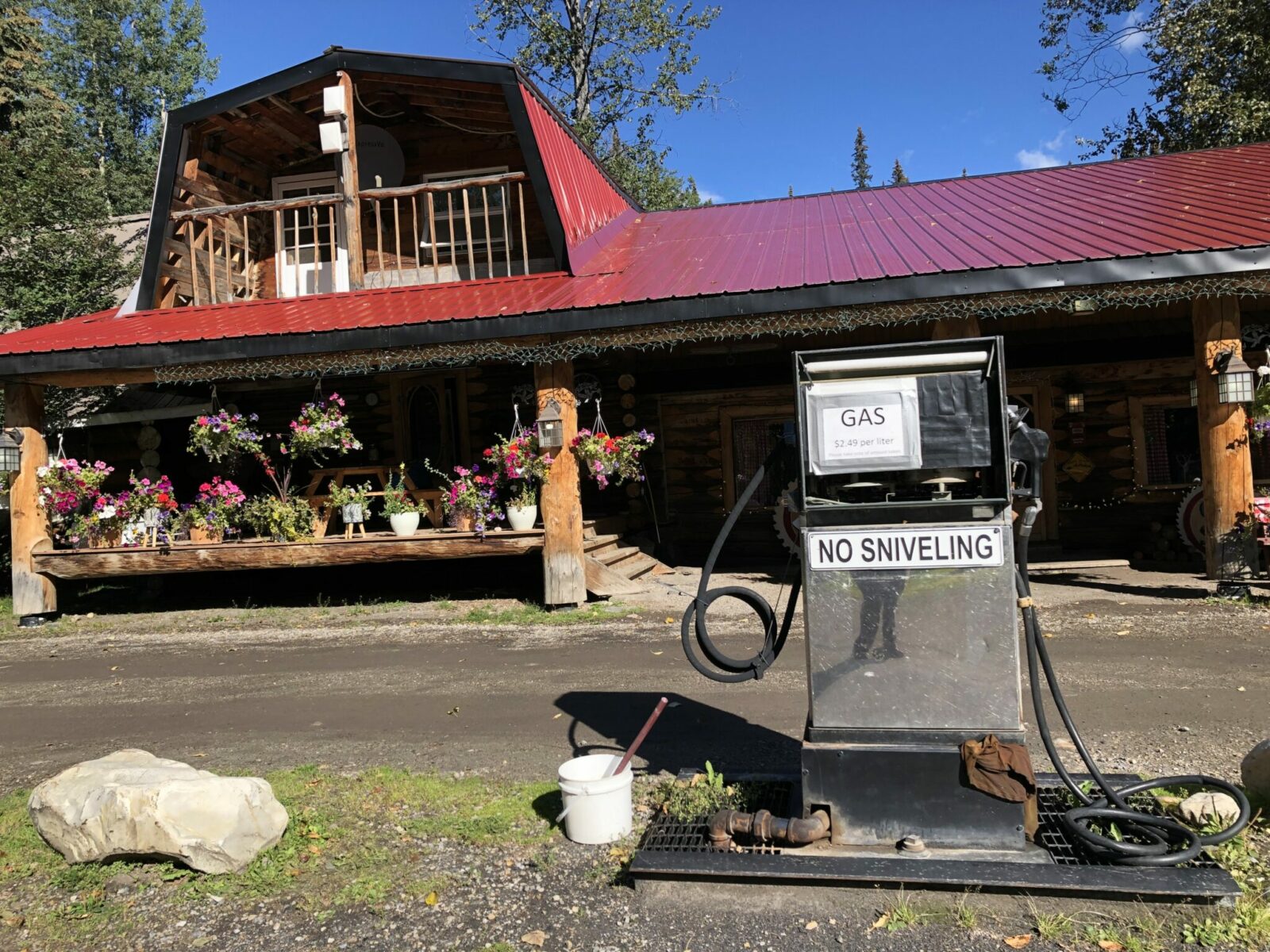
- Where it is: Alaska Highway Historic Milepost 375, between Fort Nelson and Muncho Lake
- Why it’s awesome: If you’ve heard of the legendary cinnamon rolls of the Alaska Highway, this is the place! Stop in and try one for yourself.
Toad River Lodge
- Where it is: Toad River is between Fort Nelson and Muncho Lake on the Alaska Highway.
- Why it’s awesome: The Toad River Lodge is one of my favorite roadhouses along the Alaska Highway. It’s quirky, friendly and has great roadhouse food. The bar is full of hats, the kind of quirky bar decor you often see in the far north!
Muncho Lake
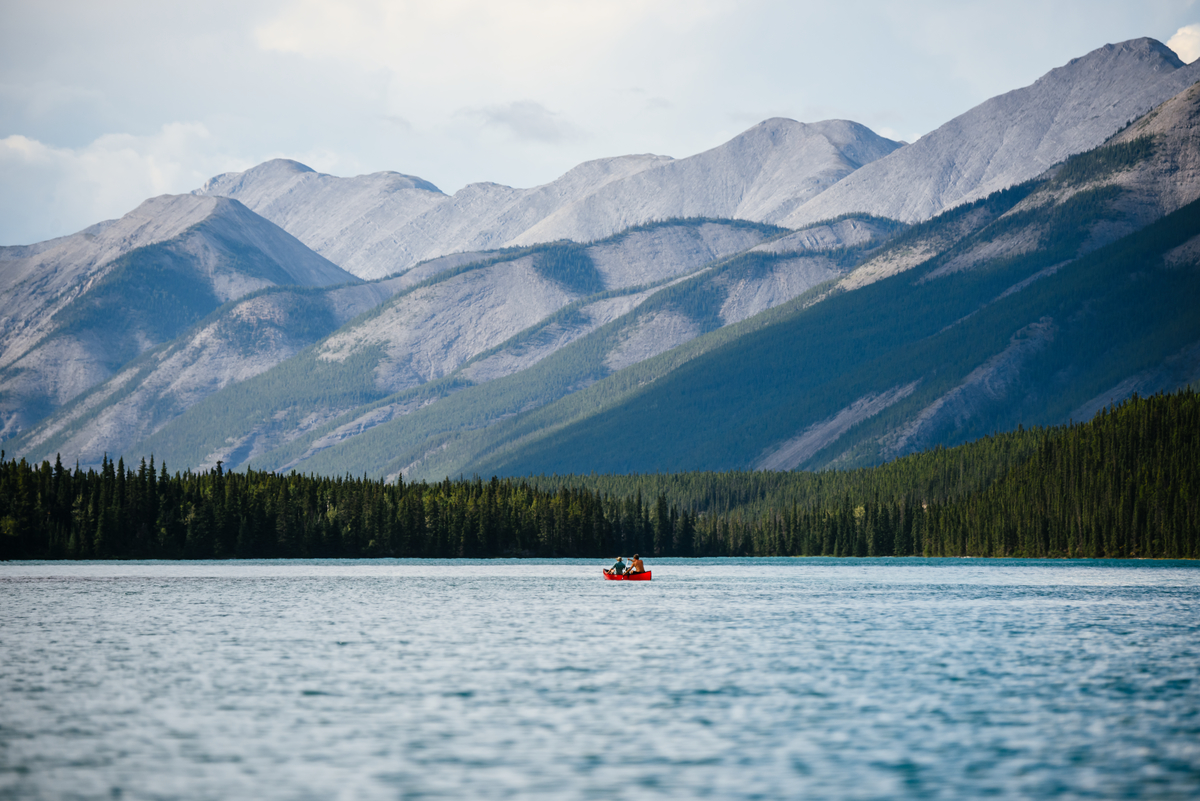
- Where it is: Between Toad River and Liard Hot Springs on the Alaska Highway
- Why it’s awesome: Muncho Lake is beautiful with lots of recreation opportunities. Great place to stop for lunch or camp for the night.
Liard River Hot Springs
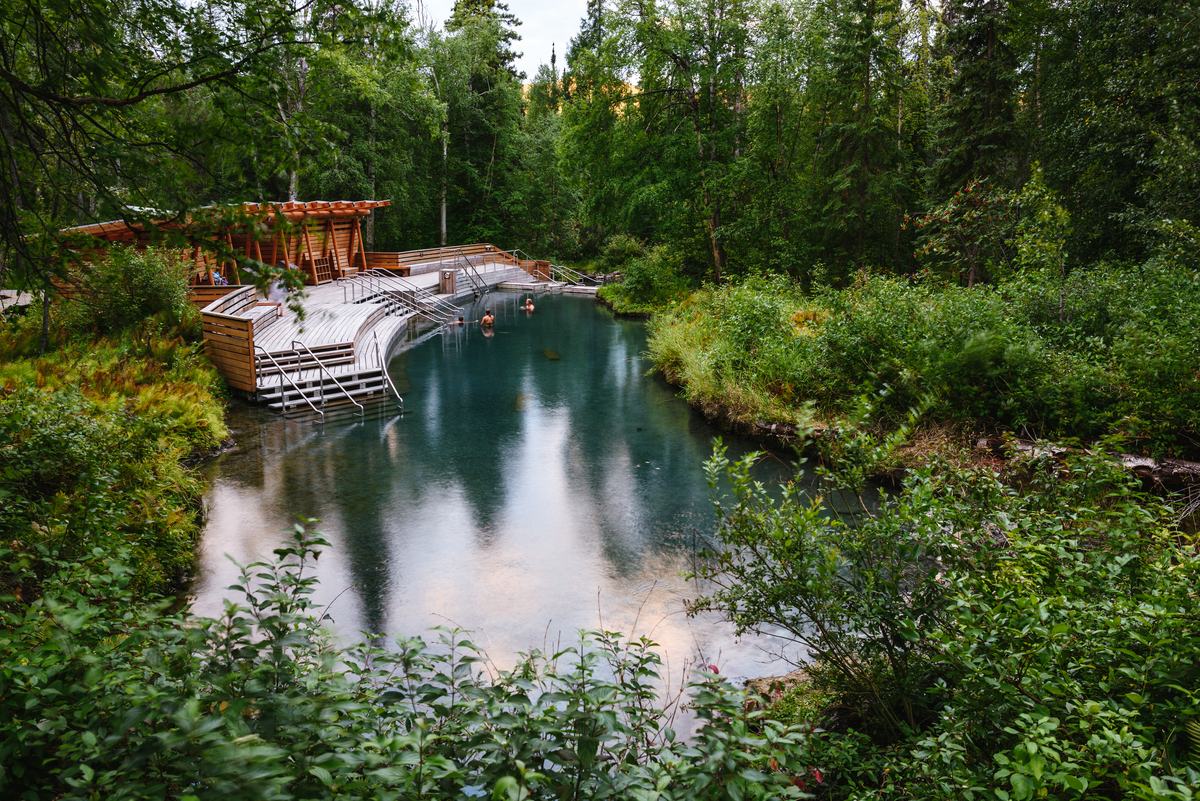
- Where it is: Between Muncho Lake and Watson Lake along the Alaska Highway in Northern BC
- Why it’s awesome: This gorgeous and developed hot springs is a must stop on the drive to Alaska! It’s located inside Liard River Hot Springs Provincial Park and has camping as well as a road house nearby. I highly recommend staying the night here which gives you the most soaking opportunities. In addition to the hot springs, there is plenty of opportunity to see an interesting mix of plant life that is able to survive in this otherwise harsh climate because of the hot water. This is a good place to see moose!
Watson Lake Sign Post Forest

- Where it is: In the town of Watson Lake, Yukon, on the Alaska Highway just after you cross the border from British Columbia into the Yukon.
- Why it’s awesome: This is the kind of quirky, interesting sight you will only see along the Alaska Highway! This is a massive collection of signposts that is colorful and highly photogenic, and fun to run around in.
Atlin (Side trip from the Alaska Highway near Whitehorse)
- Where it is: Atlin is located in Northern British Columbia, about 60 miles south of the Alaska Highway between Teslin and Whitehorse
- Why it’s awesome: If you’re going to make the side trip to Atlin (about 2.5 hours round trip), I highly recommend staying at least one night. Atlin is one of my absolute favorite places because of it’s stunning beauty and it’s remote setting far off the beaten track. It’s also an excellent place for fishing!
Skagway (Side trip from Whitehorse)
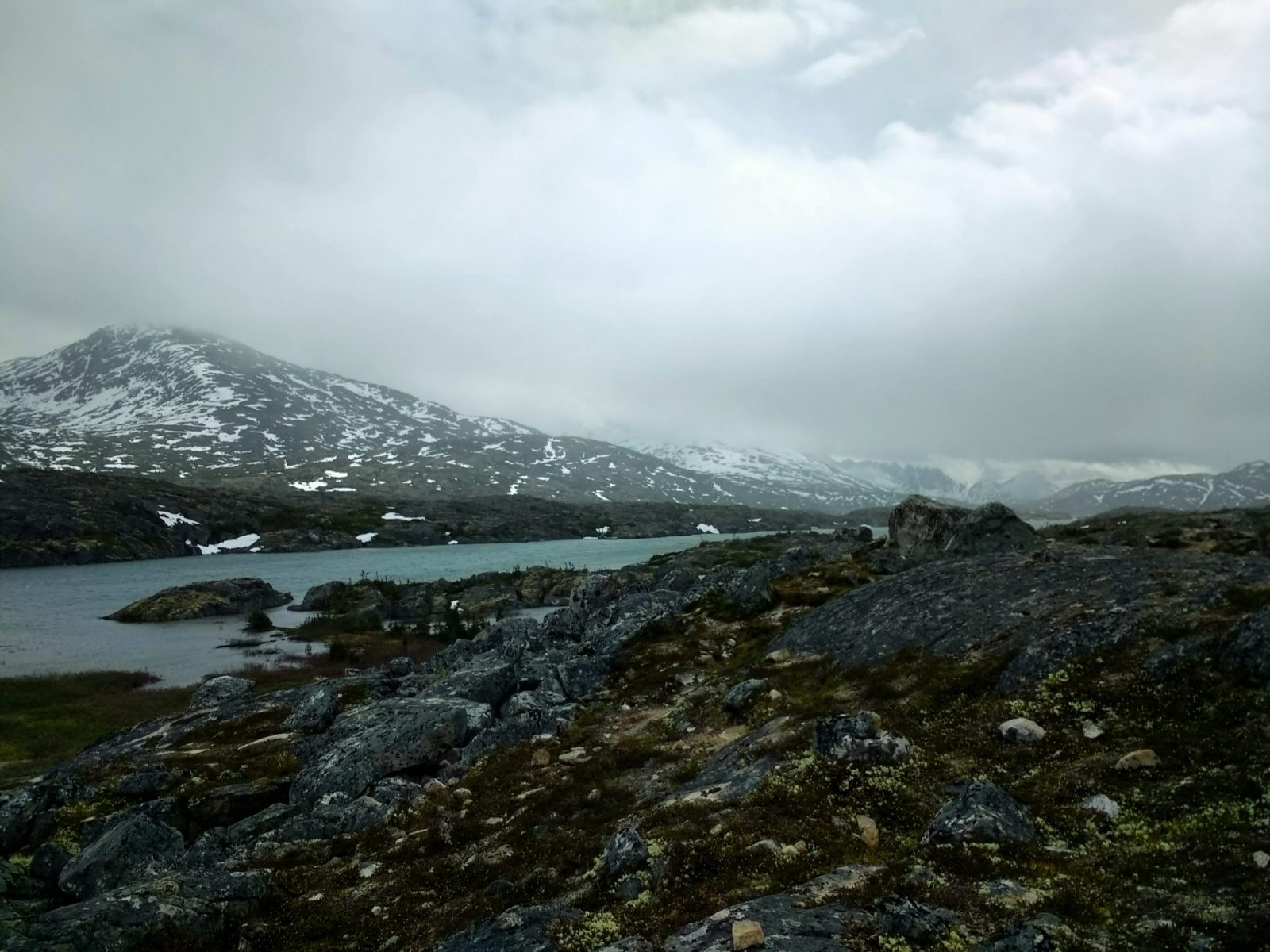
- Where it is: 100 miles south of Whitehorse on the South Klondike Highway
- Why it’s awesome: I spent three summer in Skagway so I can’t help but recommend this side trip to Skagway! An incredible scenic drive through multiple climate zones in a very short time, you’ll land at the head of the Inside Passage and bustling town during the Klondike Gold Rush. Skagway has fun history and many wonderful hikes that leave right from town. Skagway is served by the Alaska Marine Highway and it is possible to take a ferry from here to Bellingham, WA .
Miles Canyon
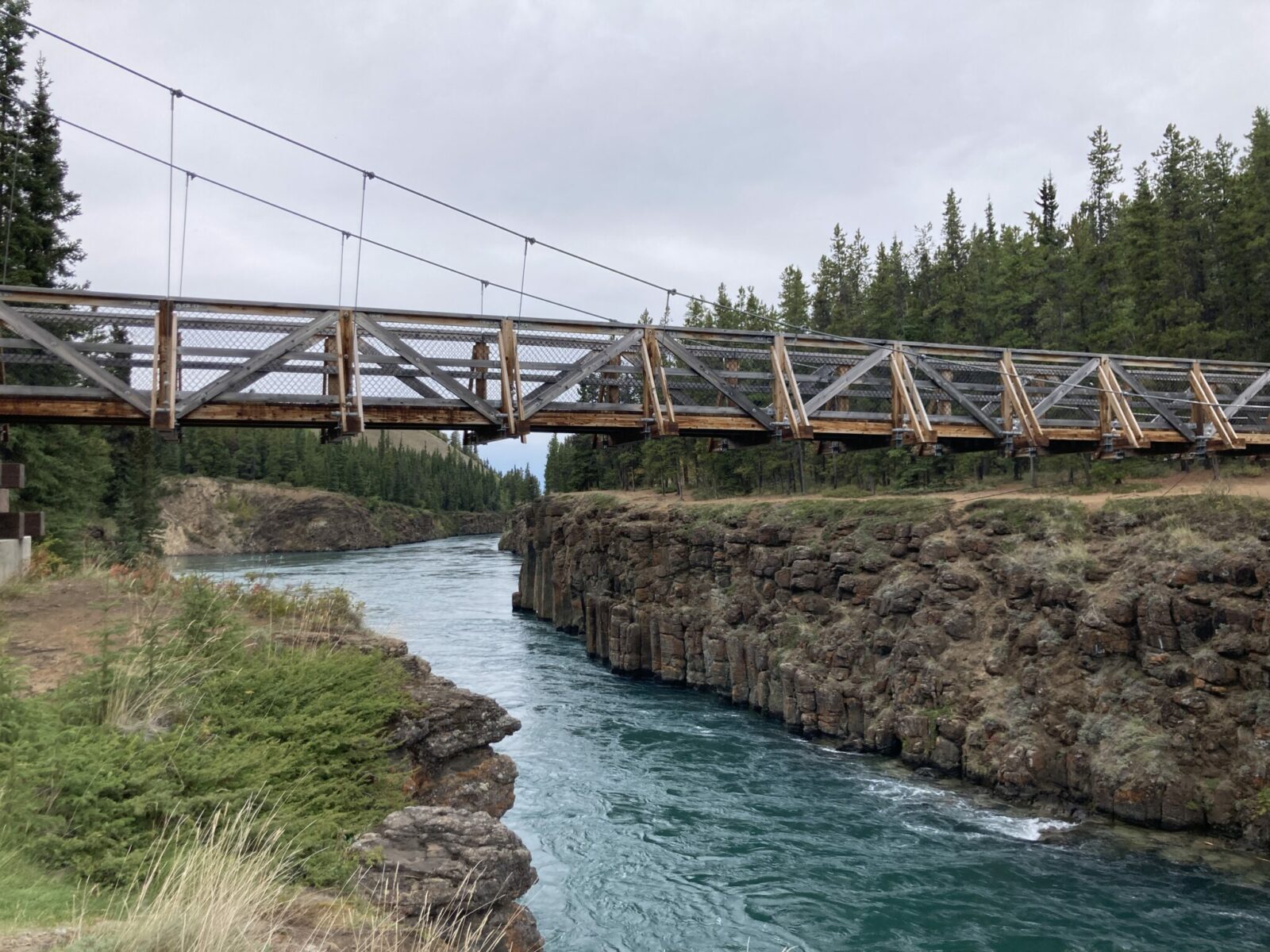
- Where it is: near Whitehorse
- Why it’s awesome: Miles Canyon is beautiful canyon created millions of years ago by lava flow. More recently, it’s been the site of a First Nations Fishing Camp as well as a site of harrowing travel by gold rush prospectors in homemade boats. You can drive there or do a 9 mile loop trail from downtown Whitehorse along the Yukon River.
Yukon Beringia Centre
- Where it is: Whitehorse
- Why it’s awesome: The Yukon Beringia Centre is a great place to learn about the natural and human history of the subcontinent of Beringia (what is now parts of Russia, Alaska and the Yukon). Here you can learn about the animals of the ice age as well as the landscape and people who first came to North America through Beringia, as well as modern First Nations.
Kluane National Park and Reserve

- Where it is: Kluane National Park borders the Alaska Highway along Lake Kluane is the Yukon, between Whitehorse and the Alaskan border.
- Why it’s awesome: This spectacular Canadian National Park is vast and doesn’t have a ton of visitors due to it’s remote location. The mountain and lake landscapes are just incredible. This is home to Mt Logan, Canada’s highest peak as well as Canada’s largest ice field. You can’t help but get a taste of Kluane driving the highway, but it’s fully worth it to spend some time here. There is a campground near the Alaska Highway and another at Kathleen Lake (a very worthwhile side trip). There are plenty of hiking and wildlife viewing opportunities in Kluane National Park as well.
How to Prepare Your Vehicle to Drive to Alaska
Any reliable road worthy vehicle will be totally fine to drive to Alaska . Its overall reliability is much more important than any specific capabilities (like 4 wheel drive or all wheel drive). This is a long road trip with long distances between services and more construction than a typical road trip, but the road itself does not require anything in particular from your vehicle. I have driven the Alaska Highway in a Honda Accord, a Chevy Astro minivan, a Toyota 4 Runner and a Ford F-250. All of them were just fine.
There are a few things you can do to help you and your vehicle be ready:
- Accept that this trip will be hard on your vehicle – you are likely to get windshield ding s and paint chips so it might not be ideal for a brand new vehicle!
- Make sure you have excellent tires . If there’s any doubt, get new tires before your trip. This will greatly reduce the odds of getting a flat.
- If possible, carry a full size spare tire . Make sure you have a spare tire and the equipment to change it (refer to your car’s manual)
- Get an oil change before you leave
- Mentally prepare to fuel up whenever you have the opportunity , regardless of cost. If you think this may be difficult for you, consider bringing a gas can. A gas can is not necessary, unless you try to push on too many times for cheaper fuel!
- Make sure your car insurance will cover you while in Canada
- Carry extra food, water and warm clothing and blankets in case of a breakdown. This will help you stay safe and comfortable if you need to wait for help. This is also helpful if you find yourself waiting a long time for road construction delays.
What if my car breaks down?
First of all, don’t panic! Breakdowns happen and people will help you. I’ve had several breakdowns on the Alaska Highway and have always been able to get help safely.
If you’re in a place with cell service, you can call for AAA Roadside assistance (which also exists in Canada). They will help you get help and to a shop that can fix your vehicle.
If you’re not in an area with cell phone service, put your hood up and someone will stop and see what you need. You may be able to get a ride to the nearest town, or you may be able to stay with the vehicle and someone will send help.
I know this sounds scary, but this is a place where strangers will help you. Mechanics even in very small towns will do everything they can to help you get back on the road. Even though it’s stressful, I’ve always been able to get back on the road in a few hours or by the next day, even when I was by myself.
What do I need to Bring to Road Trip to Alaska?
This section contains an affiliate link to Amazon, which means if you make a purchase I may receive a small commission at no additional cost to you. As an Amazon Associate, I earn from qualifying purchases
The most important thing you need to bring on your trip is the latest edition of the Milepost . This comprehensive guide is critical and includes all the access roads and all the roads in Alaska, the Yukon and most of British Columbia and Alberta. Get the latest edition because it’s updated every year, and things change! You can’t rely on your phone to look up information on this road trip. Trust me, you need this!
I recommend checking out my complete packing list for Alaska . A few things to call out specifically:
- Personal items including an prescriptions and over the counter medications – you’ll be in remote areas so make sure you have what you need
- Plenty of food and water – in a remote area it’s important to carry food and water with you since you won’t be able to stop just anywhere. A cooler is also helpful to give you the option of having fresh food! Stop at the first big town once you enter Canada to stock up (you can’t bring fresh produce across the border)
- Spare tire and tire changing equipment – the Alaska Highway is no longer the tire destroying road it once was, but there’s still a decent chance you’ll need to change a tire and the distances to finding someone who can help may be long. I’ve changed a tire at some point on most of the trips I’ve made on the Alaska Highway! I also recommend a paper copy of your vehicle’s manual if it’s not already in your glove box.
- Analog Entertainment – make sure to download those audio books, podcasts and playlists since you’ll be in long stretches of road with no cell phone signal. I also love to bring my Kindle for reading at night. Art supplies and games are fun additions too.
- Clothing for all kinds of weather – be ready for rapidly changing weather, hot days, wet and chilly days and downright cold (especially in May and September). My Alaska packing list has lots of suggestions!
- An awning and camp chairs for stops – this is completely not necessary but also completely amazing! The awning can protect you from rain and sun (you can even get a bug tent to strap on it) and the chairs are super handy.
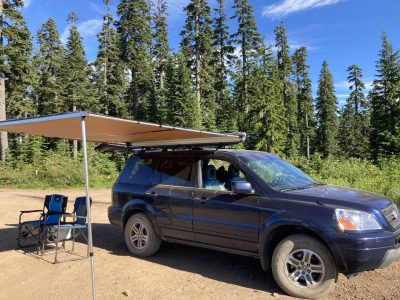
Get your FREE Alaska Highway Vehicle Checklist!

Privacy Policy

The Budget Savvy Travelers
BREAKING FREE WITHOUT BREAKING THE BUDGET
Home » 16 Things to Know Before Driving to Alaska in 2024
16 Things to Know Before Driving to Alaska in 2024
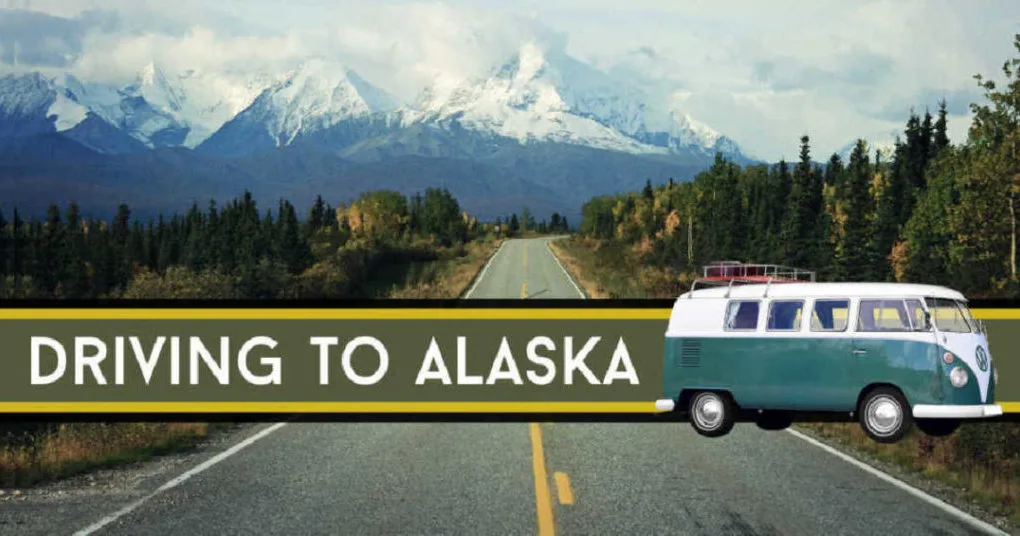
Driving to Alaska is officially the ultimate road trip. Travelers looking to take the scenic route had best be ready for the journey of a lifetime.
Along the way, plan on seeing some of the most spectacular scenery on earth. This once uncomfortable dirt road is now a modern-day highway system, and it’s one smooth ride!
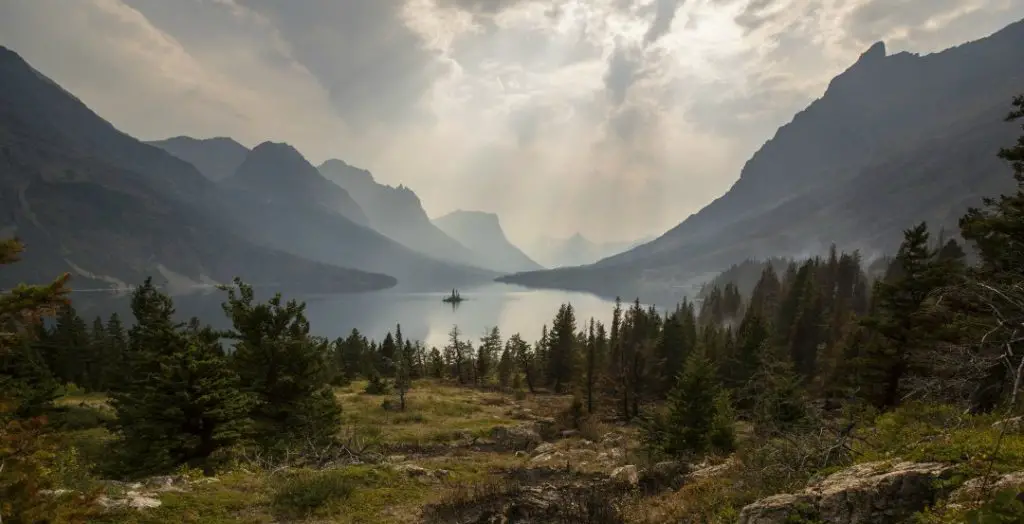
There are plenty of gas stations, accommodations, food stops, and visitor amenities all along the 1,500-mile journey. Honestly, the only thing you may have to worry about is some light construction along the way that may cause some minor delays.
Dawson’s Creek Marks the Start of the ALCAN
Dawson Creek, British Columbia marks the spot where the Alaska Highway (also called the ALCAN Highway or Alaska-Canada Highway) officially begins. To reach “Mile Zero,” from the West Coast you’ll drive north on Highway 97. From the Midwest, you’ll most likely travel through Edmonton, if you’re in a hurry.
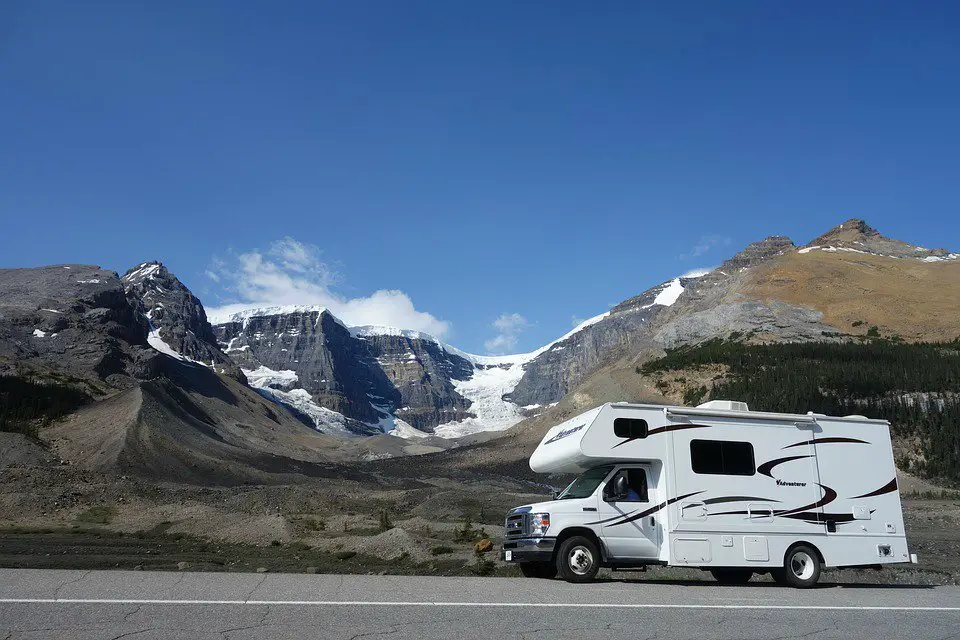
If you’re not in a rush, you should take a detour through Calgary to visit Banff and Jasper National Park . They’re part of the Canadian Rockies and they are breathtaking! The route from Banff to Jasper is known as the Icefields Parkway and is considered to be one of the most impressive drives in the world.
Take a Jasper National Park Tour > Check Availability
Driving can be challenging here. Just try to keep your eyes on the road and drive slowly. For example, we had a huge bear jump over the guardrail and run right in front of our vehicle as it darted across the highway!
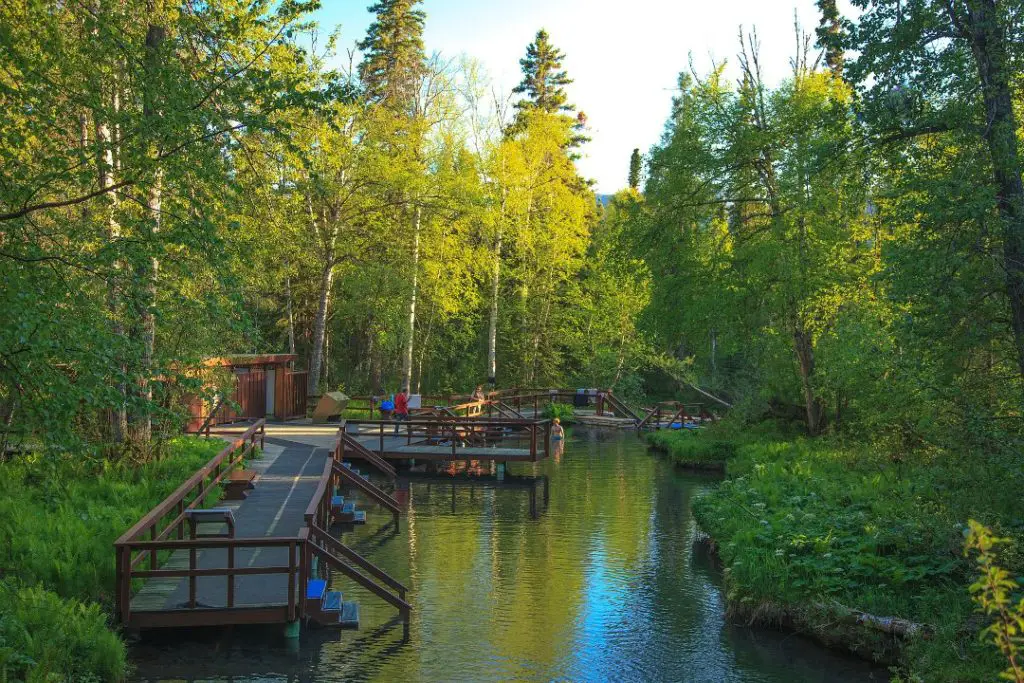
By the way, if you’re looking to rent a car, make sure to use Discover Cars for car rentals, we just used them on a trip down to Key West and saved a small fortune.
The route ends in Delta Junction, Alaska . However, the adventure will be far from over once you arrive. Soak it all in. Don’t rush.
There’s no other journey like it in the world. It’s a good thing to have your own wheels to sightsee at your own pace.
With limited or no access to the internet, you’ll need this guidebook
Adjusting to Life Without Stuff
For many Americans, one of the hardest aspects of driving to Alaska is not having everyday things right at their fingertips. With an Alaskan road trip, travelers need to strategically plan out their day a bit more than in the lower 48.
For example, you won’t come across gas stations and other facilities that are open 24 hours. Internet access and cell phone coverage are limited.
For most people, it may take a few days before they adjust to this pace. Additionally, if your GPS isn’t working because there isn’t a signal, you’ll have to rely on physical maps, we prefer the latest Rand McNally Road Atlas .
💰 Budget Tip : Before you depart, make sure to purchase low-cost travel health insurance for the days you’ll be traveling through Canada. As one of the most expensive countries in the world for health insurance, you don’t want to leave yourself susceptible to an expensive emergency procedure. Especially, when travel insurance will typically cost less than $10 per day.
When traveling abroad, we use Insubuy . More specifically, their Patriot International Lite plan.
16 Things to Know Before Driving to Alaska
The trip is not as remote and dangerous as you probably would first think but it is still important to take the proper precautions. You should know these 16 things before driving to Alaska:
- During the summer, you should come across gas stations, food options, and accommodations about every 20 to 50 miles.
- Bring a credit card as many gas stations are automated and don’t have a clerk.
- Plan on filling up your gas tank between 12 p.m. to 5 p.m. to make sure you have access to gasoline. Save money on fuel by making sure your tires are always properly inflated. We bought this awesome, compact, and strong digital tire compressor which shuts off automatically and can fill an empty 17-inch tire in two minutes!
- Canada uses the metric system so signs will look different. The speed limit will be in kilometers per hour (KPH), where 1 mile = 1.61 kilometers. Gas stations will sell by the liter, where one gallon = 3.79 liters.
- Expect to pay about 20% more for gasoline along the route.
- Much of the road will be a two-lane paved asphalt highway with a gravel shoulder wide enough for the typical vehicle.
- Pay attention to weather forecasts to prevent driving during inopportune times.
- Drive with your headlights on.
- Radar detectors are illegal.
- If you like the idea of slow traveling, plan on taking at least four weeks (roundtrip) to complete.
- Whitehorse is the Yukon’s territorial capital and the largest community along the route.
- If you’re caught speeding at more than 40 kph or 25 mph over the speed limit in British Columbia, you’re likely to have your car impounded.
- It’s a good idea to verify your specific situation with the Royal Canadian Mounted Police before attempting to cross the border with any kind of weapon, including sprays.
- Check with your cell phone provider about the coverage they supply along the route. You may be surprised that it won’t cost you anything additional. However, if it’s lacking, it may be worthwhile to look into purchasing a satellite phone. Make sure to keep your phones charged in case of an emergency. We recently bought this 3.0 Port 36W/6A Fast Car Charger and it charges are phone 3x as fast, it’s amazing!
- The best time to drive the route is from May through September.
- There are not that many plush accommodations along the way so it’s a good idea to make reservations as soon as possible. See the best lodging options along the way below.
7 Best Stops Along the Way
Along the way, you’ll be passing through some of the best untouched wilderness in the world. This drive is incredibly popular for independent travelers seeking outstanding scenery, unique cultural attractions, adventurous tours, and unforgettable experiences.
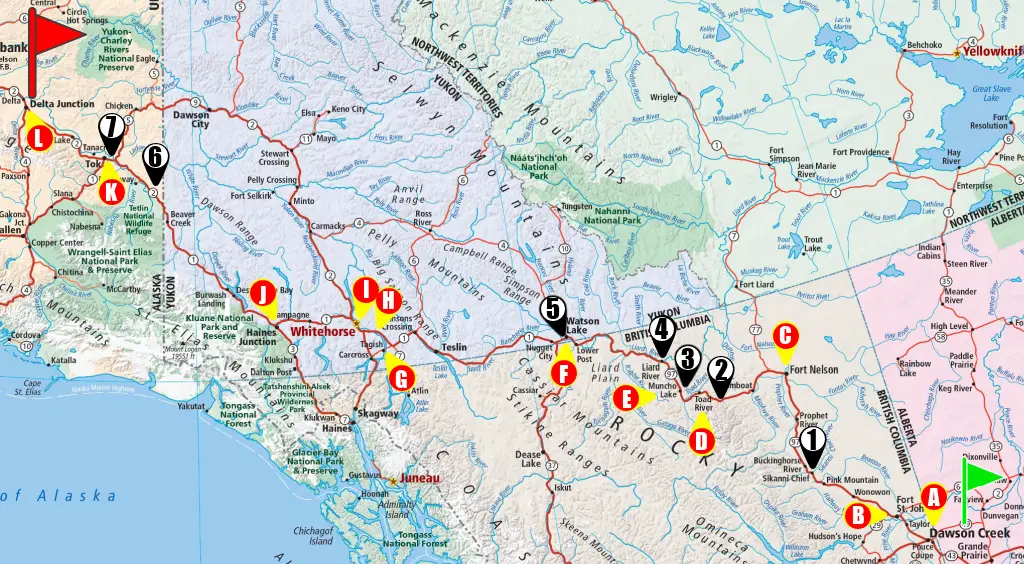
There are numerous things to see and do in the towns of Whitehorse and Haines Junction. Therefore, it’s probably worth spending a couple of days in each town. Besides those two towns, there are seven highlights to visit, from south to north, along the Alaska Highway, including:
- Sikanni Chief Falls Protected Areas : 100-ft waterfall
- Stone Mountain Provincial Park: Hiking and wildlife viewing
- Muncho Lake Provincial Park: Serenity and Seclusion
- Liard River Hot Springs Provincial Park : Natural setting for stress relief
- Sign Post Forest near Watson Lake : The most unique stop along the way
- Tetlin National Wildlife Refuge: Scenic overlooks, wild animals, beautiful birds
- Muklukland : Unusual exhibits and fun activities
Best Places to Stay Along the Way
Below are the best places to stay, south to north, from Dawson Creek to Delta Junction. We would reserve these sooner than later because they’re in high demand and there are only a few decent places to stay along the way.
(A) Dawson Creek: Stonebridge Hotel Dawson Creek (pool, hot tub, fitness center) (B) Fort St. John: Northern Grand Hotel (clean and modern) (C) Fort Nelson: Woodlands Inn & Suites (laundry facilities) (D) Toad River: Stone Mountain Safaris Bed and Breakfast (hot tub) (E) Muncho Lake: Double G Service (serves American cuisine) (F) Watson Lake: A Nicer Motel (charming motel with kitchenettes) (G) Tagish: Little Atlin Lodge (boat rentals and fishing on site) (H) Marsh Lake: Inn On The Lake (fitness center, hot tub, and sauna) (I) Whitehorse: Hidden Valley Bed and Breakfast (J) Haines Junction: Parkside Inn (breakfast includes eggs, muffins, and fruit) (K) Tok: A Hyde Away Inn B&B (balconies with mountain views) (L) Delta Junction: Kelly’s Alaska Country Inn (kitchenette)
Our favorite inn along the way – Hidden Valley B&B > Check Availability
Willing to choose the places to stay by yourself or in case getting a bit off the route? Try Trivago : a service comparing the best prices.
Top 4 Popular Tours in the Yukon
- 🐻 See the highlights of the Yukon Wildlife Preserve on this half-day tour where you’ll have the opportunity to view and photograph wildlife in its natural habitat. Next, your guide will take you to the nearby hot springs.
- 🛏️ Stay at a small lodge with sled dogs for two nights gazing up at the stars and Northern Lights. During the day, help exercise the dogs and tour the Yukon Wildlife Preserve.
- 🚥 In late summer, this tour is one of the most sought-after Northern experiences . You’ll be picked up at your hotel in Whitehorse and taken outside of the city to a custom-built viewing location to view the stunning colors of the aurora borealis.
- 🛩️ Hop on a sightseeing plane and go on a 1.5-hour tour of Tombstone Territorial Park . This flight is a great way to kick off your trip near Dawson Creek and will allow you to experience the contrast of the sub-Arctic tundra and mountain-alpine landscapes and rivers.
Highway 37 Stewart-Cassiar Scenic Route
When you decide to return to the lower 48, instead of returning on the ALCAN, you may consider taking Highway 37, the Stewart-Cassiar Scenic Route. Whether you take Highway 37 or 97, from Watson Lake to Prince George, the driving time is about the same, so why not take a different avenue?
While it may not be as picturesque as Highway 97, Highway 37 has its perks. For instance, it’s much less congested, enjoys smoother pavement, more wildlife opportunities, and has a few highlights of its own including several lakes and provincial parks.
From Watson Lake to Kitwanga, there is limited cell service along Highway 37. Therefore, you must make your lodging accommodation in advance. There’s only one inn along the way, Northway Motor Inn in Dease Lake , and if you don’t overnight there it may take another 6+ hours to reach Highway 16 in Kitwanga. Once on Highway 16, the LDR Lodge – Last Dollar Ranch is a great place to stay.
We use this budget-savvy travel health insurance to protect our trips > Get a Quick Quote
What to Do to Prepare Your Vehicle For Driving to Alaska
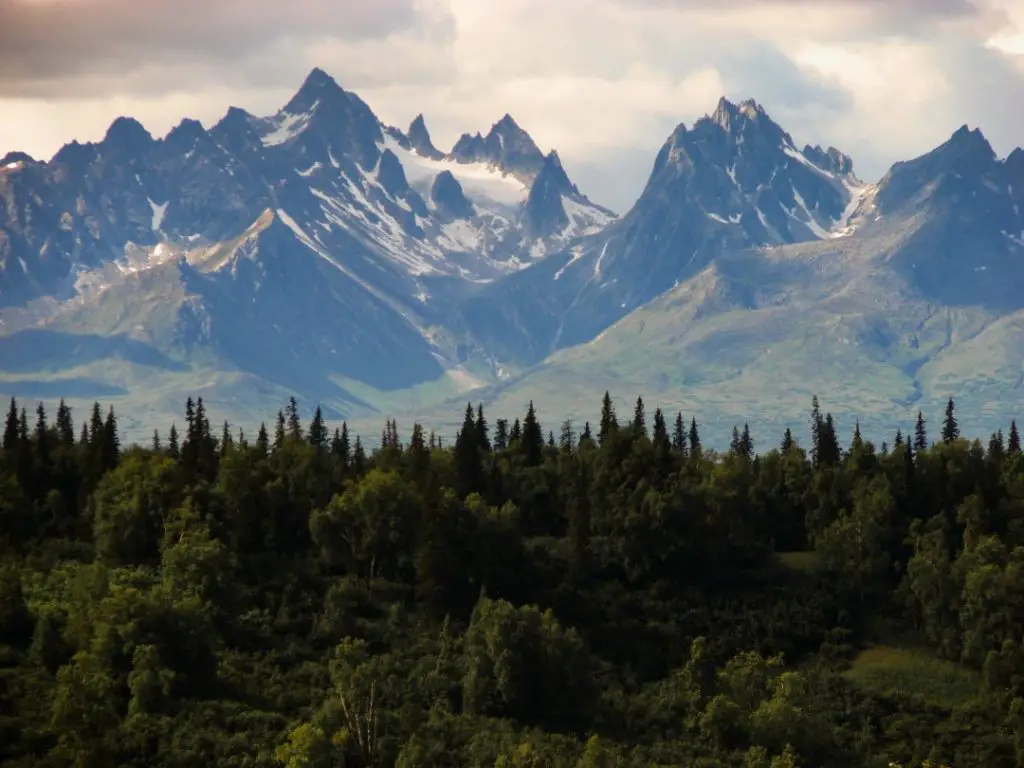
Pretty much any vehicle is capable of making the trip to Alaska — even a motorcycle! The trip is about 48 hours nonstop, so you must take a vehicle that you trust and feel safe in. However, we recommend taking at least a week so that you can enjoy a few sites along the way.
Before departing, plan on taking reasonable precautions with your vehicle such as making sure you’re up to on scheduled maintenance and topping off fluids. Also, you should verify that you have the appropriate parts, in good working order, to change a flat tire.
Here are a few more tips on things you should bring along on the journey:
- Roll of duct tape for blown hoses , amongst other things
- A couple of microfiber towels and reusable rags
- Spare key—keep in purse or wallet
- Flashlight—Harry’s favorite everyday flashlight —or use this high-powered flashlight to spot wildlife at night (both USB charging)
- Extra drive belt
- Bottled water and snacks in case of an emergency
- Cheap jumper cables
- Tire gauge and compressor
- Funnel to add fluids
- Bucket —it can be used to store the above items and could come in handy
Is Driving to Alaska Worth It?
Yes, especially if you enjoy road trips! It’s an epic journey down wonderfully scenic roads, passing fun and interesting attractions, that few people do. However, it does take a lot of time, consumes a lot of gas, and some parts are quite mundane—like everything in life, you must take the good with the bad.
For instance, the journey from the border of the USA, near Montana, will cover about 2,000 miles (one-way) to reach Alaska. Driving non-stop, the expedition will take about 32 hours!
Below are the distances and driving times from two other states.
- Driving to Alaska From Denver, Colorado – 2,800 miles, 47 hrs
- Driving to Alaska From Dalla, Texas – 3,500 miles, 58 hrs
What’s the Best Guidebook For Driving to Alaska
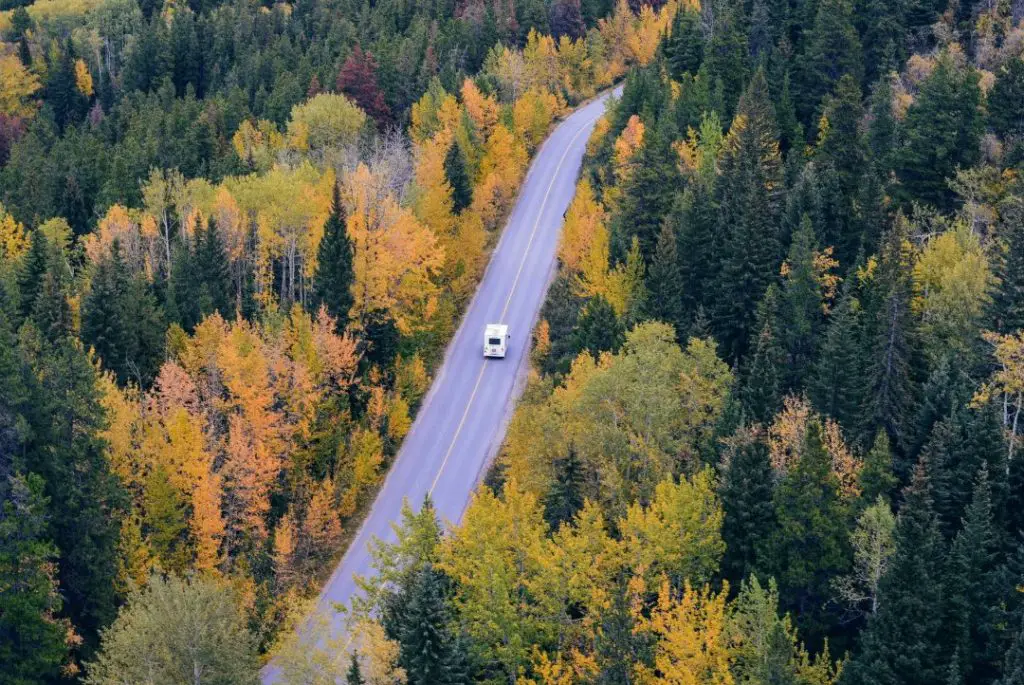
A carefully planned journey offers the opportunity to experience a world before development, where wild animals still roam a landscape covered with glaciers , tundra, mountains, lakes, streams, and forests. The only downfall to all of this fresh air and wide-open space is that there are only a few roads and limited tourist infrastructure.
The Milepost 2023 travel planner is a 700-page, mile-by-mile description of more than 15,000 miles of road in Alberta, British Columbia, Northwest Territories, Yukon, and Alaska.
The Milepost travel planner will assist you in finding accommodations, gas stations, restaurants, sightseeing opportunities, stores, and attractions. These facilities may be few and far between and separated by highly variable weather.
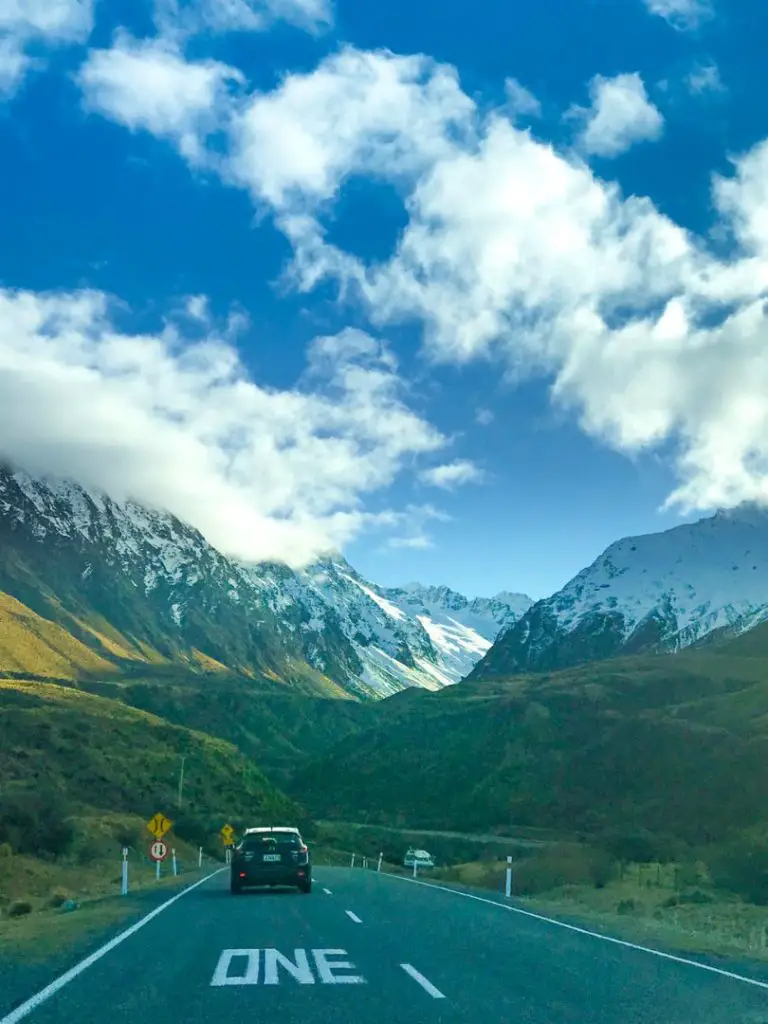
What is available tends to fill up quickly, especially during the summer. Planning is a good way to ensure your experience meets or exceeds your comfort levels. The Milepost is a great travel planning book that most visitors will need. You know it’s good when even the locals tend to carry a copy with them.
We Need Your Help
Did you find this article helpful? If so, bookmark it and when you’re planning your next vacation click on any of the links below before finalizing reservations. You’ll get the best price, we’ll earn a small commission, and you’ll help support future articles.
BEST TRAVEL SEARCH ENGINES
🏘️ Book Your Accommodation
We use Tripadvisor and Priceline’s Express Deals to compare prices and reviews in advance and check availability
✈️ Book Your Flight in Advance
To find the cheapest flight options, you can use WayAway and Skyscanner to find the most suitable choice for you
🚗 Reserve Your Rental Car
Use DiscoverCars and Skyscanner to compare prices and view the largest selection of vehicles
- ← Save up To $70 or 30% Airbnb Coupon Code in 2021
- How to Report Cryptocurrency Taxes | Bitcoin and Virtual Currency →
Similar Posts
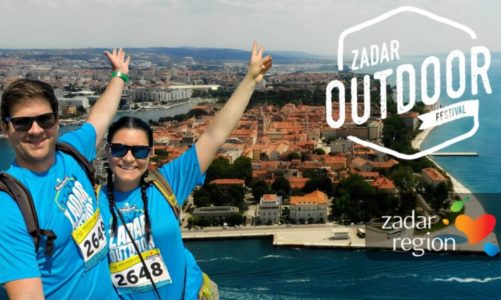
Zadar Outdoor Festival | Everything You Need to Know
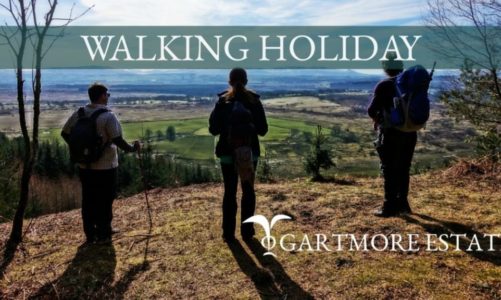
Best Scotland Holiday | Have You Ever Taken a Scottish Activity Holiday?
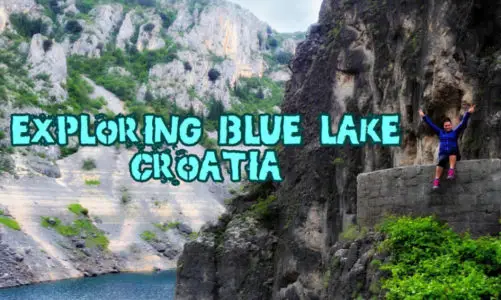
Exploring the Mystic Blue Lake in Imotski Croatia
Leave a reply cancel reply.
You must be logged in to post a comment.
- TRAVEL ARTICLES
- BOSNIA AND HERZEGOVINA
- GEORGIA-SAKARTVELO
- GREAT BRITAIN
- NETHERLANDS
- MASSACHUSETTS
- NORTH CAROLINA
- PENNSYLVANIA
- SOUTH CAROLINA
- PHILIPPINES
- SAUDI ARABIA
- UNITED ARAB EMIRATES
- REPUBLIC OF THE CONGO
- SOUTH AFRICA
- AMERICAN SAMOA
- COOK ISLANDS
- NEW ZEALAND
- DOMINICAN REPUBLIC
- PUERTO RICO
- TIPS, TRICKS, AND BUDGET-SAVVINESS
- FIRST 6 MONTHS
- MONTHS 7-10
- MONTHS 11-15
- MONTHS 16-18
- MONTHS 19-24
- PROJECTED ROUTE
- LATEST VLOGS
- EPISODE 1-5: BUENOS AIRES, ARGENTINA
- EPISODE 6: URUGUAY
- EPISODE 7: ANTARCTICA
- EPISODE 8: PATAGONIA
- EPISODE 9: SOUTH AMERICAN WINE COUNTRY
- EPISODE 10: THE COOK ISLANDS
- EPISODE 11: NEW ZEALAND AND AUSTRALIA
- EPISODE 12: INDIA
- EPISODE 13: BORNEO
- EPISODE 14: THAILAND
- SPONSORED CONTENT
- WHY DID WE QUIT OUR JOBS TO TRAVEL?
- OUR PAST TRAVELS
- HOW CAN YOU HELP?
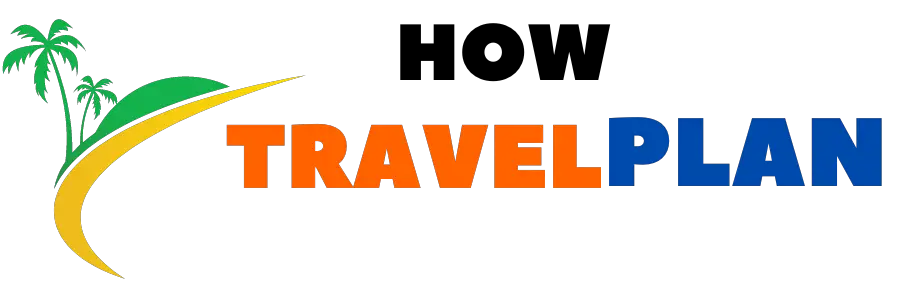
How to Get to Alaska Without Going Through Canada: A Guide for Travelers
Getting to Alaska without going through Canada is a challenge, but it is possible. The only road that connects Alaska to the rest of the world passes through Canada , which means that travelers must cross the border at some point. However, there are a few ways to minimize the amount of time spent in Canada and make the trip more manageable.

One option is to take a ferry from Bellingham, Washington to Whittier, Alaska. This route avoids crossing the Canadian border altogether and is a popular choice for travelers who want to bring their vehicles with them. Another option is to fly directly to Alaska from the lower 48 states or Hawaii. This is the quickest and easiest way to get to Alaska, but it can be expensive and may not be feasible for travelers who want to bring their own vehicles.
Regardless of the method chosen, travelers should be prepared for a long and potentially challenging journey . The route to Alaska is remote and often lacks services, so it is important to bring plenty of supplies and be comfortable driving in remote areas. With the right preparation and planning, however, getting to Alaska without going through Canada can be a rewarding and unforgettable experience.
Planning Your Alaska Road Trip

When it comes to planning a road trip to Alaska, there are a few important factors to consider. In this section, we’ll cover some of the key things to keep in mind to help you plan a successful and enjoyable trip.
Understanding the Geography
One of the first things to consider when planning your Alaska road trip is the geography of the region. Alaska is a vast and rugged state, with many remote areas and limited infrastructure. As such, it’s important to be prepared for long stretches of driving with few services or amenities.
If you’re planning to drive to Alaska without going through Canada, you’ll need to enter the state via one of its few road connections with the lower 48 states. The most popular route is the Alaska Highway, which stretches from Dawson Creek, British Columbia, to Delta Junction, Alaska. However, there are also other routes to consider, such as the ferry system or driving through the state of Washington.
Choosing the Right Vehicle
Another important consideration for your Alaska road trip is choosing the right vehicle. You’ll want a vehicle that is reliable, comfortable, and able to handle the rugged terrain and long distances of the trip. Additionally, you’ll need to consider factors such as gas mileage and cargo space, especially if you’re traveling with a lot of gear or supplies.
Preparing for Remote Travel
Finally, it’s important to be prepared for the remote and sometimes challenging conditions of travel in Alaska. This means packing appropriate clothing and gear for the weather, as well as bringing along plenty of food, water, and other supplies. You’ll also want to make sure you have proper identification , such as a passport or other form of identification for U.S. citizens.
Overall, planning a road trip to Alaska without going through Canada requires careful consideration and preparation. By understanding the geography, choosing the right vehicle, and preparing for remote travel, you can ensure a safe and enjoyable trip to this beautiful and rugged state.
Alternative Routes to Alaska

If you’re looking to get to Alaska without going through Canada, there are a few alternative routes to consider. Here are two options that may work for you:
Using the Alaska Marine Highway System
One option for getting to Alaska without going through Canada is to use the Alaska Marine Highway System. This is a ferry system that connects Bellingham, Washington to several ports in Alaska, including Anchorage and Juneau. This option allows travelers to bring their vehicles on the ferry, making it a popular choice for those who want to explore Alaska by car.
The Alaska Marine Highway System has several different routes to choose from, so you can customize your trip to fit your needs. For example, you can take the Inside Passage route , which is known for its stunning scenery and wildlife sightings. Or, you can take the Gulf of Alaska route, which is a faster option that takes you through Prince William Sound.
Flying to Alaska and Renting a Car
Another option for getting to Alaska without going through Canada is to fly to Alaska and rent a car. This option is more expensive than taking the ferry, but it may be faster and more convenient for some travelers.
There are several airports in Alaska that you can fly into, including Anchorage, Juneau, and Denali National Park. Once you arrive, you can rent a car and explore the state at your own pace. Keep in mind that some areas of Alaska are only accessible by car during certain times of the year, so be sure to do your research before you go.
Overall, there are a few alternative routes to consider if you want to get to Alaska without going through Canada. Whether you choose to take the ferry or fly and rent a car, you’re sure to have an unforgettable adventure in the Last Frontier.
Frequently Asked Questions

What are the requirements for driving through Canada to reach Alaska?
To drive through Canada to reach Alaska, travelers must have a valid passport and any necessary visas. Additionally, travelers must be in compliance with all Canadian entry requirements, including COVID-19 protocols. It is recommended that travelers check with the Canadian government for the most up-to-date information on entry requirements.
What are the options for reaching Alaska by ferry?
One option for reaching Alaska by ferry is the Alaska Marine Highway, which connects Bellingham, Washington to several ports in Alaska. This option allows travelers to bring their vehicles on the ferry and explore Alaska by car. Another option is to take a ferry from Seattle, Washington to Ketchikan, Alaska, and then drive the rest of the way.
Is it safe to undertake a road trip to Alaska?
Undertaking a road trip to Alaska can be safe as long as travelers take necessary precautions and are prepared for the journey. It is recommended that travelers have a reliable vehicle, carry enough food and water, and have a plan in case of emergencies. Additionally, travelers should be aware of the weather conditions and plan their trip accordingly.
What are the air travel options for getting to Alaska?
There are several airlines that offer flights to Alaska, including Alaska Airlines, Delta, and United. Travelers can fly into Anchorage, Fairbanks, Juneau, or other cities in Alaska, depending on their destination.
What are the estimated costs associated with driving to Alaska?
The estimated costs associated with driving to Alaska can vary depending on several factors, including the traveler’s starting point, the route taken, and the time of year. Travelers should budget for gas, food, lodging, and any necessary vehicle maintenance.
Do US citizens need a passport to drive to Alaska?
Yes, US citizens need a valid passport to drive through Canada to reach Alaska. It is recommended that travelers also carry a copy of their birth certificate and any necessary visas.

As a seasoned traveler, I’ve visited countless destinations and experienced a wealth of cultures. I’ve been traveling for years. From the mountains to the beaches, I share my travels and insights on this website to help you plan your next journey. Let’s explore the world together!
Similar Posts
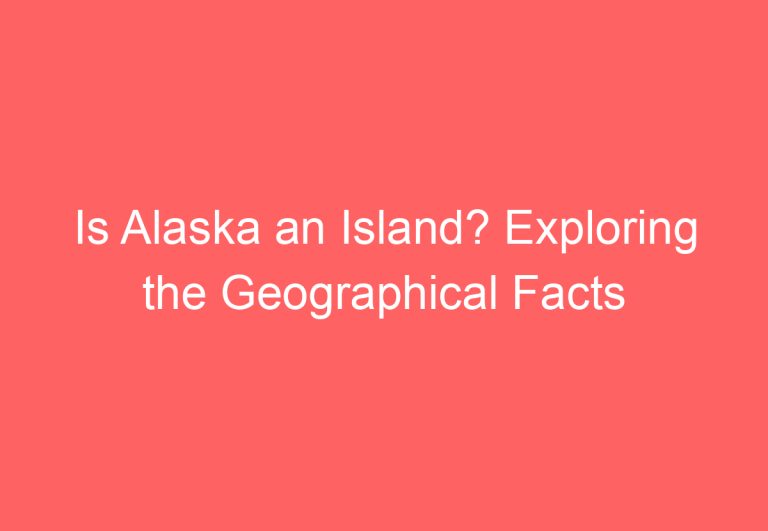
Is Alaska an Island? Exploring the Geographical Facts
Alaska, the largest state in the United States, is a land of vast wilderness, rugged terrain, and stunning natural beauty. It is known for its towering mountains, sprawling glaciers, and…
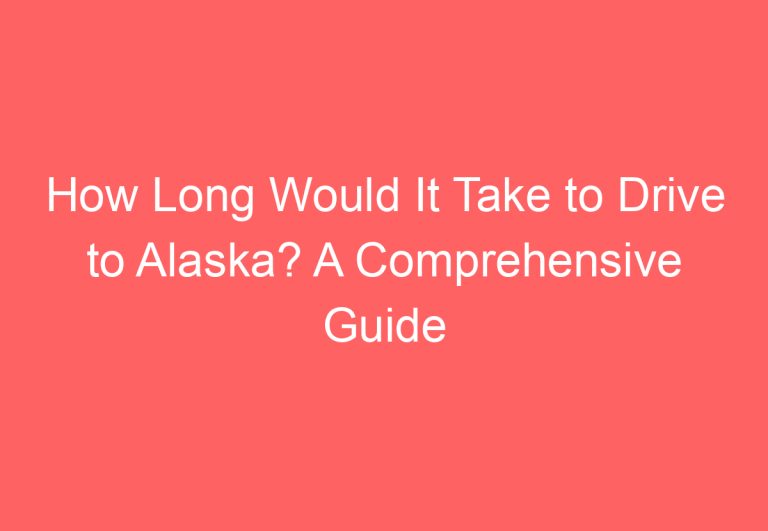
How Long Would It Take to Drive to Alaska? A Comprehensive Guide
Driving to Alaska is a dream for many adventurers. However, before embarking on this journey, it’s important to know how long it would take to reach your destination. The driving…
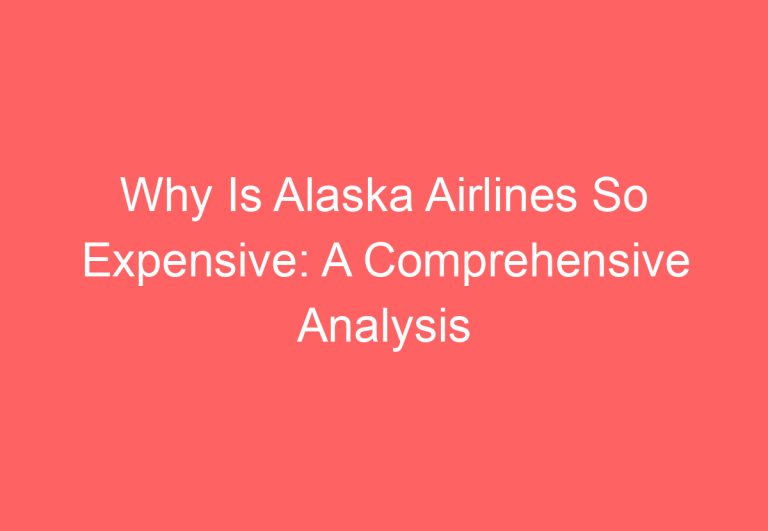
Why Is Alaska Airlines So Expensive: A Comprehensive Analysis
Alaska Airlines is often considered one of the best airlines in the United States. However, with this quality comes a price tag that can be significantly higher than its competitors….

How Much Would Alaska Be Worth Today: Evaluating the Value of the Last Frontier
Alaska, the largest state in the United States, is known for its stunning natural beauty, abundant wildlife, and vast oil reserves. It was purchased from Russia in 1867 for $7.2…

Best Time To Visit Napa Valley: A Guide For Wine Enthusiasts
Napa Valley is a beautiful region located in Northern California that is known for its stunning vineyards and wineries. It is a popular destination for tourists from all over the…

Is Alaska or Texas Bigger? A Clear Comparison of the Two States
Alaska and Texas are two of the largest states in the United States, and it’s not uncommon for people to wonder which one is bigger. The answer is straightforward: Alaska…
Leave a Reply Cancel reply
Your email address will not be published. Required fields are marked *
Save my name, email, and website in this browser for the next time I comment.
- Alaska Insight
- Watch KAKM Live
- Indie Alaska
- Ways to Watch
- There is Hope
- AK Passport
- In My Family
- KSKA Schedule
- Hometown, Alaska
- Listen to KSKA Live
- All Radio Programs
- Outdoor Explorer
- Addressing Alaskans
- State of Art
- Alaska Economic Report
- Hear me now
- Military Voices
- One Small Step
- Alaska Morning News
- Talk of Alaska
- Alaska News Nightly
- Traveling Music
- Black History in the Last Frontier
- Latest News
- Environment
- Mental Health
- Rural Health
- Alaska Legislature
- Washington, D.C.
- Public Safety
- ANCSA, 50th Anniversary
- Midnight Oil
- Daily Digest
- AKPM Community Education Engagement
- Race Matters
- Ready to Learn
- Library Explorers
- Molly of Denali
- Learning Media
- Parent Resources
- Watch PBS KIDS
- Workforce Development
- Ways to Give
- Benefits of Membership
- Together We Are Stronger
- AKPM Merchandise
- E-Newsletters
- Organization
- Public Documents
- Public Meetings
- Accessibility Commitment
- Donor Portal

Your questions about traveling through Canada, answered
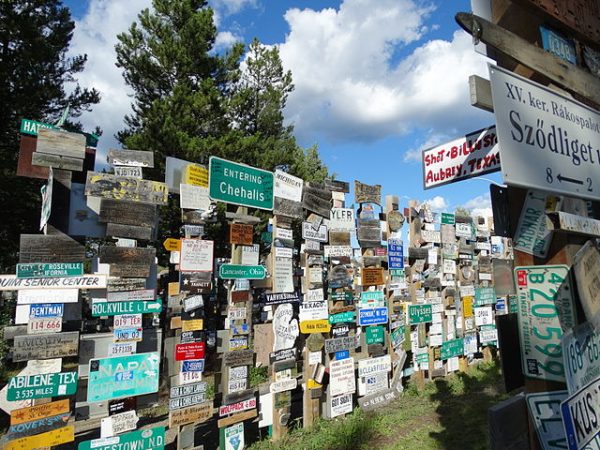
There’s a lot to keep track of when it comes to COVID-19 and Alaska’s response to the pandemic. Reporters all over the state are talking to experts and local Alaskans every day about the impact the virus is having on our lives. And still, there are lots of unanswered questions. We’re going to tackle your COVID-19 questions weekly.
RELATED: Restrictions for crossing the border into Canada extended to July 21
We’ve had several questions from listeners about whether they can cross the Canadian border to go to or from Alaska. Alaska Public Media’s Liz Ruskin looked into it and has a few answers.
Liz, Canada has closed its borders to non-essential travel. Is there an exception for Alaskans going home?
Not an exception, but Canada Border Services Agency tells me that, if Alaskans are returning home, they consider that essential travel.
But do they have to carry all their supplies and not stop? I think Sen. Dan Sullivan said that recently.
Right, he said last month that Alaskans driving through Canada can’t use grocery stores, hotels or drive-throughs. I put his statement in a story, and the Canada Border Services Agency contacted me to say that’s not true. They said they want travelers to limit their stops and practice social distancing when they do have to stop. But Canada says it’s encouraging travelers to use drive-throughs, and if they stay in a hotel overnight, they should not leave the hotel.
Sen. Sullivan says his information was based on what his constituents told him about their experiences.
So what about Alaskans who are going the other way – trying to cross from Alaska into Canada, to drive to the Lower 48, or to drive from Haines to another part of Alaska?
That depends on the reason for the trip. Canada says examples of essential trips they’ll allow include travel to a job or to study. So, as I read it, students going to college in the Lower 48 can cross into Canada to drive south. (We’ve had questions about that.) Examples of nonessential travel are sightseeing or social events.
They make it sound pretty simple. What have you heard from people who’ve made the trip?
I just spoke to a woman who was driving up from California and was turned back at the border in April. She was moving to Alaska. Her husband and child were already in Wasilla, living with his parents. She was bringing the car up with some of their belongings. She had all the paperwork the border agency advised her over the phone to bring, but the border officer said it wasn’t essential for her to transit Canada because she had other ways to get to Alaska.
What did she do?
She looked into shipping the car up and decided she couldn’t afford it, so she drove back to California and flew to Alaska. Now she’s wondering when Canada will lift the policy so she can get her car.
And, by the way, Canada has extended the policy until June 21, and could extend it again.
I talked to another Alaskan who just made the trip in a campervan. As Alaskans returning home, they had no trouble at the border. But she said there was a checkpoint between British Columbia and Yukon Territory. Yukon is requiring travelers to leave the territory within 24 hours. It’s about 500 miles from Watson Lake to the Alaska border at Beaver Creek, so that would be a long day. But it’d be hard to enforce the rule anyway. There’s no one clocking you out at the other side of the territory.
Did they find campgrounds and roadside services open?
She said it was a mix. Some campgrounds were closed. Some were open but their bathrooms and showers were closed. She said it seemed like a lot of mom-and-pop businesses may never re-open.
Can Alaskans call the Canada Border Services Agency ahead of time to see if their reason for crossing will be considered essential?
Yes, the agency has a helpline . But the new Alaskan I spoke to said she did call ahead and got assurances. And then, at the border, the officer told her no one should have made any promises because he has the discretion to decide.
Send us your questions — big and small, serious and trivial — about the pandemic in Alaska and we’ll try to get the answer. Email them to [email protected] or leave a message at 907-586-1600.

Liz Ruskin, Alaska Public Media
Liz Ruskin is the Washington, D.C., correspondent at Alaska Public Media. Reach her at [email protected] . Read more about Liz here .
RELATED ARTICLES MORE FROM AUTHOR
In valdez, the city hopes it’s found a solution to the affordable housing crisis, anchorage police to incorporate virtual reality into training with emphasis on de-escalation, arctic residents face high risk from toxic effects of plastics, acat report finds.
Your browser is not supported for this experience. We recommend using Chrome, Firefox, Edge, or Safari.
Do I need a passport to get to Alaska?
U.S. citizens flying between another state and Alaska do not need a passport. However, those driving through Canada or traveling on a ferry or cruise ship with stops in Canada are required to carry one. All non U.S. citizens will need a passport and possibly other documents to enter. As with all travel, check with U.S. Customs and Border Protection and the Transportation Security Administration as you plan your trip.
Protected by the Chugach Mountains and warmed by currents of the Pacific Ocean, Anchorage’s mild climate...
Hours of Daylight
With so much natural beauty and so many things to see and do how could anyone pack in all that Southcentral...
Anchorage Airport
Serving two dozen national and international cities, Ted Stevens Anchorage International Airport connects...
Cruise Transfers
By train, motorcoach or shuttle, reaching the dock in Seward or Whittier, Alaska is a breeze. Just...
Visitor Guide
Planning your Alaska vacation is a breeze with the free Official Anchorage Visitor Guide. Please provide your...
E-Newsletter
Sign up for our Anchorage e-newsletter to receive trip inspiration, travel deals, planning tools, and more.
Bird-watching
Trails & local parks, travel agents & trip planners, travel deals, things to do.
Can you drive to Alaska without going through Canada?
Faqs about driving to alaska, 1. is the alaska marine highway the only way to get to alaska without going through canada, 2. are there any restrictions on bringing a vehicle on the alaska marine highway, 3. what are some important considerations for driving to alaska, 4. are there any border requirements for driving to alaska from the united states, 5. what are some attractions to visit when driving to alaska, 6. how far is the drive to alaska from the continental united states, 7. what are some common challenges of driving to alaska, 8. is it possible to encounter road closures or construction along the route to alaska, 9. what are some tips for planning a road trip to alaska, 10. are there any special permits or licenses required for driving to alaska, 11. what is the best time of year to drive to alaska, 12. how can i prepare for the unique driving conditions in alaska, can you drive to alaska without going through canada.
Yes, it is possible to drive to Alaska without going through Canada, but it’s not exactly a straightforward route. The most common way to do this is by taking the Alaska Marine Highway, which is a ferry system that connects Bellingham, Washington to several ports in Alaska. This option allows travelers to bring their vehicles on the ferry and avoid driving through Canada.
However, it’s important to note that the Alaska Marine Highway can be quite expensive, and the schedules are not always convenient. Additionally, the weather in this region can be unpredictable, so it’s important to plan the trip carefully and be prepared for potential delays. Overall, while it is possible to drive to Alaska without going through Canada, it does require some additional planning and consideration.
The Alaska Marine Highway is the most common option for driving to Alaska without entering Canada, but it’s not the only way. Another alternative is to take a combination of ferries and roads within the United States to reach certain parts of Alaska, such as the town of Skagway. However, these routes can be more complex and time-consuming.
There are certain restrictions on bringing a vehicle on the Alaska Marine Highway, such as size limitations and requirements for securing the vehicle during the journey. It’s important to review the specific guidelines and make any necessary arrangements in advance.
When driving to Alaska, it’s important to consider the long distances, remote areas, and challenging road conditions. It’s crucial to have a well-maintained vehicle, sufficient supplies, and a thorough understanding of the route and its potential obstacles.
While there are no border requirements for entering Alaska from the United States, it’s essential to be aware of any changes in customs regulations and travel documentation. It’s always a good idea to stay informed about the latest border requirements and procedures.
There are numerous attractions to visit when driving to Alaska, including national parks, scenic byways, wildlife viewing opportunities, and cultural landmarks. Some popular destinations along the way include the Kenai Fjords National Park, the Denali National Park, and the city of Anchorage.
The drive to Alaska from the continental United States can vary depending on the starting point, but it generally involves covering long distances of over 2,000 miles. This journey can take several days of continuous driving and requires careful planning and preparation.
Some common challenges of driving to Alaska include extreme weather conditions, limited services in remote areas, and the potential for wildlife encounters on the road. It’s essential to be well-equipped and mentally prepared for these challenges.
Yes, it’s possible to encounter road closures and construction along the route to Alaska, especially in certain regions and during specific times of the year. It’s recommended to check the latest road conditions and updates before embarking on the journey.
When planning a road trip to Alaska, it’s important to consider factors such as the timing of the trip, the choice of vehicle, the availability of accommodations, and the selection of provisions and supplies. It’s also helpful to gather information from experienced travelers and local resources.
There are no special permits or licenses required for driving to Alaska within the United States, but it’s advisable to review the driving regulations in Alaska and any specific requirements for certain routes or areas.
The best time of year to drive to Alaska is typically during the summer months, when the weather is more favorable, and the natural attractions are at their peak. However, it’s important to be aware of potential crowds and higher accommodation prices during this time.
To prepare for the unique driving conditions in Alaska, it’s essential to have a well-stocked vehicle emergency kit, a reliable communication device, and a flexible mindset. It’s also beneficial to familiarize yourself with local driving customs and etiquette.
In conclusion, while it is possible to drive to Alaska without going through Canada, it requires careful planning, flexibility, and an understanding of the available routes and options. Whether choosing the Alaska Marine Highway or exploring alternative ways, driving to Alaska offers a memorable travel experience filled with natural beauty and adventure.
About The Author
Steven Dale
Leave a comment cancel reply.
Your email address will not be published. Required fields are marked *
Save my name, email, and website in this browser for the next time I comment.
- Credit cards
- View all credit cards
- Banking guide
- Loans guide
- Insurance guide
- Personal finance
- View all personal finance
- Small business
- Small business guide
- View all taxes
You’re our first priority. Every time.
We believe everyone should be able to make financial decisions with confidence. And while our site doesn’t feature every company or financial product available on the market, we’re proud that the guidance we offer, the information we provide and the tools we create are objective, independent, straightforward — and free.
So how do we make money? Our partners compensate us. This may influence which products we review and write about (and where those products appear on the site), but it in no way affects our recommendations or advice, which are grounded in thousands of hours of research. Our partners cannot pay us to guarantee favorable reviews of their products or services. Here is a list of our partners .
U.S.-Canada Border Crossing: What You Need to Know
Many, or all, of the products featured on this page are from our advertising partners who compensate us when you take certain actions on our website or click to take an action on their website. However, this does not influence our evaluations. Our opinions are our own. Here is a list of our partners and here's how we make money .
Table of Contents
Who can travel from the U.S. to Canada?
How many border crossings are there between the u.s. and canada, checklist for a u.s.-canada border crossing, special cases for alaska residents, if you want to cross the u.s.-canada border ….
Borders between the U.S. and Canada recently reopened to travelers more than a year after having closed due to COVID-19. Now, many who are eager to explore our neighbor to the north are left wondering what’s involved in a border crossing and what guidelines they’ll need to adhere to for a successful journey.
If you’re anxious to visit Montreal, Toronto, Vancouver or Calgary, here’s what to know to plan your U.S.-Canada border crossing, whether by land, air or sea.
Currently, Canadian borders are open to all U.S. citizens wishing to enter regardless of vaccination status. However, the requirements for entry will vary based on your vaccination status.
Fully vaccinated travelers no longer need to provide a negative COVID test for entry, but must still use the ArriveCAN app to submit mandatory entry information, including proof of vaccination, at least 72 hours prior to arrival and/or before boarding a cruise ship destined for Canada.
Not fully vaccinated? You won’t be able to visit Canada if you’re traveling for discretionary or leisure purposes. If you don't qualify as a fully vaccinated traveler but still need to travel to Canada for reasons other than leisure, you’ll be required to quarantine for 14 days, take a molecular COVID test, and register for a COVID test upon your arrival in the country, which you can do in advance to save time.
» Learn more: What COVID test is required for travel?
There are more than 100 land border crossings between the U.S. and Canada, and wait time to cross can vary widely.
At most crossings, how long you wait depends on the time of day and the day of the week. Some crossings have little to no delay at off-peak travel times, and others, like Buffalo, New York, can log wait times around 40 minutes.
If you want to set appropriate expectations for how long it takes to cross the U.S.-Canada border, check the Government of Canada website , which is updated hourly.
» Learn more: Need a passport for a trip? Give yourself a big time cushion
If you're fully vaccinated and traveling to Canada, whether by car, plane or boat, you still have to follow certain protocols. To meet entry requirements, you must:
Have no symptoms of COVID-19.
Have received all doses of a COVID-19 vaccine at least 14 full days before you enter Canada.
Upload your proof of vaccination in ArriveCAN , an app that provides border crossing info and stores important documentation.
Have your required entry documents.
NOTE: As of April 1, 2022, fully vaccinated travelers no longer need to provide a negative test for entry.
» Learn more: 4 differences between a passport book and card
If you don’t meet all the requirements of a fully vaccinated traveler, you’ll have to quarantine for 14 days upon arrival. You may also be selected for a random arrival test at some airports and land crossings. These may take place at the airport or a designated testing site, or you may be provided with a do-it-yourself kit that you can send in once you arrive at your final destination.
If you live in Alaska, you may sometimes have to drive through Canada to get to certain regions of the state. Unvaccinated Alaska residents who must pass through Canada for necessary purposes (i.e. not for leisure or recreation) may do so without pre-entry and arrival COVID tests, but they must remain in their vehicle while driving through Canada. They'll also likely be given a specimen collection kit when they cross a land border into Canada.
If you're leaving Alaska to travel to the lower forty-eight, or if you're returning to Alaska after being in another state, you may also be granted special permission to pass through Canada. However, if you’re not fully vaccinated you will need a negative COVID molecular test result to enter. You'll also need proof that you live in Alaska if you’re driving north, or proof of residence or employment in the lower forty-eight if driving south.
The key to a successful U.S.-Canadian border crossing is preparation. Make sure you know what documentation and information you need well in advance of your arrival at the border or the airport. Ensure everything is in order and uploaded to the ArriveCAN app, and be patient. Above all, travel safely.
How to maximize your rewards
You want a travel credit card that prioritizes what’s important to you. Here are some of the best travel credit cards of 2024 :
Flexibility, point transfers and a large bonus: Chase Sapphire Preferred® Card
No annual fee: Wells Fargo Autograph℠ Card
Flat-rate travel rewards: Capital One Venture Rewards Credit Card
Bonus travel rewards and high-end perks: Chase Sapphire Reserve®
Luxury perks: The Platinum Card® from American Express
Business travelers: Ink Business Preferred® Credit Card

on Chase's website
1x-5x 5x on travel purchased through Chase Travel℠, 3x on dining, select streaming services and online groceries, 2x on all other travel purchases, 1x on all other purchases.
60,000 Earn 60,000 bonus points after you spend $4,000 on purchases in the first 3 months from account opening. That's $750 when you redeem through Chase Travel℠.

1.5%-5% Enjoy 5% cash back on travel purchased through Chase Travel℠, 3% cash back on drugstore purchases and dining at restaurants, including takeout and eligible delivery service, and unlimited 1.5% cash back on all other purchases.
Up to $300 Earn an additional 1.5% cash back on everything you buy (on up to $20,000 spent in the first year) - worth up to $300 cash back!

on Capital One's website
2x-5x Earn unlimited 2X miles on every purchase, every day. Earn 5X miles on hotels, vacation rentals and rental cars booked through Capital One Travel, where you'll get Capital One's best prices on thousands of trip options
75,000 Enjoy $250 to use on Capital One Travel in your first cardholder year, plus earn 75,000 bonus miles once you spend $4,000 on purchases within the first 3 months from account opening - that’s equal to $1,000 in travel.


Driving from the US to Alaska Through Canada: A Comprehensive Guide
- Post author: cuppa
- Post published: January 27, 2024
- Post category: Roadtrips
Ever wondered if it’s possible to drive from the US to Alaska through Canada? Well, you’re not alone. This question has piqued the curiosity of many travelers and road trip enthusiasts alike.
The answer might surprise you, and I’m here to shed some light on it. As an experienced traveler, I’ve navigated many routes, and this one is a unique journey worth discussing.
Table of Contents
The Route: Exploring the Possibility
Yes, it’s entirely possible. Road trip junkies, rejoice! You can indeed drive from the contiguous United States through Canada to Alaska. Now, let’s dive into the specifics.
The most common and straightforward route is the Alaska-Canada Highway , also known as the Alaskan Highway or Alcan Highway. Constructed during World War II for military purposes, this route begins in Dawson Creek in British Columbia and stretches to Delta Junction in central Alaska.
Here’s a brief overview of the route:
However, it’s crucial I mention that a journey like this isn’t just a casual drive. The route is about 2,700 kilometers long and traverses rugged wilderness, requiring substantial preparation and planning. Depending on the season and road conditions, you could face challenges ranging from heavy snow to avalanches. So, it’s best to factor in potential obstacles and detours when planning your journey.
If you’re worried about facilities en route, fret not. The highway is peppered with sufficient fuel stations, eateries, maintenance shops, and even quaint lodges for those impromptu overnight stays.
What about the legal formalities? Well, usually, passage through Canada requires a valid passport – check Canadian Border Services for exact requirements. Next, you’ll want to ensure your vehicle is fit to endure the journey. That means checking up on mechanical issues and brushing up on some necessary car-maintenance skills.
Legal Requirements: Crossing Borders
Going on a road trip from the US to Alaska presents an exciting, unique experience. However, while planning the journey, it’s essential to stay aware of the legal cross-border requirements. Failing to meet all the necessary criteria could disrupt the trip and possibly lead to legal consequences.
Do I need a passport to drive from the US to Alaska through Canada? The definitive answer is yes. Every US citizen must present a valid passport to enter or transit Canada. The Canadian government strictly enforces this law. So, make sure your passport is up-to-date before you embark on your journey.
It’s important to mention that crossing the border into Canada with a criminal record can be tricky. Canada is known for its strict regulations regarding this. If you’ve been convicted of a crime, even if it’s a misdemeanor, you might be turned away at the border. If you foresee such issues, consider consulting a legal advisor. Sometimes, it’s possible to apply for a legal form referred to as “Criminal Rehabilitation.” Approval of this mention can take quite some time so starting the paperwork well ahead of your planned departure is highly recommended.
Also, just as important, driving across borders requires valid auto insurance . Canada has specific auto insurance requirements that every driver must meet. So, familiarize yourself with these rules to avoid legal ramifications. Also, inform your insurance company of your travel plans so they can adjust the coverage appropriately.
Finally, remember to build in extra time for the border crossing. Security checks at both the US and Canadian borders can be time-consuming, especially during peak travel times.
Scenic Highlights Along the Way
As anyone might expect, driving from the US to Alaska via Canada isn’t just about fulfilling legal requirements and navigation. It’s a journey brimming with breathtaking adventures and incredible views worth capturing. Let me give you some highlights of the corners you’d be traversing.
The Alaska Highway is perhaps the most famous road in this journey. Running 1,387 miles (2,232 km) from Dawson Creek in British Columbia to Delta Junction in Alaska, it’s the heart of any Alaska road trip. This highway is where you’ll get a glimpse into wildlife viewing right from your car, ranging from grizzly bears to elks, and sweeping landscapes from snowy mountains to peaceful lakes. The journey takes you through cultural touchpoints like Fort Nelson and Watson Lake.
Don’t overlook the chance to take a detour and experience the iconic Icefields Parkway , one of the world’s most scenic mountain drives in Alberta. It’s known for its vast icefields and stunning summit views, promising an unforgettable road trip experience. You’ll also find stunning glaciers, cascading waterfalls, and crystal-clear lakes aplenty here.
For a trip that’s little offbeat, consider driving down the Cassiar Highway . It’s less traveled but equally mesmerizing, taking you through an uncrowded stretch of northern British Columbia’s wilderness. Here, you’ll find dynamic topography from glaciers to grand mountain ranges, interspersed with historic mining towns such as Jade City and Stewart.
Remember, every adventurous drive requires careful planning. Keep a map handy, stay aware of your surrounding wildlife and climate conditions, and don’t rush. This journey is about soaking in the incredible views, not just the destination. Be prepared to capture some of the best photos you’ve ever taken – because believe me, the scenic highlights along this way are simply out-of-this-world. We’ll continue to delve into the other aspects of this fantastic journey in the next section, so let’s keep going.
Challenges and Considerations
Embarking on a lengthy international road trip like driving from the US to Alaska through Canada isn’t a casual venture. As we have already explored, there are numerous legal aspects to consider like paperwork and regulations. Beyond these, the journey itself presents certain challenges and considerations that you must prepare for.
One of the top challenges is the length of the journey . This isn’t your typical interstate road trip. The drive from Seattle to Anchorage, for example, can span over 2,200 miles and take more than 40 hours without any stops.
Holidaymakers must allow for rest, refueling, meal breaks, and the all-important exploration time at points of interest. You will also need to consider that border crossing wait times can be unpredictable and lengthy.
Navigating the route itself is a challenge. The majority of the journey follows the Alaska Highway, Icefields Parkway, and Cassiar Highway, which may sound simple. However, these roads traverse rugged, remote terrain and their conditions may vary greatly based on the weather and time of year. During the journey, you may find parts of the highway quite isolated, with stretches between towns sometimes exceeding 100 miles.
Weather conditions can significantly affect travel times and safety. The further north you go, the more extreme the weather may become, particularly during the winter months. In cases of heavy snowfall, certain roads can become impassable.
Driving in this part of the world can also bring you into close contact with wildlife. Moose, bears, and elk are common sights near roadsides, particularly during the summer months. While these encounters can provide wonderful photo opportunities, they can also pose risks if animals wander onto roads.
Lastly, a mundane but vital consideration is getting adequate auto insurance. It’s important to ensure that your policy provides coverage in Canada and for all eventualities that could occur during such a trip.
Certainly, there are challenges on the road ahead, but with a spirit of adventure and careful preparation, there’s no reason why a road trip from the US to Alaska can’t be a trip of a lifetime.
Planning Your Expedition
When you’re mapping your route , you mustn’t overlook the importance of smart planning . It’s a big piece of the puzzle which when meticulously pieced together can lead to an unforgettable experience. While the idea of a spontaneous road trip on a whim sounds exciting, it’s not feasible when traversing multiple countries.
First off, you’ll need to optimize your route . Essentially, you’ve got two available options: the Alaskan Highway or the Stewart-Cassiar Highway. Regardless of your choice, both routes offer breathtaking views packed with abundant wildlife. Creating a stop-by-stop roadmap with anticipated stays and rest breaks is crucial. To make your journey smoother, choose strategic points to rest . With so many scenic towns and attractions in between, you’ll surely want some buffer for exploration rather than mindlessly hitting the road.
The element of time plays a significant role in your expedition. Account for wait times at various border crossings. Unanticipated delays could throw your meticulously laid plans into chaos. Ensuring timely travel documentation could prevent unnecessary hang-ups . Consider picking a designated driver to adhere to rest times and prevent driver fatigue.
No matter how much you love the summer, embarking on this expedition during summer isn’t the wisest choice. Alaska’s highways are known to have road maintenance issues during summer . Late spring or early fall would be an ideal time when the road conditions are more favorable.
Even more important to your journey than time or seasonality is equipment and resources . Given the remote terrain, having a vehicle complete with spare parts (especially tires), a toolbox, extra fuel, and a GPS navigation system is non-negotiable. Remember to pack plenty of food and water for this marathon drive.
Last but definitely not least is Insurance . It’s easy to overlook aspects like auto insurance amid the exciting trip planning phase. However, having adequate auto insurance is your safety net if you encounter an incident in another country.
So, is it possible to drive from the US to Alaska through Canada? Absolutely. But it’s not just about hopping in the car and hitting the road. It’s about strategic planning and preparation. It’s about optimizing your route and picking the perfect pit stops. It’s about anticipating border wait times and setting off at the right moment. It’s about stocking up on essentials like spare parts, a toolbox, extra fuel, and a reliable GPS system. And let’s not forget the importance of having the right auto insurance coverage for your trip. So yes, you can drive from the US to Alaska through Canada, but it’s a journey that requires thought, planning, and the right resources. Happy travels!
What is the main emphasis of the article?
The article stresses the importance of smart planning for a road trip from the US to Alaska through Canada. It underlines optimizing the route, strategic rest points, wait times at border crossings, and choosing the correct time for the journey.
Why does the article highlight the importance of choosing strategic rest and exploration points?
By selecting strategic rest and exploration points, travelers can ensure they make the most out of their journey – enjoying the scenery, resting appropriately, and also ensuring the optimal functioning of their vehicle.
What is the significance of anticipating wait times at border crossings?
Wait times at border crossings can add significant delays to your journey. Accounting for these in your trip planning helps ensure a smoother, more accurate itinerary and avoids unnecessary stress.
What equipment and resources are necessary for the trip?
The article suggests carrying vital equipment like spare parts, a toolbox, and extra fuel. It also highlights the importance of having a GPS navigation system to assist with navigation.
Why is having adequate auto insurance emphasized for the trip?
Having adequate auto insurance is crucial if any unexpected incidents occur during the trip. It provides financially protective measures and peace of mind during your journey from the US to Alaska.
You Might Also Like

Explore America: Ohio to Montana Road Trip – Delights, Landmarks and Culinary Adventures

Ultimate 7-Day New England Road Trip Itinerary: From Boston to Cape Cod

Wildlife Encounters & Scenic Treasures: A Riveting Journey on Australia’s Great Ocean Road

Alaska Youth Law Guide
A Resource for Teens and Young Adults
- Arrests and Your Rights in Criminal Proceedings
- Security Guards
- If you are the Victim of a Crime
- If you Witness a Crime
- Shoplifting and Theft
- Leash Law Violations
- Vandalism and Graffiti
- Curfew Violation
- Disorderly Conduct
- Breath Test Refusal
- Electronic Bullying
- Birth Control
- Same-Sex Relationships
- Rape or Sexual Assault
- Statutory Rape and Age of Consent
- Abortion, Parental Consent…
- Establishing Paternity
- Child Support
- Alcohol Information
- Penalties for Drinking or Possessing Alcohol
- Other Alcohol-Related Crimes in Alaska
- Tobacco Information
- Drug Information
- Synthetic Drugs
- Seeking Medical Help for Overdose
- Tattoos, Body Piercing, and Tanning
- Age of Majority
- Bank Accounts
- Credit Cards
- Debit Cards
- Credit Reports
- Fraud and Consumer Protection
- Limits on Jobs Minors Can Have
- Minimum Wage and Overtime
- Paycheck Deductions
- Social Security Numbers
- Getting Fired
- Benefits: Break, Vacations, Sick Leave
- Drug, Alcohol and Lie Detector Tests
- Workers’ Compensation and Unemployment Insurance
- Discrimination and Sexual Harassment
- Pregnancy and Disabilities
- Family Medical Leave Act (FMLA)
- Renting an Apartment
- Roommates and Subleases
- Living in the Apartment
- Problems with the Apartment
- Public Housing
- Registering for Selective Service
- Entering the Military
- Kinds of Drivers’ Licenses
- Financial Responsibility and Mandatory Insurance
- Other Laws Related to Driving
- Guns, Knives, and Other Weapons
Crossing the Canadian Border
- Hunting and Fishing in Alaska
- Divorce and Dissolution Information
- Property Division
- Child Custody
- Duty to Support Children
- Right to Children’s Wages
- Liability for Actions of Children
- Emancipation
- Child in Need of Aid (CINA) Procedures
- Emergency Protective Custody
- Non-Emergency Temporary Custody
- Termination of Parental Rights
- Rights in CINA Cases
- Guardian ad Litem
- Domestic Violence and Stalking
- Reporting Child Abuse and Neglect
- Accessing Public Benefits Information
- Alaska Temporary Assistance Program (ATAP)
- Food Stamps
- Denali KidCare
- Section 8/Public Housing
- Physicals/Vaccinations
- Types of discipline
- Discipline Procedures
- Electronic Bullying and Hazing
- Civil Rights
- Phones and Computers
- Privacy and Searches
- Student Loans & Financial Aid
- Informal Proceedings
- Formal Proceedings
- Pre-Adjudication
- Guardians ad litem
- Adjudication
- Disposition
- Youth Court
- Reentry: Getting Help After a Prison Sentence
- Adult Criminal Proceedings
- Lawsuits and Non-criminal Court Procedures
- The Right to Appeal

Unless you fly to Juneau, the only way to or from our capital city is to drive through our neighbor to the east – Canada. Since July 2009, a law called the Western Hemisphere Travel Initiative requires more documentation to travel through Canada. The rules for travelling through Canadian waters are much the same.
What do I need to go through Canada?
If you are 16 years of age or older, you need one of the following: A passport, a US passport card, an enhanced Tribal Card, a Merchant Mariner’s card, an enhanced drivers’ license (if you live in a border state that has them available), or a trusted traveler card like NEXUS, FAST, or SENTRI. If you are under 16 and you are traveling with a parent who has proper documents, you can present an original birth certificate. If you are under 18, your parents can apply for a passport for you; if you are 18 or older, you can apply for a passport yourself.
When you get to the border, present one of the above. You will also need proof of US citizenship to reenter Alaska. Canada won’t allow you across the border if you don’t have the documents needed to leave Canada. As long as you don’t have any outstanding warrants in the USA or Canada, or any criminal convictions in either country, you will be granted access. If you have been convicted of DUI
- even as a minor – you will not be allowed to enter
What do I need to drive through Canada?
Canada will recognize your minor’s or regular Alaska drivers’ license. As in Alaska, you must have proof of insurance with you. Your Alaska proof of insurance card is adequate, as long as you are a tourist.
You also need to understand speed limits and distances posted in kilometers per hour. The rural road speed limit is 100 km/h, about 62 miles per hour.
What are the rules about taking guns across the border?
The rules about guns in Canada are strict. All handguns, bear spray, pepper spray, or mace brought into Canada must be listed on the Canadian National Handgun Registry before you bring them in. You must have an Authorization to Transport (ATT) permit obtained in advance from a Provincial or Territorial Chief Firearms Officer.
Trying to bring an unregistered handgun across the border is a serious offense. If you are caught doing so, the following will happen.
- You will be detained at the Canadian border station and will be turned over to the custody of the Royal Canadian Mounted
- You will have the right to speak to an attorney and also the right to speak with a representative from the S. consulate. But the nearest US consulate is in Vancouver – a long way from the Border at Beaver Creek, Yukon Territory.
- Your car will be impounded. You will have to pay a significant fee to have it
- You also will have to pay a minimum fine of $1,000.
- Your handgun will be confiscated and you WILL NOT be able to regain possession of it.
- It is also likely that you will be barred from re-entry into
If you are traveling to Canada with a hunting rifle or shotgun to go hunting, you must obtain a proper Canadian hunting license and declare your firearm. The fee for a Firearms Declaration is
$50. Visitors who borrow a firearm must first obtain a Non-Resident’s 60-Day Possessor License (S30). U.S. residents should register weapons with U.S. Customs before traveling to Canada to assure that you can reenter the US with the gun. Hunters are allowed to bring 200 rounds of ammunition; shooters entered in a competition can bring 1,500 rounds of ammunition. All hunting guns must be properly secured and stored.
Weapons that are prohibited include fully automatic guns, converted automatics, assault-type weapons and handguns with a barrel length less than 105mm (4 inches), and replicas of such weapons. Certain knives are also prohibited. A complete list can be found at the Canada Border Services Agency website. Canadian customs officials will automatically confiscate prohibited firearms. They will not be returned, and will ultimately be destroyed. The gun owner is not given the option to withdraw the request to enter Canada and return to the U.S. in order to retain possession of the prohibited firearm.
What are the rules about taking drugs across the border?
No illegal drugs are permitted. Yes, marijuana is illegal in Canada.
Any prescription drug brought across the border must be accompanied by a valid prescription and must be in the original packaging. If you can’t prove your prescription drug is legal by showing the prescription and original packaging, it is likely to be confiscated. You might have to pay a fine.
What are the rules about taking alcohol and tobacco across the border?
You are allowed to bring alcohol and tobacco with you on your trip to Canada if you are over 21 years old. But there are limits on the amounts allowed. Usually you have to stay a minimum of 24 hours to bring alcohol or tobacco into Canada.
Alcohol you can take into Canada is limited to 40 ounces of liquor, 1.6 quarts (about 2 bottles) of wine, or 9 quarts of beer or ale (about 24 12-ounce cans of beer). You must be 21 years old to bring alcohol back into the USA, and the amount is very limited (1 liter). Check with US Customs before you leave.
In Canada, the legal drinking age varies from province to province. In the two provinces on the Alaska border, Yukon Territory and British Columbia, is the legal drinking age is 19.
If you are 21 years old, you can bring up to 50 cigars, 200 cigarettes, 6.4 ounces of tobacco, or 200 tobacco sticks into Canada.
What happens if I am arrested in Canada?
If you are arrested, you will be given the opportunity to speak to a lawyer. You will be fingerprinted, photographed, and, if your offense is minor, you may be released on your own recognizance. You likely will have to pay a bail fee; for a minor offense, it will be under $1,000. You will have to pay in Canadian dollars. You will not be allowed to continue your trip in Canada and authorities will return you to the US. You may have to pay for your trip home.
The bail fee will be returned if you show up for your court date. An arrest based out of Beaver Creek border crossing has court proceedings at Whitehorse, Yukon Territory. Penalties vary depending on the offense you committed. Impaired driving is a fine of $1,000 and your ability to drive in Canada is suspended for six months. Underage drinking is a straight fine of $115. If you are caught with an illegal drug, the penalty depends on your past criminal record. You could face jail time or a substantial fine. If the Canadian police determine you are a flight risk, it is unlikely that you would be granted bail and they would detain you until your court date.
Although the charges will not carry over into the United States, and Canada cannot extradite you for minor offenses, if you do not return for your court date, Canadian authorities will issue a warrant for your arrest. Having an outstanding warrant on your record will prevent you from being able to travel internationally. Regardless of the offense, it is likely that any penalty will include a permanent ban from entry into Canada.
What do I need to consider about coming back into the USA?
You are prohibited from bringing back items that are deemed detrimental to the general welfare of the USA. This includes narcotics, drugs, drug paraphernalia, obscene publications, seditious or treasonous material, lottery tickets, fireworks, poisonous or toxic substances, and switchblade knives. You must have proof of citizenship to reenter the USA. If your passport or Tribal Card is stolen, you must go in person to the nearest consulate to get a temporary passport. Your driver’s license is not proof of citizenship.
- Additional Resources
- Acknowledgements
Language selection
- Français fr
I am an American citizen. What do I need to enter Canada?
American citizens, including American-Canadian citizens, must carry proper identification and meet the basic requirements to enter Canada . You do not need a Canadian passport, a Canadian visa or an eTA to enter Canada if you are travelling with a valid U.S. passport.
New entry requirement now in effect
Visa-exempt foreign nationals need an Electronic Travel Authorization (eTA) to fly to or transit through Canada by air. Exceptions include U.S. citizens and travellers with a valid Canadian visa. Canadian citizens, including dual citizens , and Canadian permanent residents cannot apply for an eTA.

Did you find what you were looking for?
If not, tell us why:
You will not receive a reply. Telephone numbers and email addresses will be removed. Maximum 300 characters
Thank you for your feedback
Answers others found useful
- Do I need a visa to visit Canada?
- Do I need a Canadian visa if I have a United States visa?
- How do I apply for an eTA for travel to Canada?
- I am visiting the U.S. I want to come to Canada. Do I need an eTA?
- Do I need a visa if I am travelling through Canada without stopping or visiting?
- How do I help a family member or friend apply to visit Canada?
- I am travelling with my minor child without my spouse. What documents must I present?
- What’s the difference between a visitor visa and a visitor record?
- Do I need to apply for both a visitor visa and an eTA?

How to videos
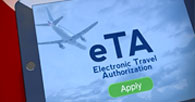
Glossary term
- Admissibility
The Ultimate Alaska Highway Guide: Driving the Alcan between Canada & Alaska
Updated August 2024, The Ultimate Alaska Highway Guide: Driving the Alcan between Canada & Alaska was originally published in June 2023
Driving the Alaska Highway, or the Alcan as most of us who have grown up in Alaska or are longtime Alaskans call it, is one of the biggest bucketlist scenic road trips in the world.
But the Alaska Highway is no small undertaking. At 1,387 miles, it’s quite the journey extending between Dawson Creek, British Columbia and Delta Junction, Alaska.
As someone who was born and raised in Alaska and was a lifelong Alaskan until I decided to try new things and the home base finally in the fall of 2022 to go see what Lower America (as I like to call it) has to offer (it still, in my opinion, is paling in comparison to Alaska!), I’ve driven the Alcan more than once. And as many of you have been reading on here for a while already know- I am also no stranger to wildly remote road trips.
Though, for most of you reading this, the Alaska Highway will be a once-in-a-lifetime journey (or more than likely twice as you’ll probably be driving back home to wherever you came from afterward- unless you’re moving to Alaska permanently or shipping your vehicle back to or from Alaska ).
So buckle up and get comfy cause you’re gonna be here for a while. This is a MEGA guide to the Alaska Highway. It is extremely long and quite comprehensive based on many years of experience.
Need Travel Insurance and Evacuation Services for Alaska & Canada?
Start shopping for travel insurance plans over at IATI Insurance . Readers of the Adventures of Nicole get a 5% discount off your plan.
The Adventures of Nicole partners with Global Rescue to offer the world’s leading medical evacuation and security advisory services. To travel with peace of mind, shop evacuation coverage at Global Rescue .
About the Alaska Highway
The Alaska Highway, as mentioned above is a 1,387 mile long road that begins in Dawson Creek, British Columbia, and extends through the Yukon Territory before crossing into Alaska where it ends in Delta Junction.
When & Why Was The Alcan Built
The Alcan was built in reaction to the 1941 Attack of Pearl Harbor, Hawaii with the United States quickly realizing that it needed access by road to its Territory of Alaska to defend the nation.
This reaction wasn’t completely unwarranted either as we would go on to see the Japanese occupations of both Attu and Kiska in 1942 and 1943 as well as an attack on Dutch Harbor.
Relatively quickly an agreement when the US and Canada were reached which have the US the green light to begin construction of the Alcan in March of 1942.
The Americans funded it with the promise to maintain the Alaska Highway throughout the duration of WWII and another 6 months after the war’s end. Once the war concluded Canada would then be handed over the portions of the Alaska Highway in their country.
Over 10,000 US soldiers were sent to Canada in the spring of 1942 to begin construction working grueling hours with no break in sight as they trudged on 7 days per week.
Additionally, 16,000 civilians of the US and Canada worked to help complete the Alaska Highway which was finished in November 1942 for use by the military to move supplies.
It wouldn’t be until 1948 that the Alaska Highway was opened to the public.
How to Get to the Start of the Alcan
Since the Alaska Highway starts in Dawson Creek, there is more than one way to get there including via British Columbia or Alberta.
Via British Columbia
If you’ll be coming from Vancouver (or further south beyond) as many of you will be you have a couple of options for getting to the start of the Alcan in Dawson Creek.
This will be via either the Sea to Sky Highway (Highway 99) or the Trans-Canada Highway (Highway 1). Both these routes will tie into Highway 97 which leads to Dawson Creek.
The Sea to Sky Highway: Highway 99
The Sea to Sky Highway is a great option for first-timers on the Alaska Highway as it blends some of British Columbia’s most stunning landscapes from coastal gems to mountain escapes- it does cut through Whistler after all.
The Sea to Sky Highway is also the shortest option as it will get you from Vancouver to Dawson Creek in 718 miles. Total drive time is about 13 hours 30 minutes not including stops.
The Sea to Sky Highway meets Highway 97 just north of Cache Creek where you’ll remain on Highway 97 to Dawson Creek.
Trans-Canada Highway: Highway 1
The quickest (though not shortest) way to get from Vancouver to Dawson Creek is via the Trans-Canada Highway.
This route cuts more inland in BC and isn’t quite as scenic as the Sea to Sky Highway but does offer different scenery.
Like the Sea to Sky Highway, the Trans-Canada Highway goes to Cache Creek and from there you’ll join Highway 97 which will take you the remainder of the way to Dawson Creek.
The total drive time via the Trans-Canada from Vancouver to Dawson Creek is 13 hours and a distance of 736 miles.
From Cache Creek to Dawson Creek: Highway 97
Once you hit Cache Creek, whether you opted for the Sea to Sky Highway or the Trans-Canada Highway, you will end up taking Highway 97 to reach Dawson Creek.
Via Alberta
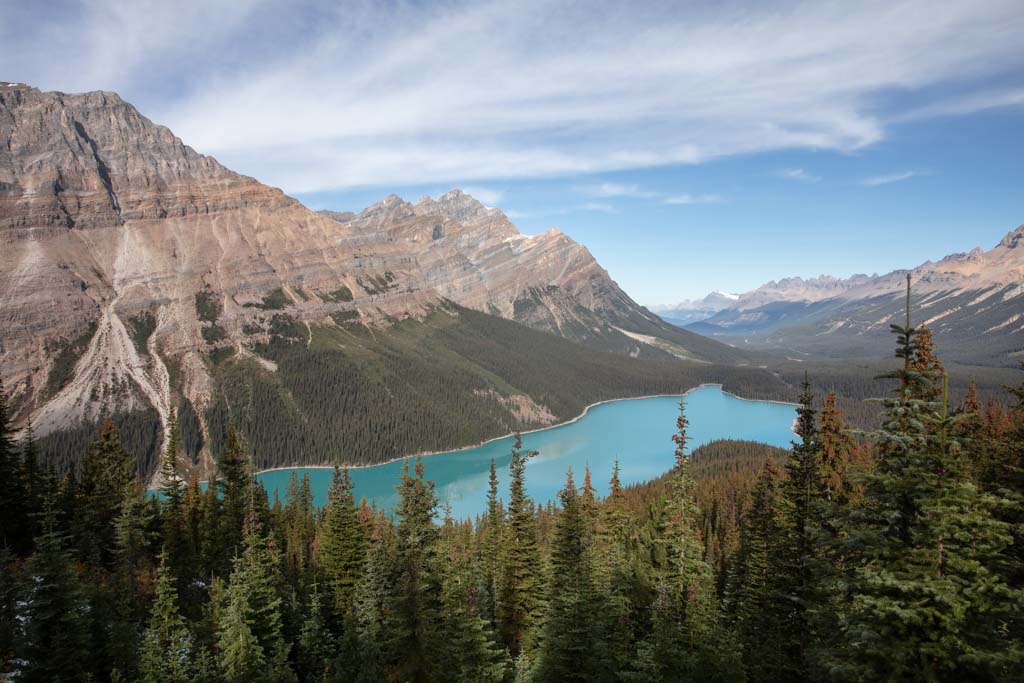
If you’re coming up from more eastward such as Montana , Utah , Colorado , or so on, you may want to consider cutting through the stunning Canadian Rockies.
The highlight of this option is that you will get to pass through both Banff National Park and Jasper National Park .
I have a thing for wild mountain landscapes, so this was the route I took when I moved out of Alaska and so far it was my favorite route I’ve taken through Canada.
I’m going to start this one from Calgary for simplicities sake (there are numerous ways to get to Calgary of course!).
From Calgary take the Trans-Canada Highway (Highway 1) to Banff National Park.
Once to Banff, you’ll get onto the spectacular Icefields Parkway (Highway 93) which leads up to Jasper National Park.
Once you’ve exited Jasper you can take several different routes to reach Alaska but the main ones are to either take Highway 16 to the west to Prince George where you will meet with Highway 97 to reach Dawson Creek.
Alternatively, once out of Jasper, you can also take Highway 16 east and then onto Highway 43 and then Highway 2 to reach Dawson Creek.
If starting in Alberta, specifically near Calgary, the most scenic route will be to take the Trans-Canada Highway (Highway 1) to Banff National Park, then drive the Icefields Parkway (Highway 93) to Jasper National Park, before taking a mix of highways to cross back into British Columbia and getting to Dawson Creek.
The total drive time between Calgary and Dawson City is 10 hours 30 minutes throughout 587 miles. Though to be honest, you will want to take a few days for this route if possible because there is so much to do and see in both Jasper and Banff!
A Detour From the Alaska Highway: The Cassiar Highway
An alternative to part of the Alaska Highway is to take the Cassiar Highway (Highway 37) which we all grew up calling the “logging road” for obvious reasons.
To reach the Cassiar, you’ll need to veer off Highway 97 at Prince George, taking Highway 16 to the west.
The Cassiar officially begins in Kitwanga and ends near Watson Lake.
The Best Time to Drive the Alaska Highway
The Alaska Highway can be driven any time of year as it is open year-round, but some times of the year are better than others.
Undoubtedly, the best time of year to drive the Alcan is between May and September due to the harsh and cold climates of both Alaska and Canada.
May through September, particularly starting Memorial Day Weekend and ending Labor Day Weekend, the Alaska Highway is generally snow-free.
Weather along the Alcan can be erratic as this is the Pacific Northwest after all, so you can expect some rain in the May-September summertime season and potential for snow at the periphery of that time.
One huge advantage of the summer months is the long days. Especially between June-August, it’s daylight the majority of the time at these far north latitudes (I mean, you are headed to “the land of the midnight sun”, after all).
Many of the businesses along the Alcan are only open seasonally too, usually adhering to the Memorial Day to Labor Day dates, though some do stay open later/earlier or even year-round.
I’ve only driven the Alaska Highway in the summer and fall myself, though I have friends and family that have driven it in the spring and winter and have said it’s generally fine. Just quite cold with short days (daylight hours are incredibly short further north in the winter) and not much to do and see en route unless you have serious winter gear with you, of course.
Extra caution should be exercised if traveling between October and April due to snow and ice on the roads and extreme cold as temps can easily plummet below -40° (Fahrenheit and Celsius meet at -40° by the way 😂).
This past journey I took down the Alcan I left Alaska on September 17, 2022, and took about a week to reach the US border in Montana (I treated it as a vacation to myself, because- why not?).
I found that even in mid to late September that many businesses were still opening such as shops and fuel stations.
It was a beautiful fall in 2022 as I drove down the Alcan and stayed mostly snow-free until early October so I think some businesses may be opting to stay open later in the season on years when the weather is pleasant.
Where Does the Alcan Start & End?
The Alcan officially begins in Dawson Creek, British Columbia, and ends in Delta Junction, Alaska.
As mentioned above, there are several routes through Canada to reach Dawson Creek.
Beyond Delta Junction in Alaska, you can take the Richardson Highway to continue to Fairbanks , or before reaching Delta, take the turn onto the Tok Cutoff in Tok. The Tok Cutoff goes to Glennallen where you can take the Glenn Highway toward Anchorage or the Richardson to Valdez or Fairbanks.
Is the Alaska Highway Open for Travel Year-Round?
Yes, as mentioned above, the Alaska Highway is open year-round.
How Many Days Does it Take to Drive the Alaska Highway?
How many days it takes to drive the Alcan is highly dependent on your interests and plans are en route.
The total drive from between Dawson Creek and Deta Junction is 25 hours, so while it is possible, in theory, to do the drive in a day or two, you probably won’t want to.
Ideally, a week is a good minimum amount of time to spend on the Alaska Highway to give yourself time to explore without feeling like you spent the entire time in the car.
Those that do have tighter time constraints can still drive the Alaska Highway and make nice scenic stops without feeling too rushed with 4-5 days.
If you have more time, you can squeeze in some hikes in national parks, make some detours from the main Alcan Highway, and make other stops of interest.
Alcan Road Conditions

The Alcan is mostly paved (I say mostly because you’ll likely go through a few sections of construction where they are working on the road and it’s down to dirt).
Depending on the year, the Alaska Highway can either be smooth sailing or it can look like a potholed, bombed-out road in a warzone (trust me, I’ve spent a lot of time on those too!). I’ve seen the Alcan in both extremes of conditions.
Largely, the conditions of the Alcan will be determined by if the highway was recently grated and maintained and by how bad of cold snaps happened the winter/s prior- these lead to sometimes giant ice heaves (buckles in the road if you will).
On my most recent drive on the Alaska Highway in September of 2022, the entire route was the best I have ever seen it in my entire life!
Bar a couple of sections of road construction last year (the last 50 miles on the Alaska side of the border and near Ft. Nelson), the Alcan was in excellent condition in 2022.
What Type of Vehicle to Drive Along the Alaska Highway
You could drive anything along the Alaska Highway if you’re determined.
I’ve driven in trucks, cars, and SUVs. You will see some motorcyclists out there too.
On my move out of Alaska in 2022 I took my old 2012 Kia Soul down the Alcan without any issues. So for reference, if you’re not sure about this car, it’s a low-clearance 2WD hamster mobile.
Canada Uses Metric Measurements, While Alaska Uses Imperial Measurements
Canada’s road signs will list distances and speed limits in metric (kilometers). Note that gasoline will be sold in liters.
Once you cross into Alaska you will have to switch to the imperial system (I really really wish the US would change to metric as it would make many parts of my life much easier!)
So, this means distances and speed limits in Alaska will be in miles and gasoline sold by the gallon.
Accommodation Options Along the Alcan
Good news! There are a vast array of options for accommodation as you travel the Alaska Highway (I mostly am meaning if you’re traveling in the summer months though).
There are heaps of campgrounds, RV parks, motels, hotels, and lodges en route along the Alcan.
One thing to note is that if you plan to drive the Alaska Highway in winter (October-April) many lodging options will be shut for the season so plan ahead and make your bookings strategically so that you’re not left stranded trying to find a place open each night.
What to Pack for Your Road Trip On the Alaska Highway
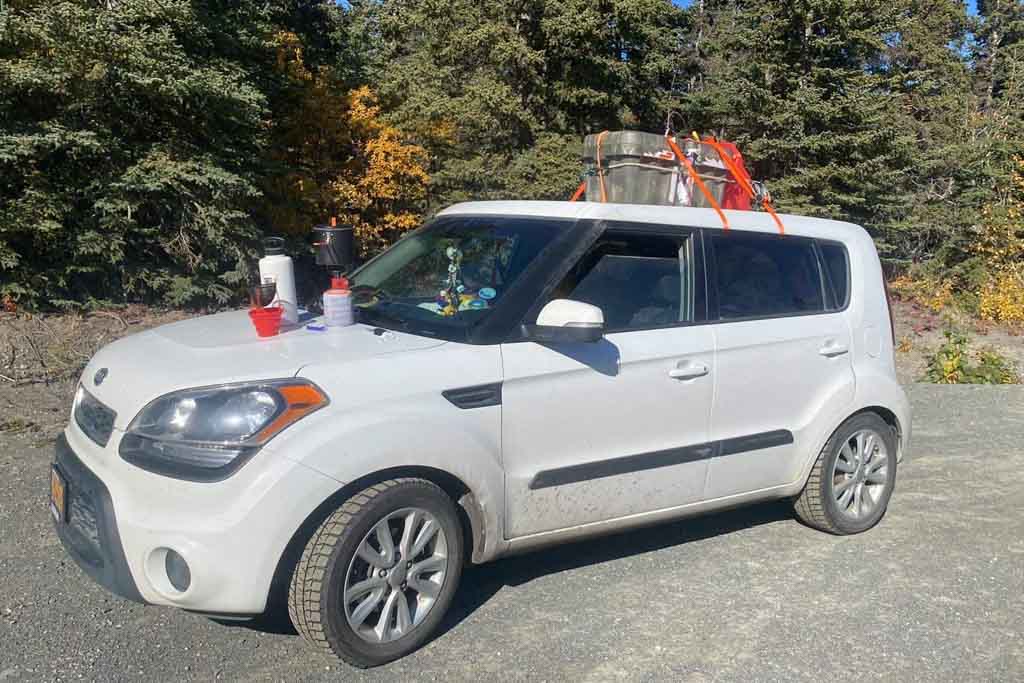
Driving the Alaska Highway is no joke so you’ll want to make sure you’re prepped and have all the necessities with you.
These are mostly all car-related (you know because s*** can and will happen along the way!).
Spare Tire, Tire Jack, & Tire Repair Kit
I think I can solidly say that I’ve never driven the Alcan without getting a flat. It just comes with the nature of this journey.
I drove through a long section of construction just before reaching Ft. Nelson and got a flat just on the other side of town. I pulled out my little repair kit, patched the tire, and drove a few kilometers back to Ft. Nelson to a tire shop.
They found a screw in there (no surprise after driving through a construction zone). They laughed when I asked if that construction zone was keeping them in business all year and said yes.
I did have a spare with me too but figured since I was so close to a town I might as well get the current tire taken care of. (Don’t worry the spare came in handy later in my trip down in Montana after a mishap).
Moral of the story: plan for the worst and bring a spare , a jack , and a tire repair kit .
A gas can used to be an absolute must for driving the Alcan in the past, but not so much these days- but I still recommend carrying a full gas can just in case.
On my drive down the Alaska Highway in September 2022, I rarely dropped below half a tank of gas in the Kia before running across another fuel station (I still have memories of driving the Alcan in years past when fuel stations were few and far between).
So the safest bet is to fill up every chance you get and pack a gas can for the worst-case scenario.
Vehicle Fluids
Make sure and top up your windshield wiper fluid, that your oil has been freshly changed, and any other fluids and lubricants to keep your vehicle running smoothly have been topped up before you go.
Along with that, I would recommend carrying extra bottles of wiper fluid , oil , etc. to refill en route just in case.
Jumper Cables
Running your battery dead does happen, so I would recommend bringing some jumper cables in the event it happens to you. That way you can flag down another car and ask them for a jump.
Alternatively, you can look into a portable car jumper .
Passports & Cash
It goes without saying that you will need your passport for your Alaska Highway road trip to cross the border, so don’t leave home without it!
Many campgrounds are paid in cash only, so make sure and hit an ATM in Canada or Alaska to have the proper currency in order to pay.
Alaska Milepost
Not an absolute must but a copy of the Alaska Milepost does come in handy when taking on the Alcan.
Food & Water
As there are shops in the towns and cities you’ll pass through you can easily replenish as you make your way north along the Alaska Highway.
I’d recommend having a cooler to store food, drinks, and snacks in.
This is even more important if you’ll be driving the Alcan October-April as there won’t be as many shops open along the way.
Will I Have Phone Reception on the Alaska Highway
In some places, you will have coverage, in others you will not. Of course, as you near towns and cities you will pick up mobile coverage but when you’re on those remote sections of the Alaska Highway expect to have no service.
That said, I would recommend carrying a satellite messenger like the Garmin Inreach or a sat phone if you’re concerned about having coverage in the event you need to make contact.
Info About Crossing the Alaska-Canada Border
Crossing the border is pretty straightforward.
Once you arrive just follow the signs explaining what to do. Sometimes you’ll receive many questions other times not so much.
When I last drove the Alaska Highway in 2022 registering on the ArriveCan App was still required to enter but this was no longer the case after October 2022 (these were all pandemic travel requirements). There is no longer a requirement for Covid testing either.
You will likely be asked if you have any fresh meat, produce, pets, firearms, or marijuana with you (I was). I simply said no, and I was welcomed into Canada (note that I was going in the opposite direction as most of you will be).
Crossing the Border with Food Items
Note that fresh meat and produce will pose issues at the border, so make sure to cross without them. If you declare them they will likely just make you toss them out. If you risk it and don’t declare them and they search you at the border you risk being fined).
Generally, packaged food should be fine to cross the border with.
If you need more info on what’s allowed into the US (Alaska) here and into Canada here .
Crossing the Border with Pets
You do have to provide documentation if you are bringing pets and/or firearms across the border.
Find everything you need to know about entering the US with pets here and entering Canada with pets here .
Crossing the Border with Firearms
If you will have any firearms with you, you will need to declare them and provide documentation.
Find the rules for entering the US with firearms here and for entering Canada with firearms here .
The Alaska Highway Itinerary
Now, this isn’t a strict Alaska Highway itinerary per se, it’s more of a list of stops en route along the way so that you can mix and match to create your own itinerary to suit your interests and time frame.
Since this is an insanely long post (it’s over 10,000 words at this point), I’ve not included many photos in order for the page to load a bit more quickly (I know you all have google and can search the destinations listed here anyway).
Note that prices listed in this Alaska Highway Itinerary are in CAD in the sections between Dawson Creek and the Alaska-Canada Border, from the border to Delta Junction prices are listed in USD.
Mile 0: Dawson Creek
Your adventure along the Alaska Highway has begun!
Dawson Creek provides a great opportunity to stock up on all the odds and ends you’ll need for traveling the Alcan.
So fuel up, grab some groceries and snacks, load up on water, and so on before you depart.
Places to Stay in Dawson Creek
Dawson creek campgrounds & rv parks.
- Mile 0 Campground : Has RV and tent sites. Tents are $28 per night and RV sites range from $28-46 per night.
- Northern Lights RV Park : Also has RV and tent sites. Tents are $30 per night and RV sites range $52-60 per night. Cabins are also available for $125 per night.
Dawson Creek Hotels
- Comfort Inn
- George Dawson Inn Conference Center
Where to Grab A Bite to Eat in Dawson Creek
- Drunken Goat Taverna
- Sourdough Joe’s
- Spicy Fusion
- Brown’s Social House
Things to do in Dawson Creek
- World Famous Alaska Highway Sign: Snap your photo with the famous sign marking the start of the Alcan (don’t laugh but I still do not have a picture with the sign somehow!).
- Dawson Creek Visitor Center: Gives out useful information on Dawson Creek and the surrounding area, as well as updates on the Alaska Highway. You can also pick up a souvenir or two here at the visitor center.
Services Available in Dawson Creek
- Fuel (several stations to choose from)
- Grocery stores (several to choose from)
- Vehicle repair
- Dump station and water fill up
Mile 1-46: Dawson Creek to Fort St. John
There isn’t a lot to see in this short stretch extending between Dawson Creek and Fort St. John on the Alaska Highway, but there are a couple of places worthy of a quick stop.
Mile 17: Kiskatinaw Provincial Park: Located a few miles off the main Alcan Highway and home to the Kiskatinaw Bridge, a timber bridge that is the only original one built along the Alaska Highway still in use to this day.
To get to the Kiskatinaw Bridge you’ll need to turn off the Alcan at Mile 17 onto 220 Road and follow it a few meters and then turn left onto Kiskatinaw Road which will bring you to the original Kiskatinaw Bridge.
Mile 34: Taylor: A small town home to 1200 residents. There are fuel, groceries, and restaurants here. Noteworthy things to check out include Peace Island Park.
Mile 47: Fort St. John
Fort St. John is only a short distance from Dawson Creek, so most won’t stop here (plus there aren’t any major attractions).
That said, if you do find yourself here in Fort St. John on your trip along the Alaska Highway, here are a few things to help you plan your time there.
Where to Stay in Fort St John
Fort st. john campgrounds & rv parks.
- The Humestead : Located northwest of Fort St. John, past Charlie Lake (off of RD 287). Reserve in advance. Tent and RV slots are available. $35 per night
- Home 2 Suites by Hilton
- Northern Grand Hotel
Where to Eat in Fort St. John
- Olive Tree Mediterranean Grill
- Brown’s Crafthouse Fort St. John
- North Bar & Grill (inside the Northern Grand Hotel )
Things to do in Fort St. John
- Fort St. John Peace Museum : Learn about indigenous and contemporary history in and around Fort St. John.
- Fort St. John Visitor Information Center: Here you can find useful information about the city and surrounding area.
Services Available in Fort St. John
Mile 48-282: fort st. john to fort nelson.
Again, Mile 48-283 isn’t the most exciting stretch of the Alaska Highway but there are a couple of stops en route between Fort St. John and Fort Nelson.
Mile 53: Charlie Lake Beatton Provincial Park: Beatton is a 320 hectare park offering walking trails, fishing, swimming, and other outdoor recreational activities. It’s located around Mile 53 along the Alcan. This will also give you access to Charlie Lake.
Mile 153: Pink Mountain: Pink Mountain is a small community of about 100 residents. The views of the Rocky Mountain Foothills near here are quite nice and worth a quick top to stretch your legs.
Mile 173: Buckinghorse River Provincial Park: A gorgeous area on the shore of the Buckinghorse River that has a campground.
Places to Sleep Between Fort St. John & Fort Nelson
- Duhu Lake Recreational Site: Located at Mile 154. 7 campsites and the best part is that camping is free. First come, first serve.
- Sikanni River Campground & RV Park : At Mile 159 and has both RV and tent sites and cabins. Tents are $30 per night, RVs are $30-$50 per night, and cabins are $75-90 per night.
- Buckinghorse River Lodge : Features a motel, cabins, and 15 camping spots. Located at Mile 175.
- Andy Bailey Regional Park : Located at Mile 265 (and about 12 kilometers off the Aaska Highway). Features 13 camping slots. $17 per night, cash only.
Mile 283: Fort Nelson
Fort Nelson got its origins as a fur trading post for the North West Fur Trading Company.
It remained little more than an outpost until the 1950s when more development rolled in as a result of being located along the Alaska Highway.
Much like Fort St. John, there aren’t many major attractions in town, however, Fort St. John provides a nice place to bed down for the night and grab something for dinner.
Fort Nelson is the largest town you’ll cross through on the Alcan until you reach Watson Lake, so it’s a great place to stop and stock up on any groceries and other necessities.
Places to Stay in Fort Nelson
For nelson campgrounds & rv parks.
- Triple G Hideaway Campground : Features RV and tent sites.
Fort Nelson Hotels
- Lakeview Inn & Suites
- Woodlands Inn & Suites
Where to Grab Food in Fort Nelson
- One Restaurant (inside Woodlands Inn & Suites )
- Northern Spice Pizza & Donair
- P & T Restaurant
Things to do in Fort Nelson
- Fort Nelson Heritage Museum: Check out the array of artifacts from the Fort Nelson area on display here at the museum and learn about the history of the town. There’s even a vintage car collection on display.
- Old Fort Nelson: Just a little off the main route on the Alaska Highway find the original town site of Fort Nelson.
Services Available in Fort Nelson
Mile 284-437: fort nelson to muncho lake.
This section of the Alcan gets a lot more interesting as you bend toward the west from Fort Nelson and traverse the northern stretches of the Rocky Mountains.
Mile 300: Highway 77 Junction: Those wanting to take a detour from the Alaska Highway can opt to veer north at Mile 300 onto Highway 77 (also known as the Liard Highway between the junction and Fort Liard and then the MacKenzie Highway from Fort Liard to Fort Simpson) which will take you into the uber-remote Northwest Territory.
The highway officially opened in June of 1984 and is a decent condition gravel road most of the time, though do enquire about conditions at the Fort Nelson Visitor Center before departing. This goes into a fairly remote area with limited services so go in prepared.
Mile 319: Muskwa River Park: Located just off the Alaska Highway and makes for a good break point.
Mile 342: Tetsa River Regional Park: Another good breakpoint on the Alcan. There is a campground here for those wanting to spend the night. If not camping you can check out the Testa River Lodge.
Mile 371-380: Stone Mountain Provincial Park: Stone Mountain Provincial Park provides a great opportunity to get out and stretch your legs along the long journey up the Alaska Highway.
With beautiful sceneries, hiking trails, potential for wildlife spotting, kayaking, and more you can easily spend a few hours or even an overnight here.
At Mile 371 you will find Summit Lake which has a campground and is a great place to stay for the night and take some time to explore the outdoors here at Stone Mountain Provincial Park.
Scattered throughout this 9 mile span of the Alaska Highway that cuts through Stone Mountain Provincial Park you’ll find its handful of trails including Baba Canyon Trail, Summit Peak Trail, and Flower Springs Trail.
Mile 409: Folded Mountain: Worthy of a stop to appreciate the strange geology of Folded Mountain with its striated and wavy appearance. There is a pull-off here and interpretive signs.
Places to Stay Between Fort Nelson & Muncho Lake
Tetsa river.
- Tetsa River Lodge : Features a campground for tents and RVs and, cabins, RV slots are $30 per night and $20 for tents.
- Tetsa River Regional Park Campground : Features 25 camping sites and costs $20 per night.
In Stone Mountain Provincial Park
- Summit Lake Campground : Inside of the park, only open from May 1-September 15. $20 per night, cash only.
Between Stone Mountain Provincial Park & Muncho Lake
- Toad River Lodge : -Features RV and tent camping in addition to their cabins. Open May 15-October 10. Cabins are $125+ per night.
- Poplars Motel & Campground: Features both cabins and an RV park.
Mile 437: Muncho Lake
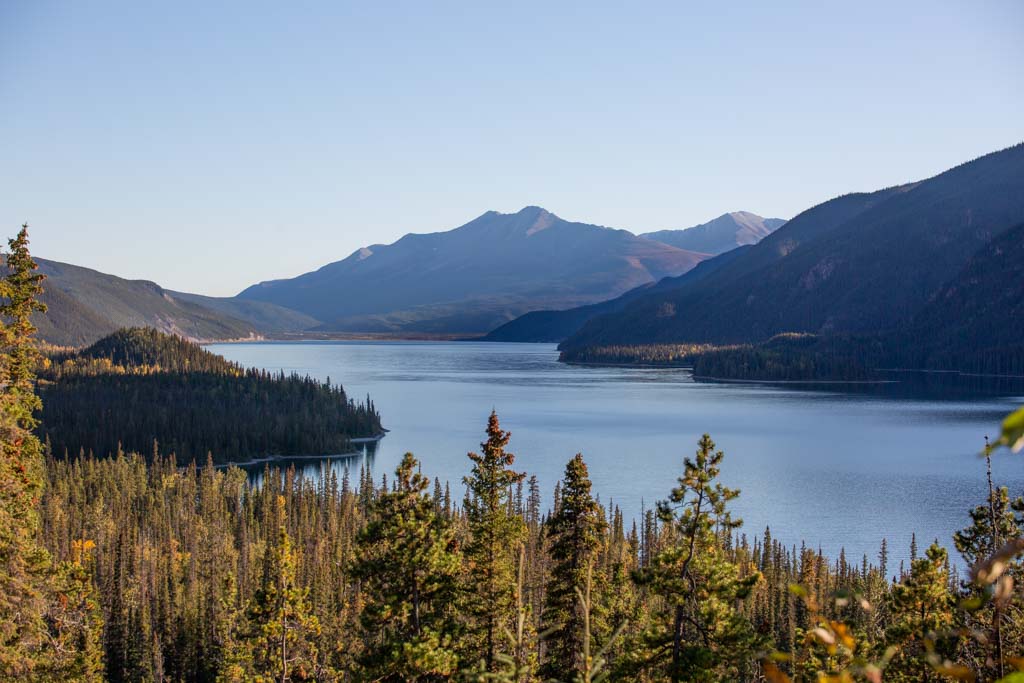
Meaning “big lake” in the Kaska language, it’s easy to see how Muncho gained its name- the lake is over 7 miles long and 750 feet deep.
Muncho Lake is one of the prettiest stops along the Alaska Highway route with its dazzling turquoise waters. Make sure not to miss soaking in the Muncho Lake views at one of the pull-offs overlooking the lake.
It’s also a great place to get out of the car and into the outdoors with potential for kayaking, hiking, fishing, and more.
Places to Stay around Muncho Lake
Muncho lakes campgrounds .
- Strawberry Flats Campground : On Lake Muncho. Open May 1-September 15. $20 per night.
- MacDonald Campground : Open May 1-September 15. Also located on Muncho Lake. $20 per night.
Where to Get a Bite to Eat by Muncho Lake
- Double G Services Motel
- Northern Rockies Lodge (also features an RV campground in addition to their motel and lake chalets)
Things to do at Muncho Lake
- Kayaking on Muncho Lake: Canoeing is available as well. A good way to break up your Alcan journey and get out on the water.
- Muncho Lake Viewpoints: There are several great places for viewing the beautiful lake tucked into the Canadian Rockies along the Alaska Highway.
- Stone’s Sheep Trail: A gradual uphill hike covering 3.8 miles/6.1 kilometers that will take you to some interesting rock formations and a waterfall.
Services Available in Muncho Lake
- Fuel (2 stations: Double G and at Northern Rockies Lodge)
- Grocery stores (More like convenience stores that are found inside the Double G Fuel Station and inside the Northern Rockies Lodge)
Mile 443-474: Muncho Lake to Liard Hot Springs
It’s a short jaunt along the Alaska Highway between Muncho Lake and Liard Hot Springs with some hiking on offer.
Mile 452: Red Rock Canyon Trail: A 3.7 mile/6 kilometer out-and-back trail that follows the course of the Red Rock Canyon here just north of Muncho Lake. A good spot for wildlife viewing.
Mile 453: Mineral Lick Trail: A good and short walk at 0.7 miles/1.1 kilometers. It’s a great chance for viewing wildlife.
Mile 477: Liard Hot Springs

Liard Hot Springs is the perfect place to relax for an afternoon or so, lapping up the warm waters range in temperatures from 42ºC to 52ºC.
Places to Stay in Liard
- Liard River Hot Springs Provincial Park : Costs $27 per night to camp here and this will waive the $5 per person hot spring entrance fee, but there are no hookups or dump stations.
- Liard River Hot Springs Lodge
Things to do at Liard Hot Springs
- Soak in Liard River Hot Springs Provincial Park: An obvious choice if you’re planning to stop through Liard. Read more about visiting here in my post on Liard Hot Springs .
Things to Know Before Going to Liard Hot Springs
- There is a $5 per person fee to visit between April 1 and October 31, outside this time it is free to enter.
- The park opens at 7 am.
- There are pretty nice modern facilities here with changing rooms and toilets right next to the hot springs.
- You’ll need to go on a short walk along a boardwalk for about 10 minutes to reach the hot spring.
- Bears are a common sighting here, especially along the boardwalk, so stay alert and bring some bear spray with you.
Services Available in Liard
- Fuel (at Liard Hot Springs Lodge)
- Grocery store(Also inside Liard Hot Springs Lodge)
- Dump station and water fill up Liard River Hot Springs Provincial Park Campground
Mile 478-611: Liard Hot Springs to Watson Lake
This is your last stretch of the Alcan through British Columbia! There are a couple of stops of interest along this part of the Alaska Highway before your grand entrance to the Yukon Territory at Watson Lake.
Mile 491: Smith River Falls: Here at Mile 491 find a gravel road meandering off of the Alaska Highway. It will lead to a parking lot at Smith River where you can take a 1.6 mile/2.5 kilometer hike to view 115 foot/35 meter high Smith River Falls.
Mile 516: Whirlpool Canyon: Stop off here for a great view of the whirling waters of the Liard River. This area is known for being treacherous as many boats capsized here in the past trying to navigate this crazy canyon.
Mile 603: Welcome to Yukon Sign: You’ve crossed into the Yukon Territory so snap a pic to take home with you.
Places to Stay Between Liard Hot Springs & Watson Lake
- Coal River Services : Offers a Tent and RV campground in addition to their motel. Located at Mile 513 of the Alaska Highway. Campground is open from May 15-late October and the motel is open year-round. Also sells fuel and has a cafe.
- Contact Creek Lodge: Located at Mile 590 of the Alaska Highway, about 40 miles south of Watson Lake. Lodge only. Sells fuel and features a convenience store too.
Mile 612: Watson Lake

Watson Lake is where you’ll get your first warm welcome to the Yukon Territory (although the Alcan does go up in the Yukon before, bends back into BC, and then again turns north to re-enter the Yukon).
With that all said, Watson Lake is the first bigger town you’ll reach in the Yukon Territory and you’re more than likely overdue to get out and stretch your legs anyways.
What Watson Lake is most famous is of course the Watson Lake Sign Forest which makes for a fun little wander.
Places to Stay in Watson Lake
Watson lake campgrounds & rv parks.
- Downtown RV Park: A simple RV park in the middle of town.
- Watson Lake Campground : Located on the southern shore of Watson Lake. Slots start at $18 per night.
Watson Lake Hotels
- Airforce Lodge
- A Nicer Motel
- Cedar Lodge Motel
Where to eat in Watson Lake
- Nugget Restaurant
- Laurie’s Bistro & Coffeehouse
Things to do at Watson Lake
- Watson Lake Sign Forest: The Watson Lake Sign Post Forest is the most famous site in Watson Lake. It came about during the construction of the Alaska Highway in 1942 when Carl Lindley, a US soldier who was recovering from an injury in Watson Lake was given a job of repairing signposts.
- Watson Lake Visitor Center: Offers some insight into the history of the Watson Lake area and offers brochures and maps of the area. The staff can also help you with information on the Alcan.
- Northern Lights Center: A planetarium featuring a domed theatre that is centered around the northern lights.
Services Available in Watson Lake
- Fuel (several stations)
- Grocery stores (several stores)
Mile 613-775: Watson Lake to Teslin
There are a few stops to check out here on the southern end of the Yukon Territory to break up this leg of the journey from waterfalls to lakes, and even the cut-off to take the alternative to the Alaska Highway through the Yukon.
Mile 628: The Junction for the Cassiar Highway: Those wanting to take this alternative route to the Alaska Highway will need to turn off here.
Mile 691: Lower Rancheria River: Features a short walk that will bring you to an overlook of Rancheria Falls.
Mile 699: The Continental Divide: The Alcan crosses this ridge that separates the two largest river drainages in North America and at this point, this narrow ridge separates the Swift River flowing westward and eventually into the Bering Sea, and the Rancheria River flowing eastward and eventually into the Beaufort Sea.
Mile 772: Teslin Lake & Nisutlin Bay Bridge: Stop here for great views off of the Nisutlin Bay Bridge to Teslin Lake, a lake that spans across the border into both Yukon and BC.
Mile 776: Teslin
Sat on the shores of Teslin Lake within Nisutlin Bay this pint-sized town of 125 residents has a few services for passersby.
Places to Stay near Teslin
Campgrounds & rv parks in and around teslin.
- Big Creek Government Campground : Sat at the shore of Big Creek. Features RV and tent camping. $18 per night.
- Continental Divide Lodge : Located at Mile 721 and features RB and tent camping.
- Teslin Lake Government Campground : A nice campground off of Teslin Lake featuring both Tent and RV camping. $12 per night.
- Teslin Rest Stop: A rest area close to the Nisutlin Bridge. Free to stay at and has outhouses.
- Yukon Motel & RV Park : As the name suggests, Yukon Motel & RV Park features RV camping in addition to their motel. Also has a cafe inside.
Hotels in Teslin
- Nisutlin Trading Post
Where to eat in Teslin
- Inside the Yukon Motel
Things to do in Teslin
Teslin Tlingit Heritage Center : Learn about the local Tglinget People who originate from this area around Teslin as well as the geographical and landscape features of the surrounding area.
Services Available in Teslin
- Grocery stores
Mile 777-832: Teslin to Jake’s Corner
This is just a short section. The only stops really in this section are at Mile 805 for Johnson’s Crossing where you’ll find fuel and food and at Mile 817 for Squanga Lake.
Mile 833: Jake’s Corner & the Detour to the Klondike Highway to Carcross (or onto Skagway!)
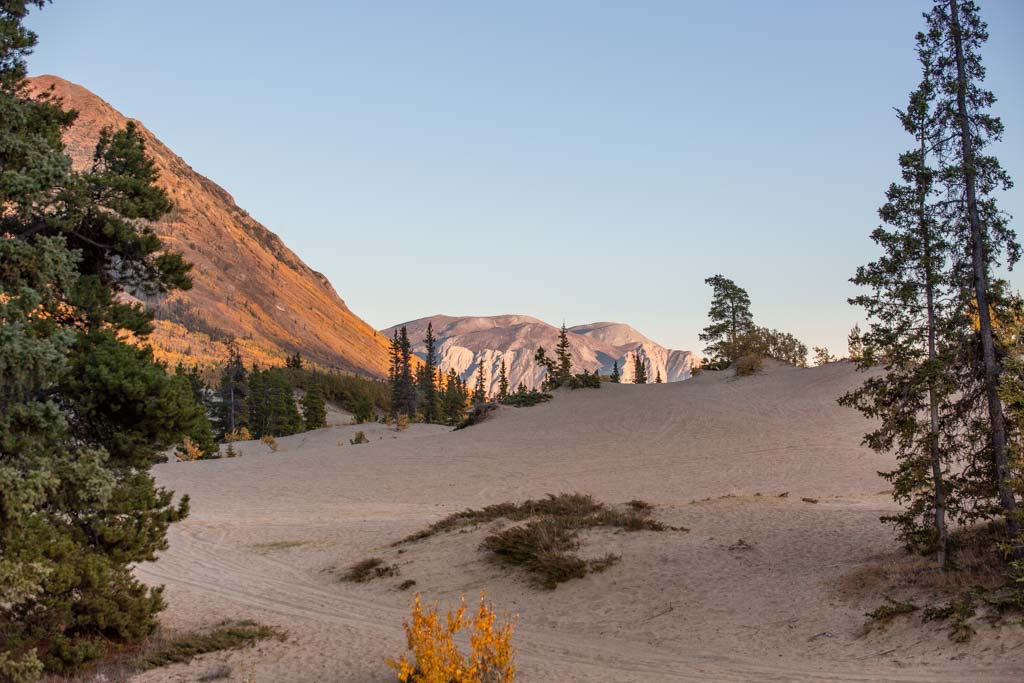
This is a popular detour from the Alaska Highway and in my opinion much worth it for the chance to visit a tiny oddity- The Carcross Desert .
From Jake’s Corner take Tagish Road (Yukon 8) which will take you to Carcross where you’ll have the chance to visit one of the world’s tiniest deserts.
At Carcross, you’ll reach the Klondike Highway (Yukon 2) where a turn to the north will route you back to the Alaska Highway.
Those wanting to cross the border into Alaska here and go to Skagway will take the Klondike Highway to the southeast at Carcross.
In total, the detour from the Alaska Highway to go to Carcross is 66.5 miles/107 kilometers. The Klondike Highway meets back with the Alcan at Mile Marker 872 on the Alaska Highway.
Places to Stay in Carcross
- Carcross Tagish First Nation Campground : Right in the middle of Carcross and features tent and RV sites. $12 per night.
- Conrad Historic Townsite & Campground : A few miles outside of Carcross along the Klondike Highway to the south. Tent and RV camping are available.
- Montana Services RV Park: Also in the heart of Carcross. It is a fuel station but features RV camping and has a grocery store on site.
Where to eat in Carcross
- Caribou Crossing Cafe
Things to do in & Near Carcross
- Carcross Desert: The Carcross Desert is a small 1 mile x 1 mile dune field- something you probably wouldn’t expect to come across this far north. Plan you own visit with my quick guide to visiting the Carcross Desert .
- Emerald Lake: A drive 10 minutes north of Carcross on the Klondike Highway will take you to dazzling Emerald Lake. It’s a picture-worthy stop.
- Skagway: Those wanting to take the ferry onwards to other locations in Alaska or just want to check out the little seaside Alaskan town can cross the border and visit Skagway. It’s about 90 minute drive time from Carcross to Skagway.
Services Available in Carcross
- Fuel (Montana Services Station at Carcross Crossing)
- Grocery stores (Carcross Crossing- in the same building as the above-mentioned fuel station)
Mile 872-886 Caribou RV Park-Whitehorse
Not much to see in this short section. Beyond the Klondike Highway-Alaska Highway Junction at Caribou RV Park, you come across Wolf Creek Yukon Campground at Mile 875 which offers a good place for an overnight or just a stop to check out the trails nearby.
Mile 887: Whitehorse
Welcome to the largest city and capital of the Yukon Territory (they actually took the status from Dawson City to the north in 1953). Fun fact: 70% of the Yukon Territory’s population lives here in Whitehorse!
Whitehorse gained its name from the Yukon River rapids in this area reminiscent of the mane of a white horse.
The history of Whitehorse stretches back eons being home to indigenous peoples before it experienced its first surge in population during the old gold rush days. The city experienced yet another boom with the construction of the Alaska Highway as it served as one of the largest worker camps along the route.
Where to Stay in Whitehorse
Whitehorse campgrounds & rv parks.
- Hi Country RV Park : An RV park close to town and features tent and RV camping. Tents are $37.50 per night, and RVs are $42.50-57.50 per night.
- Pioneer RV Park & Campground : Right in town, tents are $20-23 per night and RVs are $32-37 per night.
Whitehorse Hotels
- Midnight Sun Inn
- Edgewater Hotel
- Raven Inn Whitehorse
Where to Grab a Meal in Whitehorse
- Miner’s Daughter & Dirty Northern
- Antoinette’s Restaurant
- Belly of the Bison (inside the Edgewater Hotel )
- Night Market
Things to do in Whitehorse
- Whitehorse Visitor Center: Find out what all there is to do in and around Whitehorse, any upcoming events happening, or info on the remaining section of the Alaska Highway to the Alaska Border. There’s also a short film about the Yukon the center will play for you if interested.
- Whitehorse Millennium Trail: This 2.3 mile/3.7 kilometer loop follows the banks of the Yukon River and connects some of Whitehorse’s parks.
- Miles Canyon Suspension Bridge: Crossing the Yukon River, the Miles Canyon Suspension Bridge is worthy of a stop for the views of the canyon. You also will get access to trails that wind up the canyon here as well.
- Yukon Beringa Center : Those wanting to learn more about the natural history of the Yukon and the Bering Strait will love popping into this museum.
- Kwanlin Dün Cultural Centre : Learn more about the history and culture of the Kwanlin Dün People who have inhabited this area of the Yukon for centuries.
- SS Klondike National Historic Site: Sternwheelers were a major form of transport in northern areas such as Alaska in the Yukon back during the gold rush days. The SS Klondike was a sternwheeler boat that ran freight on the Yukon River between Whitehorse and Dawson City and began operation in 1929. In 1936 the SS Klondike hit a rock wall and sank and by 1937 a second SS Klondike was built. The second SS Klondike is the one on display in Whitehorse here.
- Yukon Transportation Museum : Learn more about the history of transportation in remote Yukon and the considerations that came along with its extreme weather and long winters. There is a $10 entry fee to enter.
- MacBride Museum : Learn about the history of the Yukon right on the banks of the river. There are over 40,000 artifacts stored here showcasing the Klondike Gold Rush, the First Nations People of the Yukon, and more. There is a $12 entry fee.
Services Available in Whitehorse
- Fuel (several to choose from)
Mile 888-979: Whitehorse to Haines Junction
Mile 896: Eclipse Nordic Hot Springs : Just a little beyond Whitehorse take a turn around Mile 896 toward the north onto the Klondike Highway (Highway 2) before turning west onto Takini Hot Springs Road and following it to Eclipse Nordic Hot Springs. This is a luxurious hot spring and spa to relax at.
Mile 937: Dan K’e Ventures (Long Ago Peoples Place) : At about Mile 397 you’ll take a turn onto Champagne Access Road to visit Dan K’e Ventures which translates to the Long Ago Peoples Place. The cultural tour ($41.50 per person- do call or email ahead to book) is recommended to get more insight into the Southern Tutchone People’s culture, traditions, construction techniques, and more.
Mile 943: St. Elias Lake Trail: St. Elias Lake actually sits within Kluane National Park. You can find details about the hike in the Kluane National Park section below.
Mile 980: Haines Junction
Haines Junction is a small town located at the junction of the Alaska Highway and the Haines Cutoff (Highway 3) which leads to the border crossing to Haines, Alaska (this would be of use if you plan to take the ferry the remainder of the way to Alaska).
The town of Haines Junction is flanked by the St. Elias Mountains, giving the town a beautiful backdrop.
Those that plan to go deeper into Kluane National Park than where the Alcan brushes up against it further afield will surely find themselves in Haines Junction as this is the place to make arrangements for flightseeing and backcountry trips into the national park.
Mountaineers planning to ascend Mt. Logan, Canada’s highest peak, will usually make a stop here in Haines Junction as well.
Where to Stay in Haines Junction
Haines junction campgrounds & rv parks.
- FasGas RV Park: Gas station with a convenience store in Haines Junction that also features RV camping.
- Pine Lake Campground : Tent and RV campground. 3 miles outside town to the north of Haines Junction. $20 per night.
Haines Junction Hotels
- Alcan Motor Inn
- Parkside Inn
- Wanderer’s Inn Backpacker Hostel
Where to Eat in Haines Junction
- Village Bakery & Deli
- Mile 1016 Pub
Things to do in Haines Junction
- Da Kų Cultural Centre : Showcases artifacts and the history of the Champagne and Aishihik First Nations.
- Kluane National Park and Reserve Visitor Centre: Attached to the Da Kų Cultural Centre. The Kluane NP Visitor Center can provide information and tips for anyone planning to visit the remote national park as well as display historical information about the park, exhibits, and footage about the first mountaineers who summited Mount Logan.
- Dezadeash River Trail: Those wanting to get out of the car and take a hike can opt for the 2 mile/3.2 kilometer Dezadeash River Loop Trail that starts right from Haines Junction.
Services Available in Haines Junction
- Grocery stores (Little Green Apple, otherwise convenience stores attached to gas stations)
Mile 1020: Kluane National Park & Preserve

Kluane National Park is a massive park spanning over 20,000 square kilometers of raw nature that butts up against Wrangell St. Elias National Park & Preserve on the Alaskan side of the border.
Home to an array of wildlife, the largest icefield in the world outside the polar regions, as well as the second-highest peak in North America after Denali (and thus Canada’s highest peak).
Kluane National Park runs along a stretch of the Alaska Highway that passes by Kluane Lake where you will have the easiest access to the national park, otherwise, the remainder of Kluane National Park is extremely remote and usually requires booking an air taxi to fly you in.
In my opinion, Kluane is the most beautiful section of the road trip along the Alaska Highway hands down.
If you have the time to spare I would suggest setting aside a couple of nights to explore around some of these easier-to-access areas of the national park close to the Alcan.
Kluane National Park is exceptionally beautiful in September at the end of the main season when leaves turn vibrant yellows, golds, and oranges; berry bushes low down deepen into a vibrant red; and termination dust (snow) starts to creep down the peaks around the park.
Where to Sleep in Kluane National Park
- Congdon Creek Campground : Located about halfway between the southern end of Kluane Lake and Destruction Bay. Sites are first come, first serve. Both tent and RV camping are available. Tents are required to use the 20 sites with electric fences (because bears!). $20 per night.
- Destruction Bay Lodge : Located at Destruction Bay as the name suggests and features RV camping.
- Kathleen Lake Campground : Tent and RV camping, first come, first serve. Sites are $26 per night. Located south of Haines Junction at Mile 136/Km 219 of the Haines Cutoff Road (not the Alaska Highway).
- Kluane Cove: Located right on Kluane Lake at Destruction Bay. Free to camp at. Watch out for grizzlies.
Things to do in Kluane National Park
- St. Elias Lake Trail : This epic 4.8 mile/7.7 kilometer out and back trail through the first to reach St. Elias Lake. The trailhead begins near Lake Dezadeash at about Mile 943 on the Alaska Highway, a bit south of Haines Junction. St. Elias Lake still sits within Kluane National Park (it’s a bit confusing until you look at it on a map).
- Kathleen Lake: If you’ve only got a short time to dedicate to visiting Kluane National Park (aside from driving the Alcan through it), Kathleen Lake is a worthy stop. Kathleen Lake sits at Mile 136/Km 219 of the Haines Cutoff Road, so it’s a bit south of Haines Junction, but the lake still sits within Kluane National Park like the nearby St. Elias Lake Trail.
- King’s Thorn Peak Hike : This is a grueling summit but well worth the effort for the views. The 7.9 mile/12.7 (round trip) hike gains 4,507 feet/1,373 meters to reach the top. The trailhead to King’s Thorn Peak starts from the Kathleen Lake Campground.
- Kluane Lake: 50 mile long Kluane Lake is impossible to miss as you’ll drive alongside it on the Alaska Highway for quite some time. It’s a beautiful milky turquoise owing to it being glacially fed, though Kluane Lake unfortunately is incredibly vulnerable to our ever-changing climate. You can take boats, kayaks, and canoes out onto Kluane Lake though do take caution as the waves can get massive on the lake.
- Silver City: At Mile 1016 of the Alaska Highway take a detour 3 miles/5 kilometers to the east down a gravel road to visit the ghost town of Silver City. It originally was a trading post and featured a roadhouse. This route led to some of the gold mines back during the Klondike days.
- Thechàl Dhâl Visitor Center : Sat in the ‘Ä’äy Chù Valley is the Thechàl Dhâl’ Visitor Center which is reachable by turning off the Alaska Highway at Mile 1024. The visitor center features exhibits about the flora and fauna of the area as well as the First Nations People that have inhabited the Kluane area.
- Sheep Creek Trail : Just a little further beyond the Thechàl Dhâl’ Visitor Center is the start of the Sheep Creek Trail. It’s an 8 mile/12.8 kilometer out-and-back trail that gains 2,395 feet/730 meters.
- Ä’äy Chù (Slim’s River) West Hike : Also starting from the Thechàl Dhâl’ Visitor Center, this is a long 27.4 mile/42 kilometer (round trip) trek that takes most anywhere between 2 and 4 days to complete. The trek is relatively easy, just long, and offers grand views of Kaskawulsh Glacier.
- Soldier’s Summit Trail: If you’re looking for a nice and gentle hike that won’t eat up too much time, the Soldier’s Summit Hike is a nice option at 2.2 miles/3.5 kilometers. The hike provides grand views of Kluane Lake and follows an old section of the original Alaska Highway. The trailhead is signposted on the Alcan and is located at Mile 1025.

- Destruction Bay: Located at Mile 1046, Destruction Bay is a small community on the shores of Kluane Lake. The small outpost gained its name in the 1940s when the construction camp here on the Alaska Highway was destroyed in a bad windstorm. Nowadays it’s mostly a convenient stop for visitors passing by on the Alcan for fuel, groceries, and accommodation.
- Kluane Museum of History : Located at Mile 1056 of the Alaska Highway is the Kluane Museum of History. Features wildlife exhibits, gemstones and minerals from the Yukon region, and tools and weapons of the Southern Tutchone people.
- Quill Creek: Located at Mile 1073 of the Alaska Highway, it was once home to the Wellgreen, a nickel mine owned by Hudson’s Bay Company that closed in 1973.
- Lake Creek: A campground and recreational area located at Mile 1112.
- White River: White River is more or less the northern end of Kluane National Park at about Mile 1129 of the Alcan. The Yukon Discovery Lodge is located here.
- Flightseeing in Kluane National Park: One of the best ways to access the remote areas or just get a different perspective on Kluane National Park is to take a flightseeing tour. There are a scattering of flight operators, mostly based in Haines Junction, however, there are some further north in Burwash on the shore of Kluane Lake.
Mile 1130-1201: Kluane National Park to Beaver Creek
There isn’t much to get out and do along this section of the Alaska Highway as it truly is bumf*** nowhere (and I mean that in the nicest possible way.)
If you were determined you could try to trudge into the backcountry out here I guess, though I wouldn’t recommend it since this area along the Alcan is teeming with wildlife.
So that brings me to- keep some binoculars handy and photographers have their telephoto ready because this is one of the best stretches of the Alaska Highway to spot wildlife.
Where to Stay Between Kluane National Park & Beaver Creek
- Lake Creek Campground : Located on the White River and just off of the Alaska Highway. Tent and RV camping are available for $20 per night. Open May 19-October 2.
- Snag Junction Campground : Campsites are $20 per night. Located about 15 minutes outside of Beaver Creek. Open May 19-October 2.
- Discovery Yukon Lodge : An ecotourism camp along the White River. Offers tent and RV camping and a lodge.
Mile 1202: Beaver Creek
With a tiny population of 100, Beaver Creek has all the trappings of a dusty border town. Beaver Creek is Canada’s westernmost city and is home to the White River First Nation.
The border crossing into Alaska is just beyond, so if it’s late you may want to consider spending the night here, as well as fill up on fuel.
Places to Stay in Beaver Creek
- Buckshot Betty’s Restaurant & Rooms
- 1202 Motor Inn
Where to Get Something to Eat in Beaver Creek
- Ida’s Motel & Cafe
Things to do in Beaver Creek
- Snap a photo with the ‘Welcome to Beaver Creek” sign: This is about the only attraction here in Beaver Creek for most travelers.
Services Available in Beaver Creek
- Fuel (Fas Gas Station)
- Grocery stores (A couple of convenience stores)
Mile 1203-1225: Beaver Creek (Canadian Border Post) to the Alcan Port of Entry (US Border Post)
About 1 mile outside of Beaver Creek you’ll pass the Canadian Border Post, you do not need to stop here (if you’re leaving Canada and going into Alaska, if you are coming from Alaska and into Canada you will stop here).
Beyond that, you’ll pass through a long stretch of no man’s land between the two countries (nearly 23 miles to be exact).
At Mile 1225 you will reach the US side of the border and will proceed through immigration and customs. See my previous post about the Alaska Highway to read all the details you need to know in order to cross the border between Alaska and Canada (note that if you are leaving Alaska and entering Canada, you will not stop here at the US border post and will continue to the Canadian border post).
Note that Alaska is on Alaska standard time and Yukon is on Pacific standard time, so you will go back an hour entering Alaska and you will go forward an hour entering Canada.
Mile 1226-1313: The Alcan Border Crossing to Tok
Much like the Canadian side of the border, there isn’t much in the way of stops along the section of the Alaska Highway between the border and Tok.
The Alcan cuts through a portion of the Tetlin Wildlife Refuge, so keep an eye out for wildlife. Further on you will pass the Northway Junction (an access road to the community of Northway), views of the Tanana River, and the Tetlin Junction where it’s possible to head north along the Taylor Highway and up to the fun little mining town of Chicken.
Note that the prices listed in the Tok and Delta Junction sections are in USD.
Mile 1314: Tok
Welcome to Tok, your first glimmer of civilization after entering Alaska on the Alaska Highway.
Tok is a tiny town and there isn’t much in the way to do around here but there is a visitor center, fuel stations, a grocery store, and campgrounds/accommodation.
Note that many of you will not continue to the end of the Alcan in Delta Junction as I know most of you will be heading to the Anchorage area from Tok.
Where to Stay in Tok
- Alaskan Stoves Campground : Features RV and tent spots in addition to a lodge and hostel. In the middle of Tok.
- Fox n Firewood Cabins : Cabins for rent in Tok.
- Hide Away B&B : B&B style accommodation in Tok.
- Sourdough Campground : In the heart of Tok. Tent camping is on offer for $29 per night, RVs range from $45-60 per night, and rooms go for $129+ per night.
- Tok River State Recreation Site : 4.5 miles east of Tok and features tent and RV camping. $20 per night.
- Tundra RV Park : Just a hair east of the junction of the Alaska Highway with the Tok Cutoff. Tents go for $30 per night and RVs are $53-54 per night. Bar on site.
- Tok RV Village & Cabins : Located right by the Tok Airport and features both cabins and RV slots.
Where to Eat in Tok
- Fast Eddy’s
- Soho Thai Takeaway
- Sourdough Campground Cafe
Things to do in Tok
Tok Mainstreet Visitors Center: There isn’t heaps to do in Tok (I know from experience, one of my cousins and my aunt lived there for a span of time in the 1990s) but if you’re looking to spend a little time there it may be worth popping into the visitor center for info.
Services Available in Tok
- Fuel (several options)
- Grocery stores (Three Bears)
Mile 1315-1386: Tok to Delta Junction
For those bound and determined to complete the entire Alaska Highway, this is the final leg!
There aren’t a lot of stops along the final portion of the Alcan here, but it is a beautiful drive, to say the least.
Mile 1387: Delta Junction

You’ve made it alive to the end of the Alaska Highway- welcome to Delta Junction. Much like Tok, it’s a tiny middle-of-nowhere town.
Where to Stay in Delta Junction
- Alaska Country Inn : Small inn with good rooms and features a nice outdoor area.
- Alaska Frontier Inn : Located outside of town and is a small inn with nice rooms on offer.
- Delta State Recreational Site : On the north side of Delta Junction on the river. RV and tent slots are available. $20 per night.
- Quartz Lake Recreational Site : 14 miles north of Delta Junction. RV and tent camping are available. $20 per night.
- Trophy Lodge : Another good hotel option in Delta Junction
Where to Eat in Delta Junction
- The Cave Wine Bar
- Big Delta Brewing Company
Services Available in Delta Junction
- Fuel (several)
- Grocery stores (a couple)
Continuing to Fairbanks or Anchorage
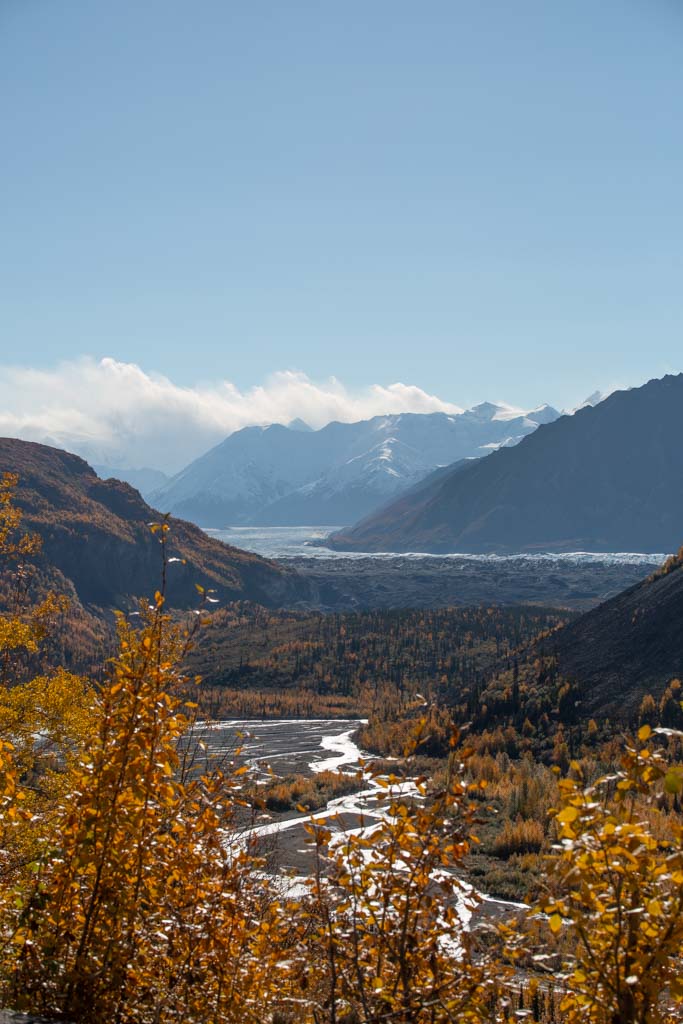
To be honest, Delta Junction (or Tok) is still pretty much a tiny town in the middle of nowhere so surely it won’t be your final stop.
Most will continue to Anchorage from Tok or Delta Junction with places of interest including Glenallen, Matanuska Glacier, Lion’s Head, Matansuka River, Palmer, and Eagle River.
Others will continue to Fairbanks. There aren’t a lot of major stops between Delta and Fairbanks but the drive is scenic.
A small portion will opt to head on down to Valdez, taking the Richardson in the opposite direction than those headed to Fairbanks. Stops en route to Valdez include Chitina and McCarthy- the gateway to Wrangell St. Elias National Park (though both these are a bit off the main route), and Thompson Pass.
Ready to Take on the Alaska Highway?
Ask any Alcan-related questions in the comments section below.
Need Travel Insurance for Alaska & Canada?
Start shopping plans over at battleface , my go-to travel insurance choice, or over at World Nomads .
More Posts From Canada & Alaska
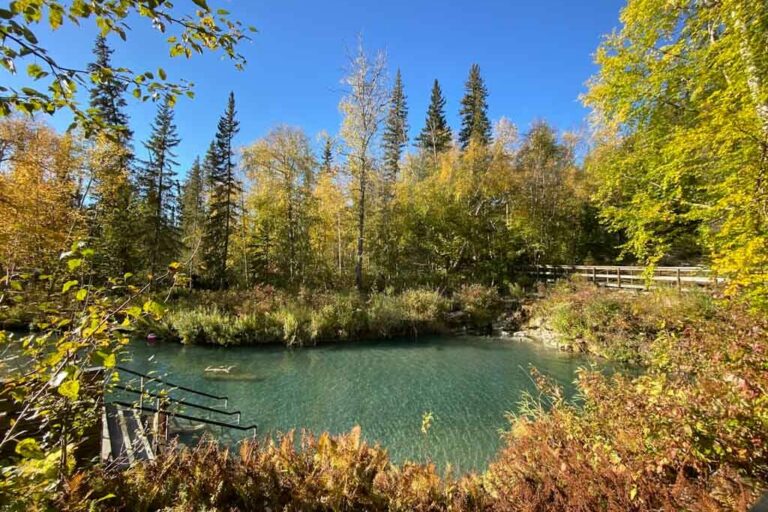
Visiting Liard Hot Springs
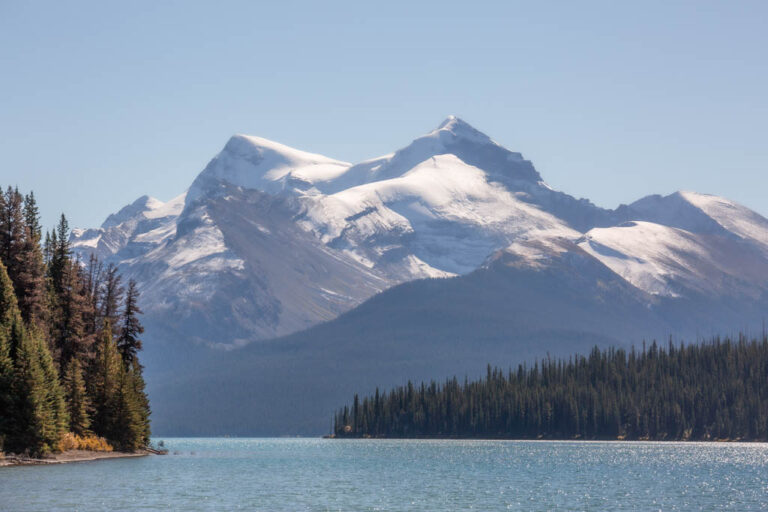
A Comprehensive Guide to Jasper National Park
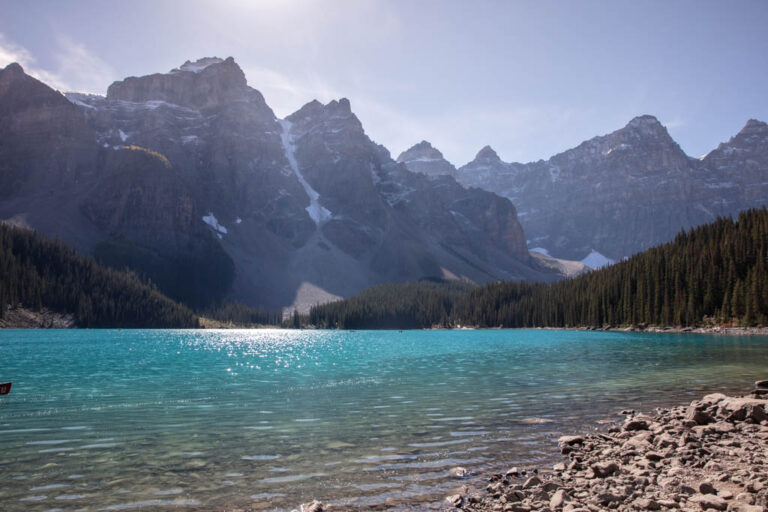
A Guide to Banff National Park
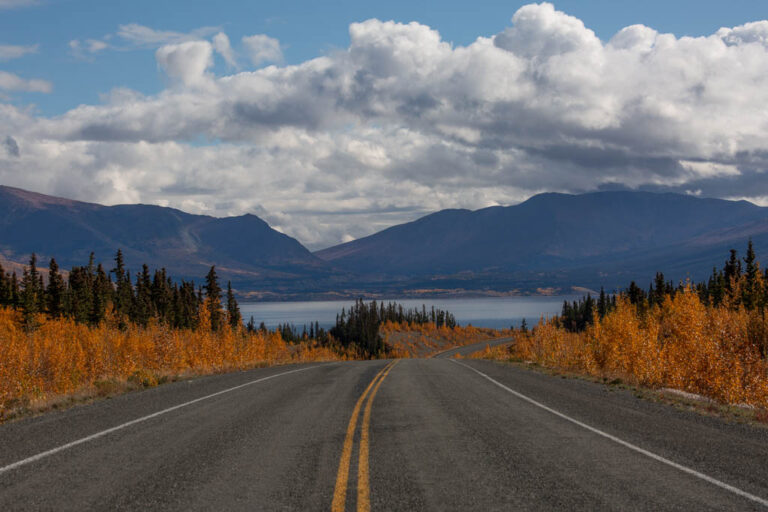
Peyto Lake: Everything You Need to Know Before You Go to Banff’s Most Beautiful Lake
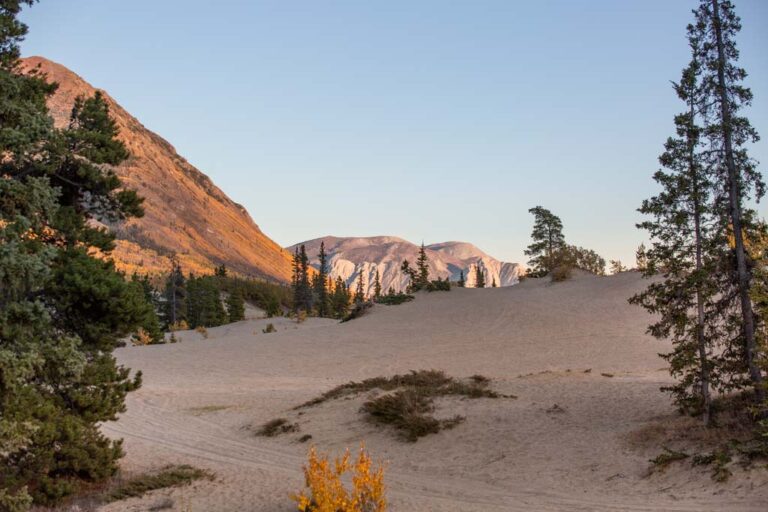
The Carcross Desert: One of the World’s Smallest Dune Fields
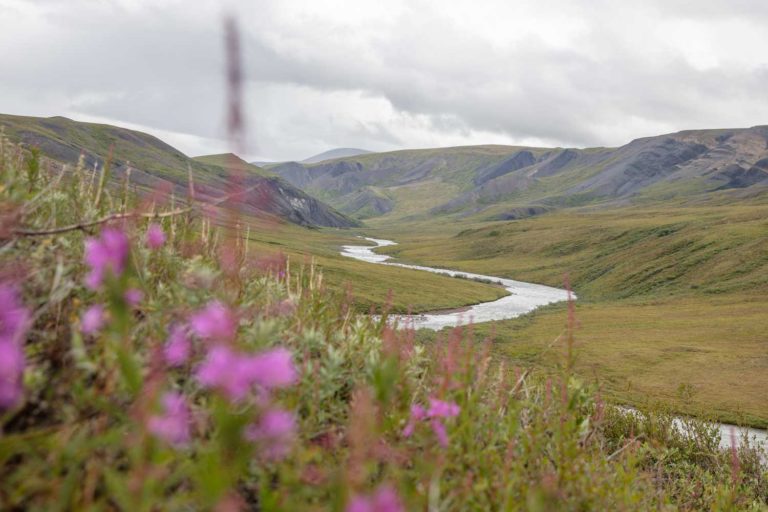
A Day Hike Into ANWR
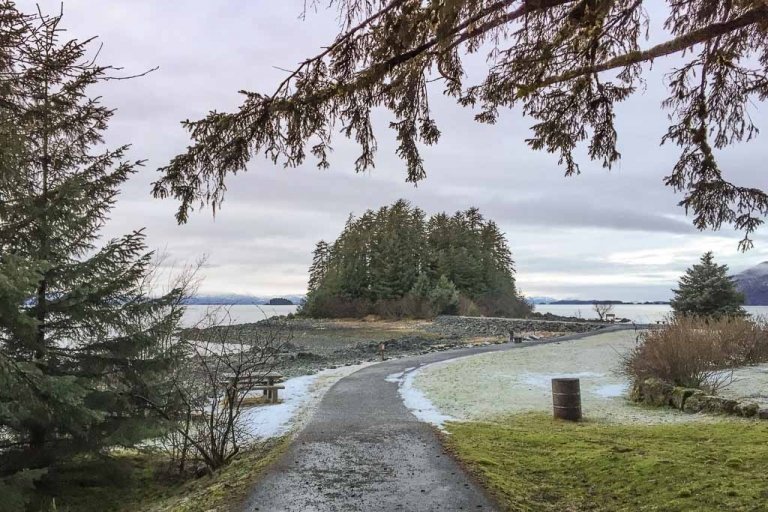
Shrine of St. Therese In Juneau, Alaska
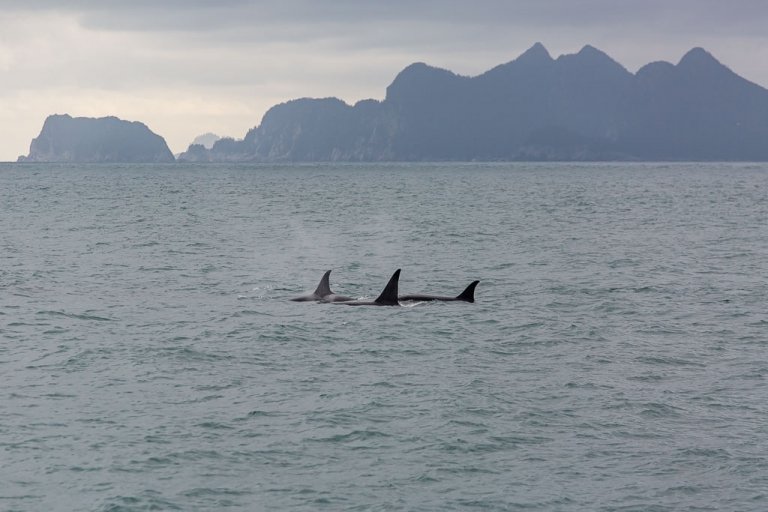
The Best Way To Explore Kenai Fjords National Park: Major Marine Tours
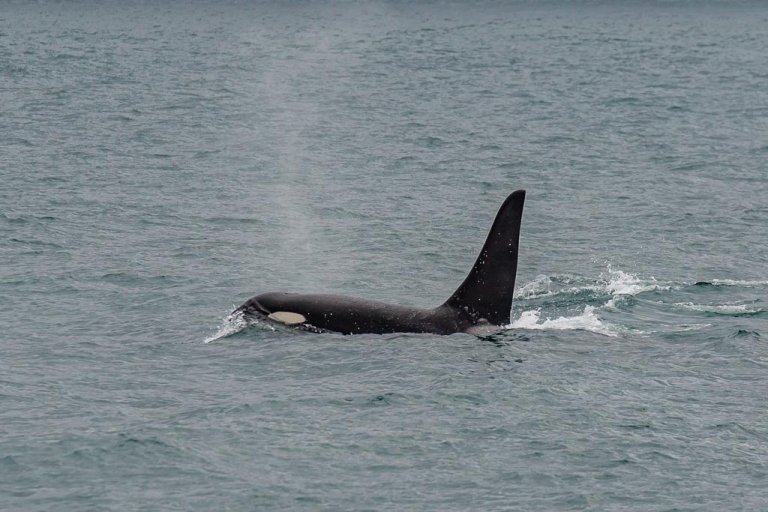
Kenai Fjords National Park Travel Guide
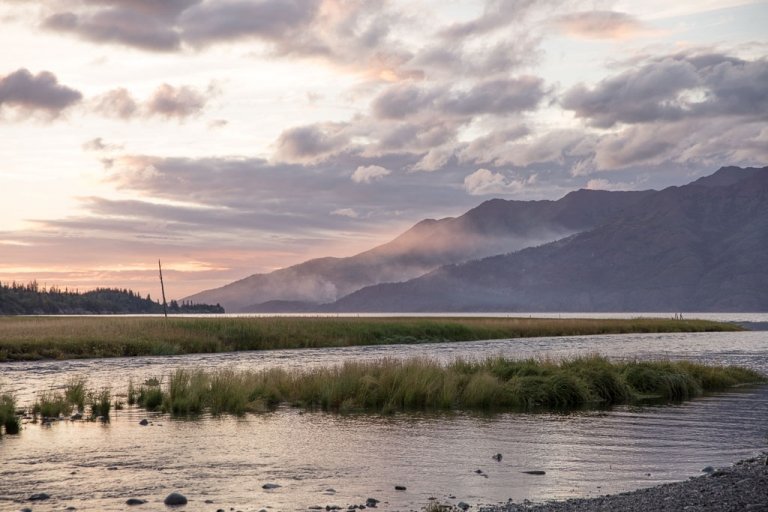
A Quick Guide To Hope, Alaska
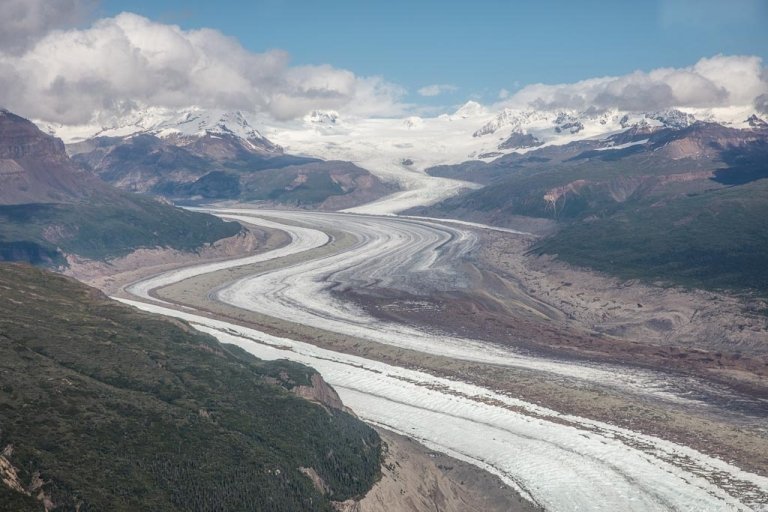
Wrangell St. Elias Road Trip, Alaska
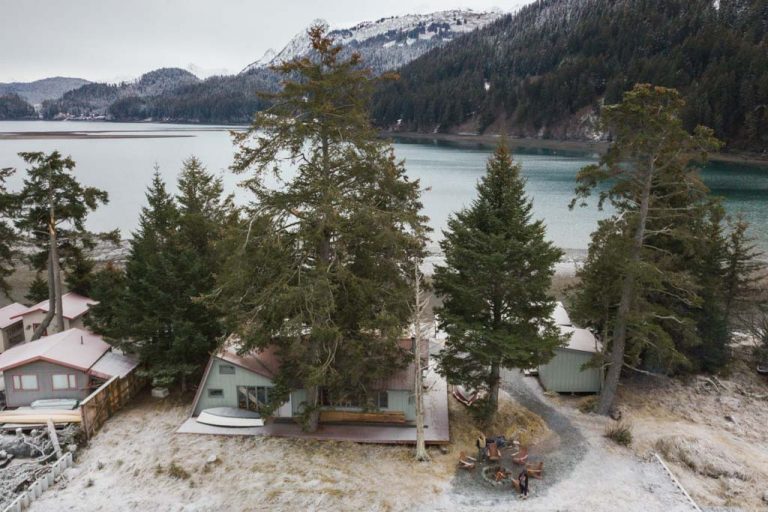
The Perfect Coastal Alaskan Winter Getaway: Between Beaches

Best Hostels in Anchorage, Alaska

Free places to Ski & Snowboard Near Anchorage
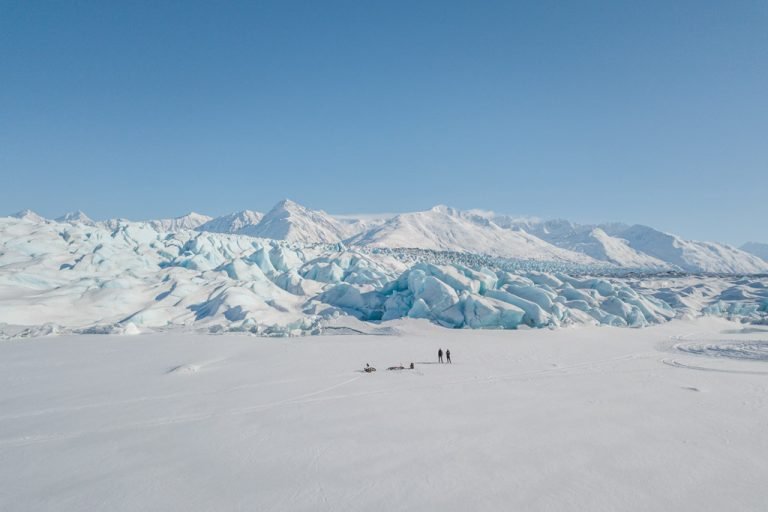
Biking to Knik Glacier in the Winter

How Much Does It Cost To Travel In Alaska?
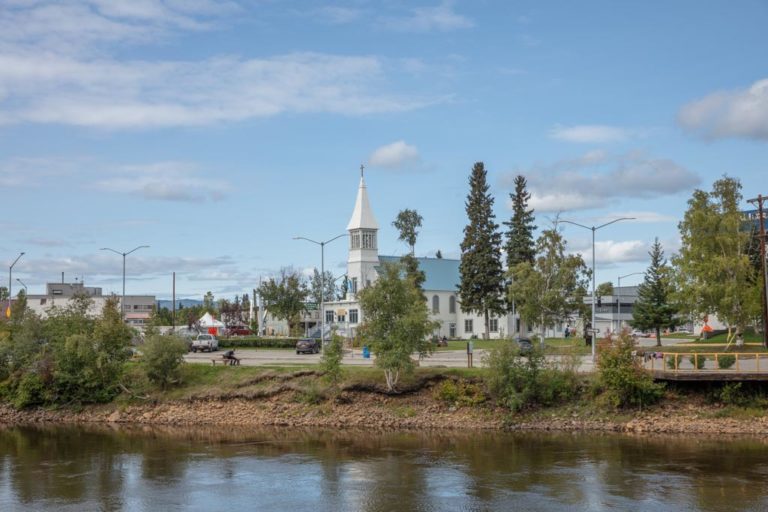
Fairbanks Travel Guide + 13 Things To Do In Fairbanks
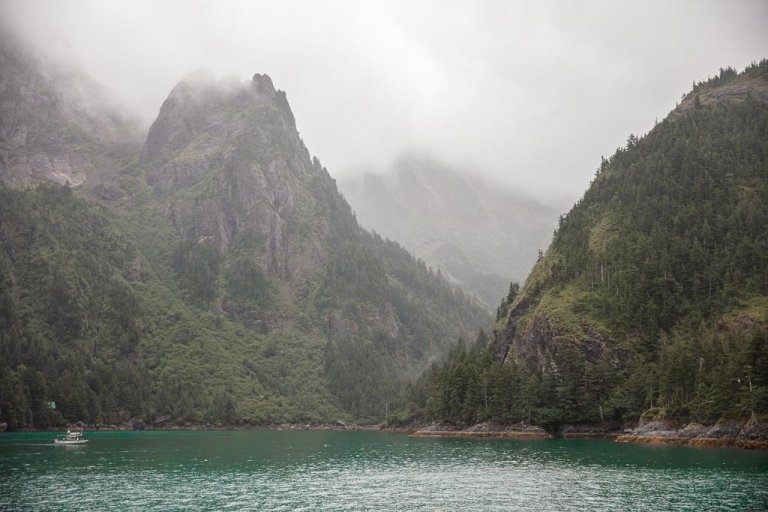
Kayaker’s Cove: My Favorite Escape From Seward

Homer Travel Guide + 14 Things To Do In Homer
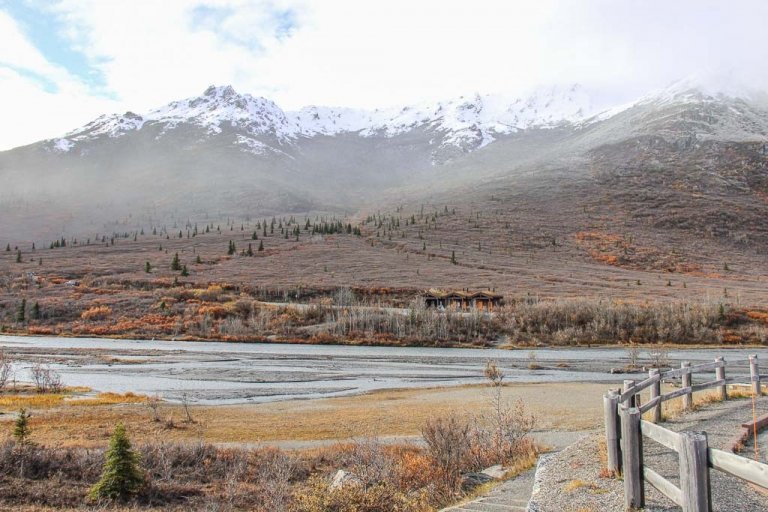
How To Get A Denali Road Lottery Permit

The Best Places To See The Northern Lights in Alaska
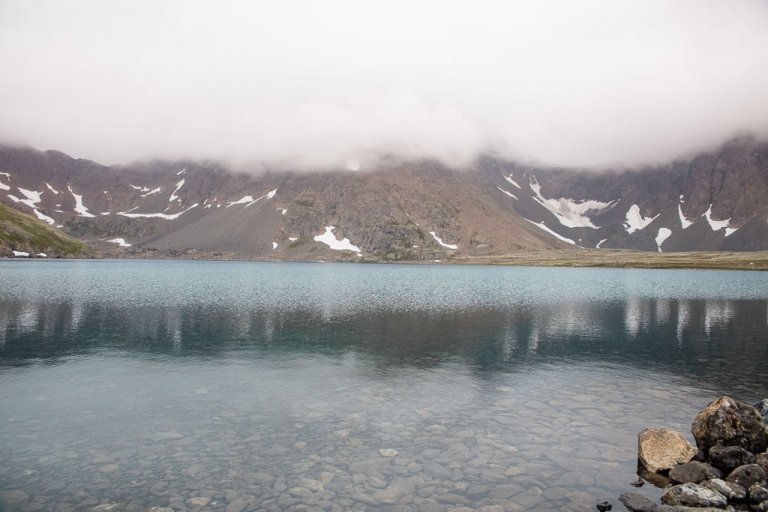
The Rabbit Lakes Hike In Anchorage, Alaska
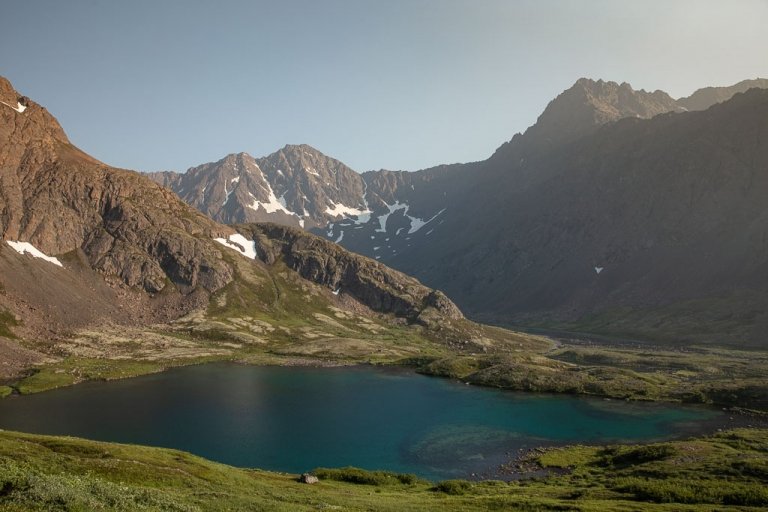
Williwaw Lakes Hike In Anchorage, Alaska
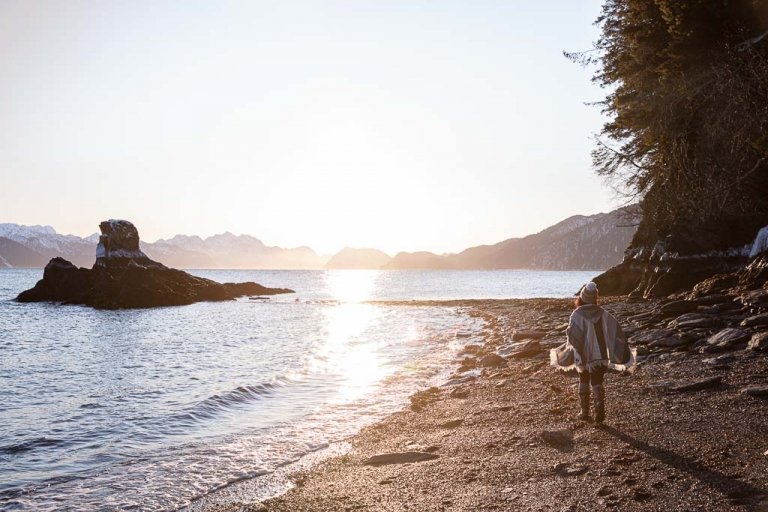
Seward Travel Guide + 18 Things To Do In Seward
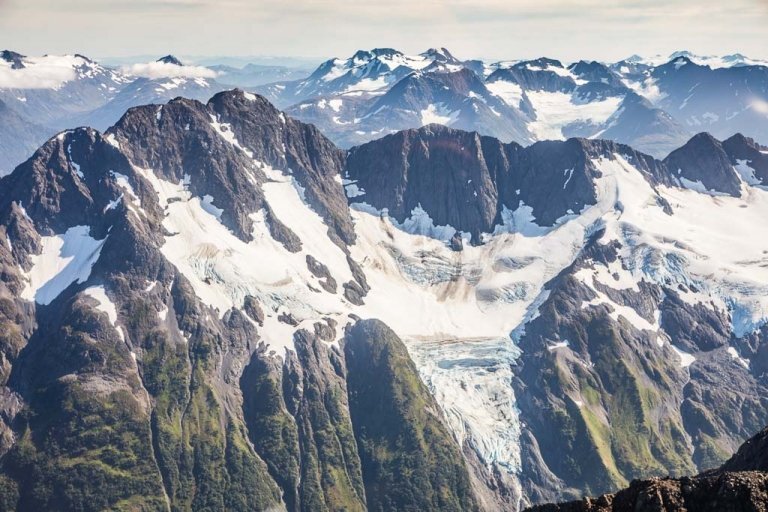
34 Best Things To Do In Alaska
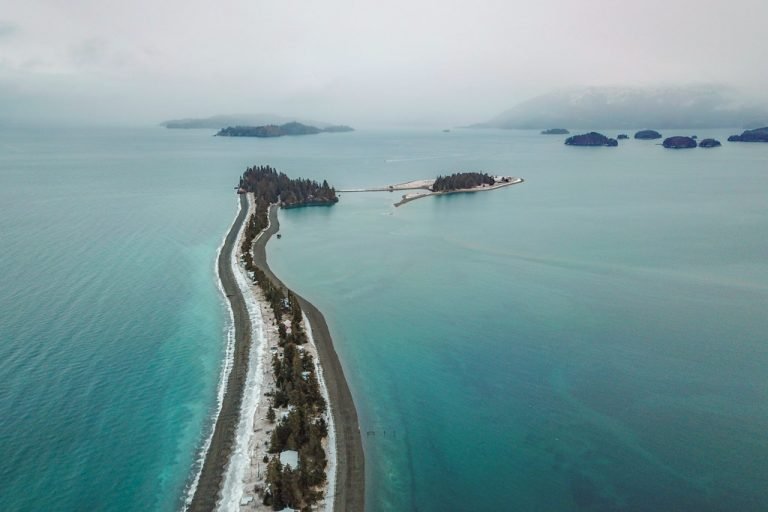
MacDonald Spit, My Favorite Coastal Alaska Destination

Juneau Travel Guide + 19 Things To Do In Juneau

Visiting Virgin Creek Falls In Girdwood, Alaska
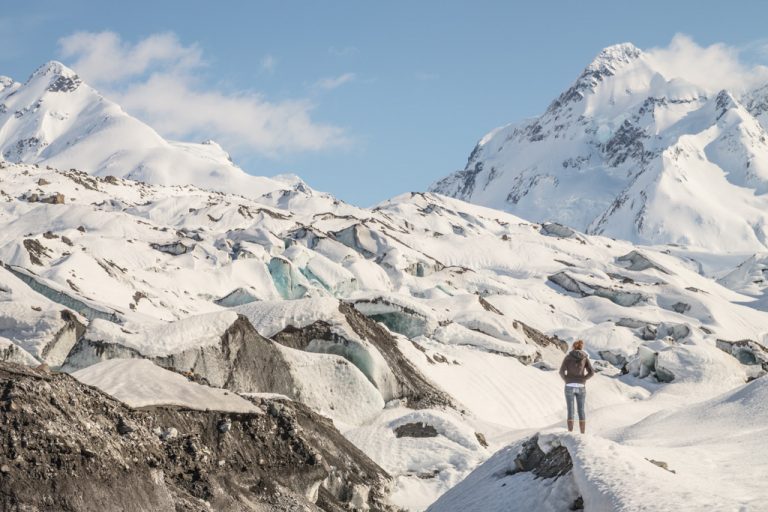
The Ultimate Alaska Travel Guide
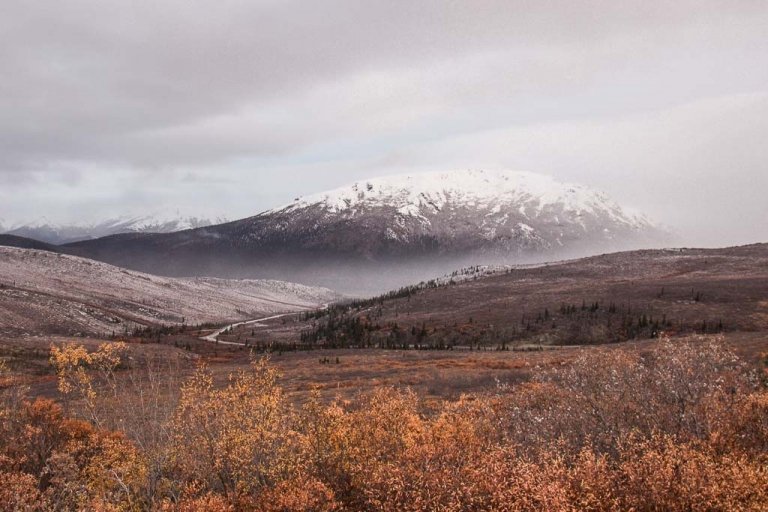
Denali National Park Travel Guide + 14 Things To Do In Denali
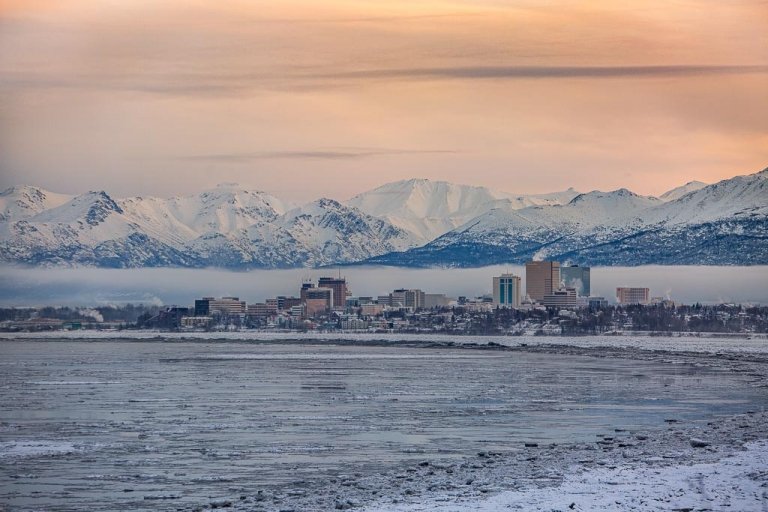
Anchorage Travel Guide + 20 Things To Do In Anchorage

K’esugi Ridge Hike in Denali State Park, Alaska
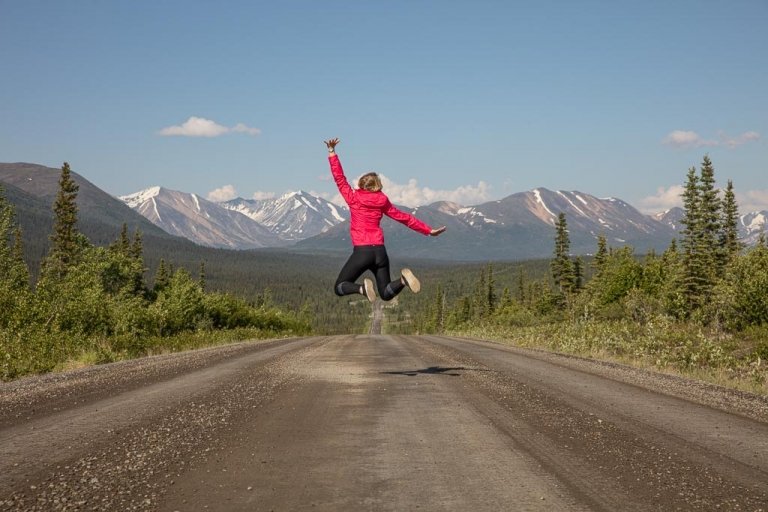
The Ultimate Alaska Road Trip Itinerary

Free Things To Do In Anchorage

The Reed Lakes Hike In Hatcher Pass, Alaska

10 Reasons to Visit Alaska

Kenai Peninsula Road Trip

Eagle & Symphony Lakes Hike, Alaska
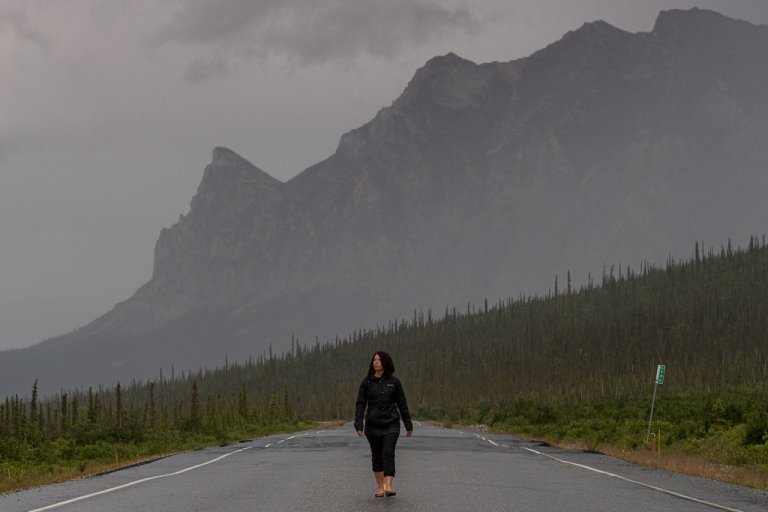
The Dalton Highway Road Trip
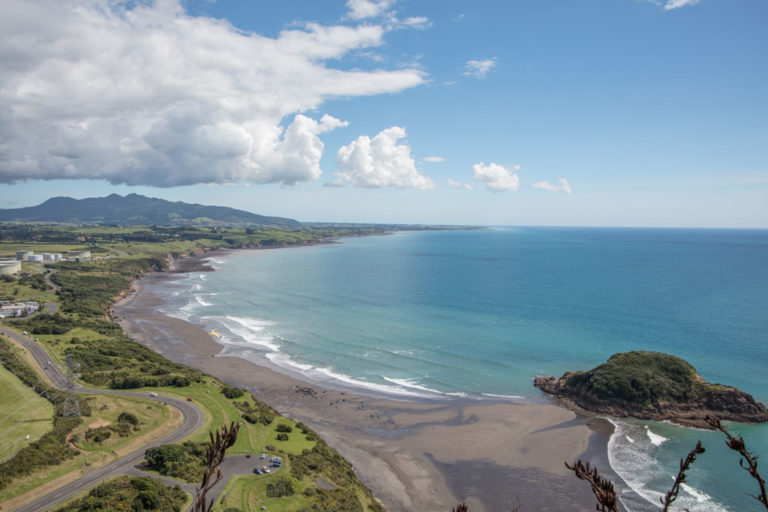
The Best Road Trips In The World

Snowbird-Bomber Hike in Hatcher Pass
10 day alaska itinerary.
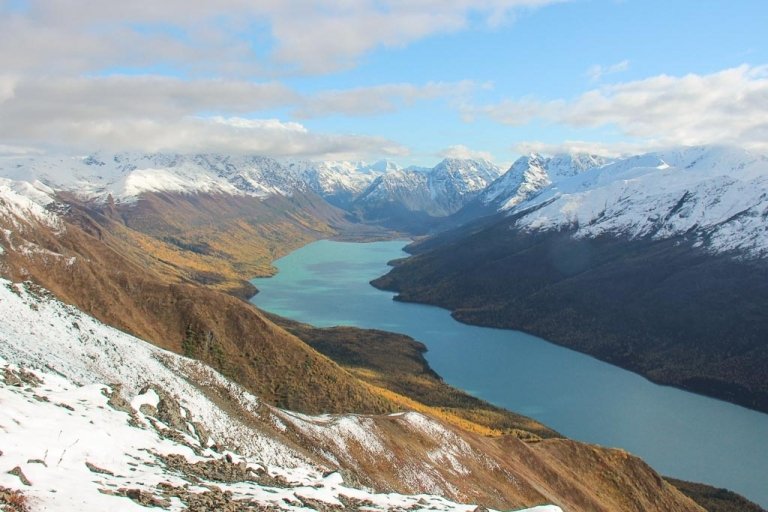
Twin Peaks & Eklutna Lake
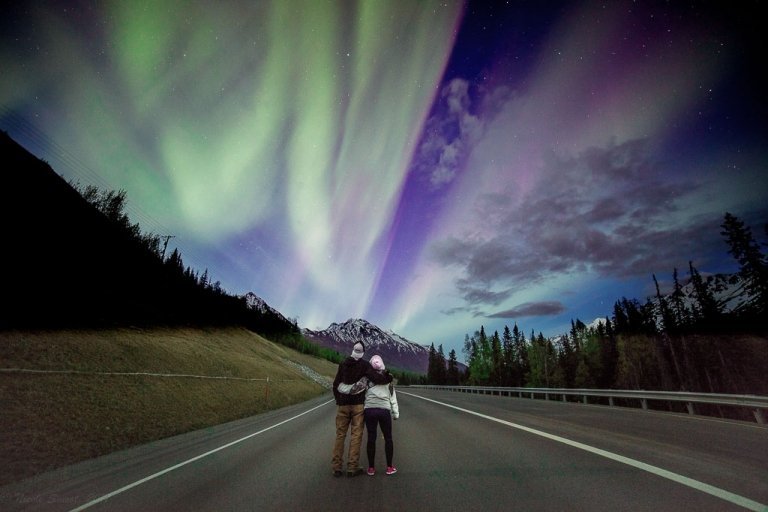
9 Tips For Viewing The Aurora
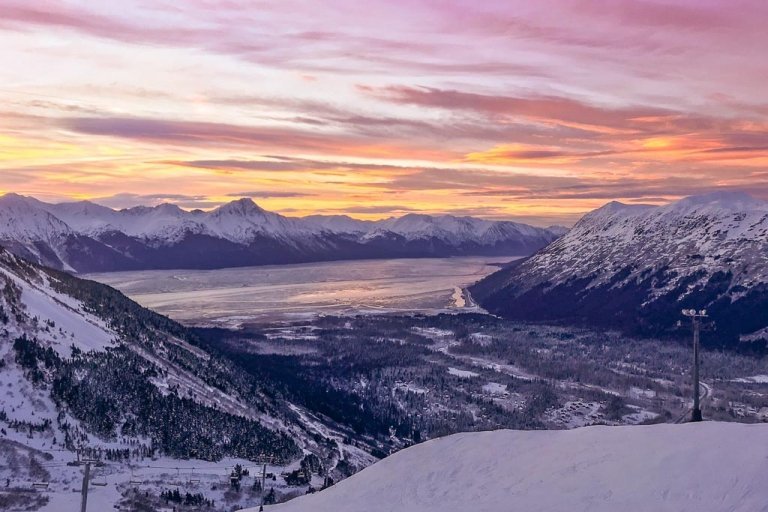
Girdwood Travel Guide + 5 Things To Do In Girdwood, Alaska
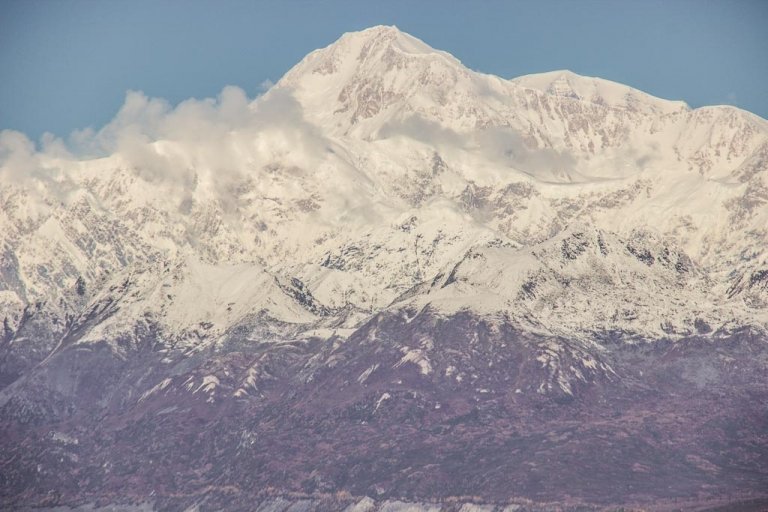
Anchorage To Fairbanks Road Trip: One Week In Alaska

The Big Loop Alaska Road Trip
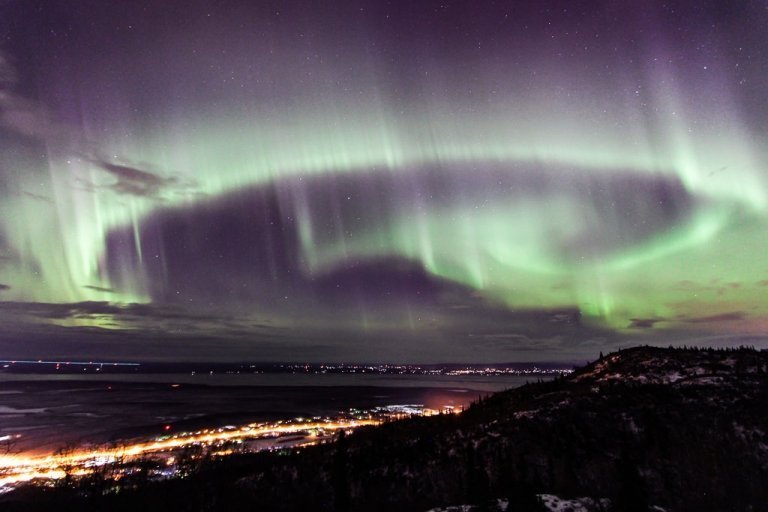
2 Day Anchorage Itinerary

Hiking The Mint-Bomber Traverse
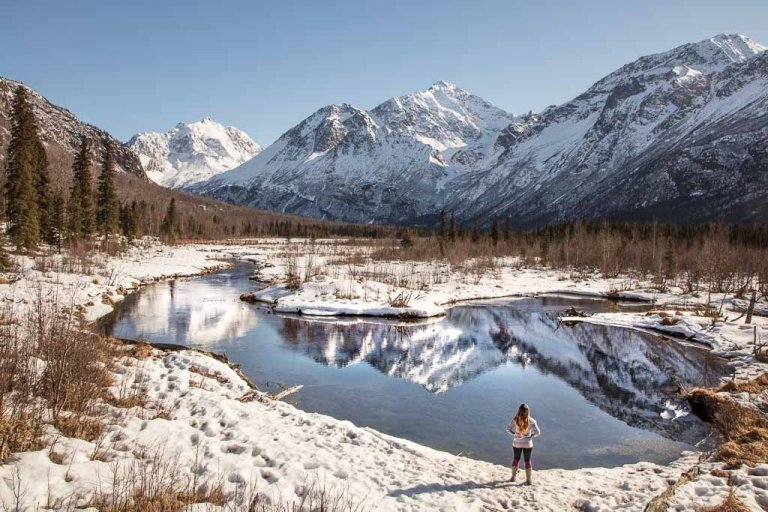
Travel Alaska On A Budget
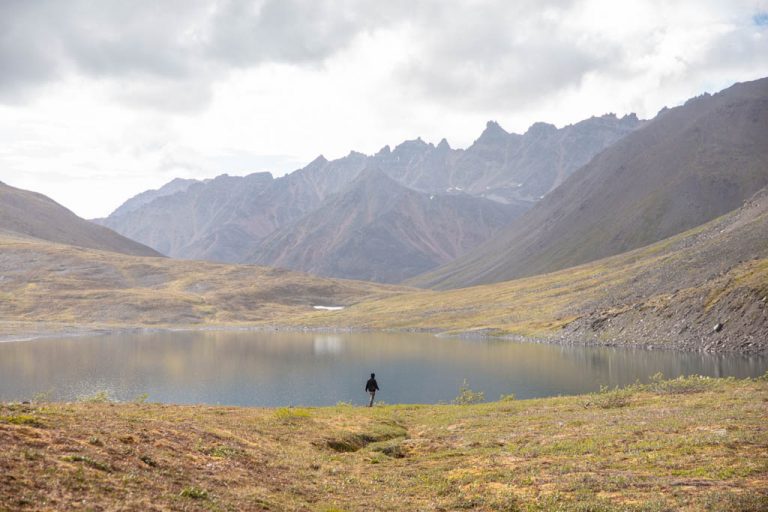
How To Visit Gates of the Arctic National Park
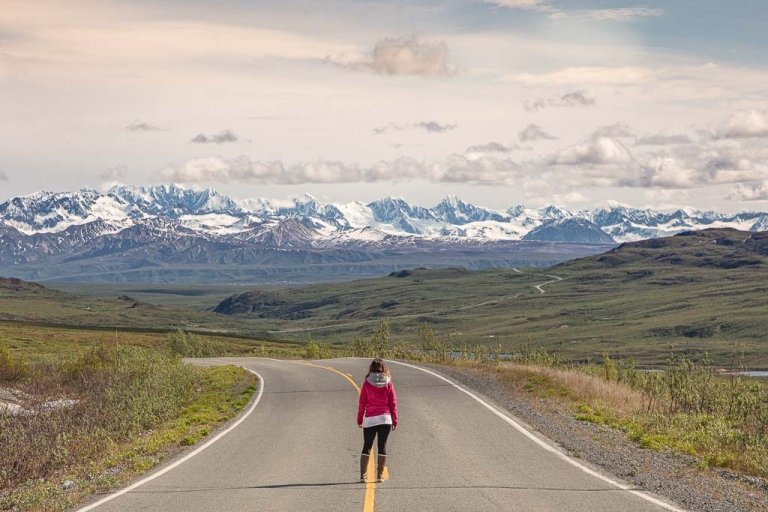
A Guide To The Denali Highway
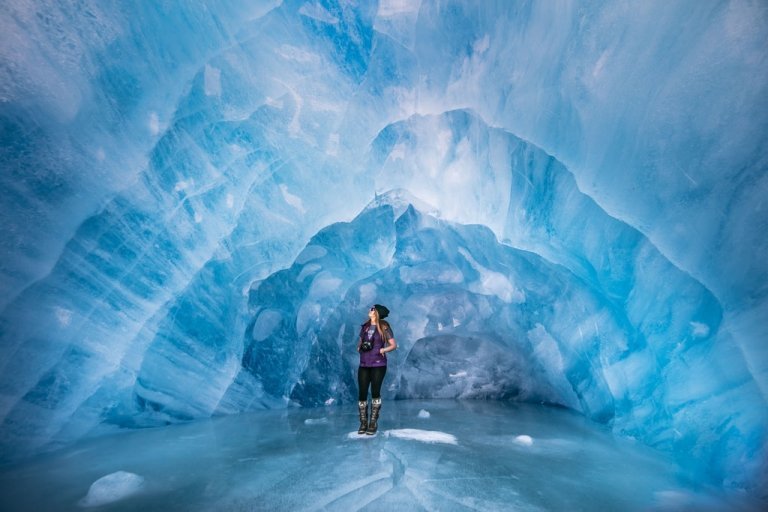
Visit Spencer Glacier On The Whistle Stop Train
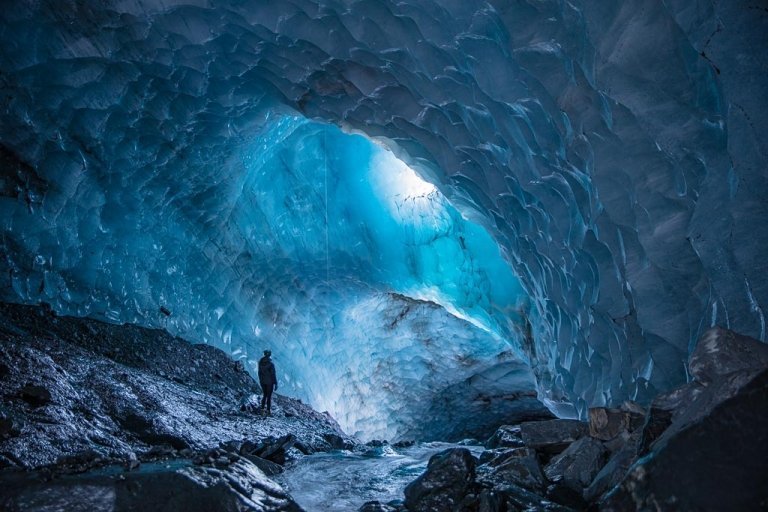
Visiting Byron Glacier
Leave a comment cancel reply.
Your email address will not be published. Required fields are marked *
Notify me of followup comments via e-mail. You can also subscribe without commenting.
This site uses Akismet to reduce spam. Learn how your comment data is processed .
- 1-888-425-1737
- Find a Tour
What You Need for Crossing the Canadian Border from Alaska
May 12, 2015
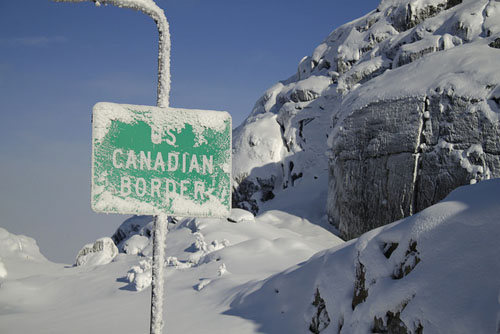
You’re ready to visit Yukon from Alaska, or you’re headed there from “outside” (what Alaskan residents call the lower 48 states). Travel across the border is a fairly uncomplicated process, and Canadians are friendly and happy to have you visit. But remember you’ll need your passport (yes, even Americans) and maybe have a few other things to consider, depending on whether you’re entering the country by plane, train, bus or car, and if you’re visiting from somewhere other than the states. Here’s what you will need and what you might expect when you’re visiting Yukon.
For Americans: Your passport
If you’re an American citizen who’s visiting Canada, you can pack light: All you need is a valid passport. American visitors don’t need a visa for visits of less than 6 months. But remember that most countries now require your passport to be valid for 6 months after you plan to visit – so if your passport is going to expire soon, it’s better to renew . Various fees apply depending on the type of renewal, but in general, adult renewals cost $110. If you need it processed quickly, that’s extra.
If your vacation is a family trip, keep in mind that minors age 16 to 18 are required to have passports unless they’re traveling with a school group, sports team or similar organization. Children ages 15 and under must have a birth certificate. Divorced and separated parents should bring documents showing legal custody of the children.
Crossing the border to visit our Canadian neighbors is mostly simple and straightforward. However, there’s one thing to note: If you have a criminal record outside Canada, you might have trouble entering the country – even if you were convicted of a misdemeanor or alcohol-related offense. You might first need to obtain an “approval of rehabilitation.” Find out here whether you need to take action and how to proceed, and learn all of the ins and outs about traveling to Canada here.
If you’re visiting from another country
If you’re not American and you’re ready to plan your visit to Canada, you will need a valid passport and you will probably need a visa as well. The type of visa you need depends on the purpose of your visit – business or pleasure? You might need to apply for a visa in person at an embassy or consular in your country. Some foreign visitors can apply for visas online or by mail. Check VisaHQ.com for the most current visa requirements. The site has a searchable database by nationality and country of residence to help you determine what the requirements are for entry to Canada.
What happens at the border
When you’re entering Canada by air, you’ll have to fill out a CBSA (Canadian Border Services Agency) Declaration card, which will be given to you by flight attendants. Some travelers entering the country by bus, boat or train also will receive these cards, which seek information about you, why you’re visiting and what you’re bringing into the country. Your family will only need to fill out one card collectively.
If you’re entering by car, a border patrol agent will ask to see your valid travel documents and may ask questions about your travel plans and what you may be bringing into the country. If you’re traveling with your pet, make sure you check Canada’s travel requirements for pets before you go. Canada has special requirements for animals entering Canada, even if you’re just passing through. In general, dogs and cats need proof of rabies vaccination to enter Canada.
Check on current border wait times here.
If you’re a frequent visitor
You like to hop into Yukon and catch a show at Diamond Tooth Gertie’s every now and then. It might behoove you to apply for the NEXUS card, a special travel card for low-risk, pre-approved travelers, produced through an agreement between the U.S. and Canadian governments. The card expedites your border crossings and simplifies your frequent travel to Canada. The NEXUS card is accepted at border crossings from key entry points to Canada from the lower 48 and at many Canadian airports.
Now that you’re ready to plan your visit to Alaska and Yukon. You’ll be glad you planned for this simple trip across the border.
See current Gray Line Alaska specials.
- Log in/Log out (Opens in new window)
- All content
- Rural Alaska
- Crime & Courts
- Alaska Legislature
- ADN Politics Podcast
- National Opinions
- Letters to the Editor
- Nation/World
- Film and TV
- Outdoors/Adventure
- High School Sports
- UAA Athletics
- National Sports
- Food and Drink
- Visual Stories
- Alaska Journal of Commerce (Opens in new window)
- The Arctic Sounder
- The Bristol Bay Times
- Today's Paper (Opens in new window)
- Legal Notices (Opens in new window)
- Peak 2 Peak Events (Opens in new window)
- Educator of the Year (Opens in new window)
- Celebrating Nurses (Opens in new window)
- Top 40 Under 40 (Opens in new window)
- Alaska Spelling Bee (Opens in new window)
- Alaska Craft Brew Festival
- Best of Alaska
- Spring Career Fair (Opens in new window)
- Achievement in Business
- Youth Summit Awards
- Teacher of the Month
- 2024 Alaska Summer Camps Guide (Opens in new window)
- Holiday Bazaar Guide (Opens in new window)
- 2024 Back to School (Opens in new window)
- Alaska Visitors Guide 2024 (Opens in new window)
- Bear Paw Festival 2024 (Opens in new window)
- 2023 Best of Alaska (Opens in new window)
- Alaska Health Care (Opens in new window)
- On the Move AK (Opens in new window)
- Senior Living in Alaska (Opens in new window)
- Youth Summit Awards (Opens in new window)
- Alaska Visitors Guide
- ADN Store (Opens in new window)
- Classifieds (Opens in new window)
- Jobs (Opens in new window)
- Place an Ad (Opens in new window)
- Customer Service
- Sponsored Content
There are plenty of options for late-season getaways, both in Alaska and out of state
Aboard the Spirit of Matushka sightseeing boat, a visitor demonstrates how much she loves glacier ice. Holgate Glacier is in the background. (Photo by Scott McMurren)
Fall is in the air, but can’t you hear it? It’s summer’s last gasp.
Last week, on a drive from Anchorage to Seward, the temperature gauge in the car showed a chilly 40 degrees. That’s a great indicator to bring your gloves, your hat and an extra layer on your next adventure.
Seward stands out as a perfect late-season getaway. Both Major Marine Tours and Kenai Fjords Tours offer a 20% discount to Alaska residents for sightseeing cruises into Kenai Fjords National Park. The longer six-hour cruises into the park operate through Sept. 29 (Major Marine stops after Sept. 22). Cruises leave Seward’s small boat harbor around 11:30 a.m.
If you don’t want to drive, take the Alaska Railroad. The schedule lines up nicely with the departures in Seward — and the train station is less than a five-minute walk from the harbor.
Starting Sept. 4, lower “value season” pricing applies for train fares. Between Anchorage and Seward, the rate drops to $108 one-way, or $220 one-way for Gold Star service. Gold Star travelers get dinner on board, plus a couple of adult beverages. Also, there’s an outdoor viewing platform and glass-dome ceilings.
Don’t go to Seward without visiting the Alaska SeaLife Center. It’s always a treat to see the animals they’re caring for: sea lions, seals, seabirds ... even an octopus. Recently, the center’s team began caring for a Pacific walrus calf. The center offers visitors an up-close look at the diverse ecosystem of Resurrection Bay, including halibut, crab, salmon and seabirds. Kids who are visiting love to check out the “touch tanks” with sea anemones and other tidepool critters.
[ Rescued walrus calf is alert and ‘sassy’ after seemingly being left by her herd in Utqiagvik ]
A female Steller sea lion swims in the giant tank at the Alaska Sealife Center in Seward. (Photo by Scott McMurren)
Farther down the Kenai Peninsula in Homer, Land’s End Resort sits at the end of the Homer Spit. Beginning Sept. 13, Land’s End offers a “Getaway” special for $179 per couple. The price includes overnight accommodations, one entree for each guest at the Chart House restaurant, plus one glass of wine or beer.
You don’t have to drive all the way to Homer for an adventure, although the leaves are turning. In Girdwood, Alyeska Resort offers a 30% discount for Alaska residents. Alyeska’s Nordic Spa is available for either an all-day hydrotherapy package or a discounted evening access plan.
The all-day spa option starts at $109 per person and the “Twilight Soak” plan starts at $89 per person. Spa-goers have access to the outdoor pools, saunas and steam rooms. Massages are extra, but there’s a 20% discount available on select early-morning or evening times.
Another popular option at Alyeska is to ride the tram up the mountain. A stand-alone ticket on the tram is $43 for adults. But if you want to ride for free on Sept. 30, just bring two cans of food. Alyeska Resort hosts a one-day end-of-season food drive.
“Last year we hosted more than 600 people,” said Abbey Brau, the resort’s marketing manager.
If you want a perfect view of Turnagain Arm while enjoying lunch, check out the “Ride and Dine” package. For $68 per adult, the package includes a tram ride and a $30 credit at the Bore Tide Deli.
Are you heading to Seattle? The Emerald City is often Alaskans’ first stop, especially for sports fans. The big Apple Cup football game between the University of Washington Huskies and the Cougars from Washington State University is slated for Sept. 14 at Lumen Field . The Seattle Mariners are playing the San Diego Padres Sept. 9-11. And the Seattle Seahawks are facing off against the Miami Dolphins on Sept. 22.
There are plenty of other sporting events in Seattle, including women’s basketball, hockey and soccer.
Live music performances are also a big draw for travelers to Seattle. One of my favorite artists, Kacey Musgraves, is playing at Climate Pledge Arena on Sept. 20.
Do you just need to fly south of the border for a taste of Mexico before the snow flies?
Make sure your passport is in order. Then take a look at these three Mexican destinations: Santiago de Queretaro, Aguascalientes and Leon.
These three cities are not on the coast. Rather, they’re in central Mexico along old colonial trading routes. Aguascalientes is known for its hot springs but also has lots of colonial architecture in the center of town.
The town of Santiago de Queretaro, founded in the 16th century, is a commercial center. But the center of town was declared a UNESCO World Heritage Site, in part because of the geometric street plan.
Leon is the most populous city in the Mexican state of Guanajuato.
Although I have not been to any of these destinations, the flights are really cheap between Sept. 5 and 28: $404-$414 round-trip on United Airlines. Add an $80 upcharge to main economy to pick your seats in advance. The cities are close to a couple of more popular Mexican destinations: Guanajuato and San Miguel de Allende.
Flights from Anchorage to Guadalajara are not much more, from $458 round-trip, starting Sept. 20.
Whether you set your sights on Seward, Seattle or the far reaches of Mexico, you’d better be quick. Because winter is coming.
Scott McMurren
Scott McMurren is an Anchorage-based marketing consultant, serving clients in the transportation, hospitality, media and specialty destination sectors, among others. Contact him by email at [email protected]. Subscribe to his e-newsletter at alaskatravelgram.com. For more information, visit alaskatravelgram.com/about.

IMAGES
VIDEO
COMMENTS
At first, the road was very difficult to travel and longer than it is presently. For example, it's now 2,323 km instead of 2,700 km. Also, the road is now fully paved, which means it's easier to travel. Driving to Alaska from the US. The only way to drive to Alaska is through Canada.
That closure has been extended until August 21. And the Canadian Border Services Agency announced Thursday that it will be adopting stricter rules for travelers passing through Canada to Alaska ...
However, with the use of the Alaska Marine Highway system, you can take your vehicle to Alaska without going through Canada - just a short 97 hours on the ferry. Q:) ... most map programs will have you travel through North Dakota into Canada to Edmonton and then finally join the Alcan Highway in Dawson Creek. Take this route if you like ...
Alaska Highway. The most popular route, the Alcan Highway stretches across 1,387 miles (2,232 kilometers) from Dawson Creek, British Columbia, to Delta Junction, Alaska. The pros of this route include more services, and a wider range of attractions. Highlights include Liard River Hot Springs and Muncho Lake. Cassiar Highway.
If you're originating from anywhere east of Colorado, most routes will send you through North Dakota into Canada. A far more scenic way that doesn't add much more time is to travel through Montana's Glacier National Park and then north into Canada. The distance between Seattle or Glacier N.P. to Fairbanks, Alaska is about 2,160 miles.
COVID-19 Travel Updates. Alaska's current state health advisories provide pathways for people to travel responsibly. Given the remote location of our state and the limited access that many rural communities have to healthcare facilities, we ask that you are diligent and follow all federal, state, and business COVID-19 travel protocols to keep ...
Make sure you are comfortable driving in very remote areas without services. To take this route to drive to Alaska, start in Seattle and follow the Trans Canada Highway (Highway 1) east around Vancouver. Follow the Trans Canada Highway as far as Cache Creek.
Dawson Creek, British Columbia marks the spot where the Alaska Highway (also called the ALCAN Highway or Alaska-Canada Highway) officially begins. To reach "Mile Zero," from the West Coast you'll drive north on Highway 97. From the Midwest, you'll most likely travel through Edmonton, if you're in a hurry.
Getting to Alaska without going through Canada is a challenge, but it is possible. The only road that connects Alaska to the rest of the world passes through Canada, which means that travelers must cross the border at some point.However, there are a few ways to minimize the amount of time spent in Canada and make the trip more manageable.
And then, at the border, the officer told her no one should have made any promises because he has the discretion to decide. Send us your questions — big and small, serious and trivial — about ...
However, those driving through Canada or traveling on a ferry or cruise ship with stops in Canada are required to carry one. All non U.S. citizens will need a passport and possibly other documents to enter. As with all travel, check with U.S. Customs and Border Protection and the Transportation Security Administration as you plan your trip.
In conclusion, while it is possible to drive to Alaska without going through Canada, it requires careful planning, flexibility, and an understanding of the available routes and options. Whether choosing the Alaska Marine Highway or exploring alternative ways, driving to Alaska offers a memorable travel experience filled with natural beauty and ...
CNN —. People who choose to travel to Alaska through Canada are facing stricter rules starting Friday. The additional entry conditions aim to crack down on those sneaking into the country to go ...
There are more than 100 land border crossings between the U.S. and Canada, and wait time to cross can vary widely. At most crossings, how long you wait depends on the time of day and the day of ...
Learn how to successfully drive from the US to Alaska through Canada with our practical guide. Featured topics include optimizing your travel route, strategic rest points, and tips to smooth border crossings. Plus, know the essential equipment to ensure a safe and thrilling journey. Remember, the right auto insurance can make all the difference.
Crossing the Canadian Border. Unless you fly to Juneau, the only way to or from our capital city is to drive through our neighbor to the east - Canada. Since July 2009, a law called the Western Hemisphere Travel Initiative requires more documentation to travel through Canada. The rules for travelling through Canadian waters are much the same.
If you are an American citizen who wants to enter Canada, you need to know the requirements and procedures for crossing the border. This webpage provides you with the information on what documents you need, how to apply for an eTA or a visa, and what to expect upon arrival. You can also find links to other useful resources on health, taxes, and benefits in Canada.
From that point, the Alaska Canada Highway covers 1422 miles (2288 Kilometers) along the Canadian Rockies and through the Yukon Territory. If you are planning on taking a road trip along the entire highway, you should realistically plan for a minimum of 5 days (4 nights) driving, and that's if you plan on driving 7-8 hours a day without ...
The most direct route to Alaska is to get on the Alaska-Canada Highway (AlCan) in Dawson Creek, BC. If you're coming from the middle or Eastern half of the lower 48 and you want to get there as fast as possible, head west in the US before going north to hop on the AlCan. Plan to spend at least four days traveling between Dawson Creek and ...
The Public Health Agency of Canada -- or PHAC -- collects health data on everyone entering the country through a system called ArriveCAN, which became mandatory for travelers to complete prior to ...
Mile 1203-1225: Beaver Creek (Canadian Border Post) to the Alcan Port of Entry (US Border Post) About 1 mile outside of Beaver Creek you'll pass the Canadian Border Post, you do not need to stop here (if you're leaving Canada and going into Alaska, if you are coming from Alaska and into Canada you will stop here).
Upon arrival at a one of the five identified ports of entry (POE), a traveller seeking to transit through Canada is required to substantiate their purpose for going to Alaska. Only in circumstances where the CBSA determines the traveller is transiting for a non-discretionary purpose (i.e. work or going to primary residence) will they be ...
Children ages 15 and under must have a birth certificate. Divorced and separated parents should bring documents showing legal custody of the children. Crossing the border to visit our Canadian neighbors is mostly simple and straightforward. However, there's one thing to note: If you have a criminal record outside Canada, you might have ...
The longer six-hour cruises into the park operate through Sept. 29 (Major Marine stops after Sept. 22). ... Don't go to Seward without visiting the Alaska SeaLife Center. It's always a treat ...